






















UPLIFTING RISING & ESTABLISHED FILMMAKERS + ENTERTAINMENT LEADERS REGARDLESS OF AWARDS, EDUCATION, OR STATUS WE ALLUDE TO OUR OWN STORIES

Tony Bui is a Vietnamese-born American film director, most known for his 1999 film Three Seasons, which debuted at the Sundance Film Festival and became the first film to win both an Audience Award and the Grand Jury Prize.

Keshia Hannam is the Editor in Chief of Eastern Standard Times and a multi-faceted filmmaker. EST, a global company, creates video content that challenges narratives about Asian people and culture — both at home and throughout the diaspora.
-
Karen Joseph Adcock is an award-winning television and feature writer in the industry. Her work includes: The Bear, Atlanta, Swarm, Yellowjackets, BoJack Horseman, Undone, Tuca and Bertie, and more.
Shruti Parekh is an Atlanta-bred, Brooklyn-based filmmaker and artist. Her short film, Zari, won the Grand Jury and Audience Award at NewFest. She is also a finalist and winner of the CAPE x Janet Yang Productions x Julia S. Gouw Short Film Challenge.
Gabriela Dematteis is an Emmy® winning producer and filmmaker. She worked for various companies such as VICE Media, Refinery29, Tribeca Film Festival, Sundance Institute, Warner Bros. Television, CBS Television, Paramount Pictures, Participant Media, and more.
Davis Grant writes a piece on interactive cinema, detailing the history of sight, sound, taste, smell, and touch at the movie theaters. He discusses Francis Ford Coppola’s new film, Megalopolis (2024) which received a variety of mixed reviews.

Maria Murphy writes about her earliest memories when she discovered her love for comedy. Saturday Night Live has been a staple in comedy television for several decades. Maria discusses the differences between the SNL of her childhood and SNL today.

Jacob Chandler writes an analysis of today’s filmmaking industry and why rising filmmakers are not always able to get their foot in the door. He describes it akin to “window shopping”. When studios shop scripts around, the filmmakers on the other end are always hoping for the best possible outcome.
UNDERRATED: UPLIFTING RISING FILMMAKERS & ENTERTAINMENT
Vahan Bedelian is a filmmaker and is best known for his short, The K-Town Killer which screened at the Tribeca Film Festival and the UTA Next Generation showcase. Vahan is an alumnus of the graduate production program at Loyola Marymount University.
Mehrin Saleem is a junior entertainment lawyer who’s on her way to becoming a Hollywood attorney. She is passionate about deal-making in film and television and currently holds a position at Disney. She interned at many major film studios. Mehrin is a graduate of Loyola Marymount’s law school.
Makayla Rabago is a junior lawyer who’s on her way to becoming an attorney. She currently holds a position at DLA Piper where she learns about deal-making, contracts, and various cases. Makayla is driven and determined to make the film legal industry a better place. Makayla is a graduate of Loyola Marymount’s law school.
LIBBY MOREHOUSE
Libby Morehouse is a junior lawyer who’s on her way to becoming a talent attorney. With a combined background of law and theatre, she is committed to learning more about intellectual property and how to protect artists’ rights. She currently holds a position at Gordon Rees Scully Mansukhani. Libby is a graduate of Loyola Marymount’s law school.
THE HEAD FACULTY OF LOYOLA MARYMOUNT UNIVERSITY
SHANE ACKER CHAIR OF ANIMATION
GLENN GEBHARD CHAIR OF PRODUCTION
MIRANDA BANKS CHAIR OF FILM, TELEVISION, AND MEDIA STUDIES
RODGER PARDEE CHAIR OF RECORDING ARTS
WEIKO LIN GRADUATE DIRECTOR OF WRITING FOR THE SCREEN
MICHAEL DALEY GRADUATE DIRECTOR OF WRITING AND PRODUCING FOR TELEVISION
ROCHELLE WEBB CO-DIRECTOR OF MASTER IN ENTERTAINMENT LEADERSHIP
MICHAEL KANG GRADUATE DIRECTOR OF PRODUCTION

Hello! My name is Milla Nguyen, the Editor in Chief and founder of Allusion Magazine. I’m beyond excited that you’re here. I am proud to say that this is our first ever issue. A couple of years ago, I thought of the idea for Allusion Magazine because I craved a sense of community, creativity, and purpose. Upon arriving to graduate school, I realized that it was hard for young filmmakers to get their feet through the door. Major publications mostly feature creatives who have high wealth, status, and a large social media following. I didn’t have this. Many of my peers didn’t either. Yet, I didn’t want to give up. At Allusion, I believe that everyone has

a right to tell their own story, no matter how big or how small. For our Vicarious Column, we interviewed many legendary filmmakers: Tony Bui, Keshia Hannam, Karen Joseph Adcock, Shruti Parekh, and Gabriela Dematteis. All of these artists continue to pave the way for young filmmakers. For the Underrated section, I interviewed accomplished friends and respected colleagues: Vahan Bedelian, Mehrin Saleem, Makayla Rabago, and Libby Morehouse. Ranging from rising filmmakers to entertainment legal professionals, they gave great insight to the future of the industry and how they plan to facilitate progress. Our brilliant team of writers who are all LMU students: Maria Murphy, Davis Grant, Kahlil Maskati, Asmar Isayeva and Jacob Chandler spent many hours writing articles and interviewing faculty. I’m extremely thankful and lucky to witness their creativity.

I’d like to express my thanks to my team: Evan Odinsoff (Director of Visual Media), Kurtis Williams (Director of Content), Anna Lei (Director of Events), Anusha Natarajan (Business consultant) for believing in the vision and for wantingtomaketheworldabetterplace.Thismagazineanditsmessagewouldnotbewhatitistodaywithoutmykey team of members and friends. Finally, a tremendous thank you to Weiko Lin, my mentor and Faculty Advisor, for beingtheprofessorwhotoldmethatourgoalsareworthaccomplishing.WhenItoldhimthatIhaddoubtsaboutmy ideaandourmissiontohelpthecommunity,heencouragedmetokeeppushingforward.AndI’msogladwedid.
Thank you to all the faculty members who participated in the first issue. It is an honor to scratch the surface of your stories,andwearethankfultolearnfromeducatorswhocaresodeeplyabouttheLMUcommunity.
Last but not least, thank you so much to our fellow peers, our supporters online, and our readers all over the world. Thisissuewasmadewithlove,creativity,andgreatcare(maybesometears,justkidding).Wehopeyouenjoyourfirst issueandwe’reexcitedtobringyoumanymore.
Sincerely,
Milla NGUYEN
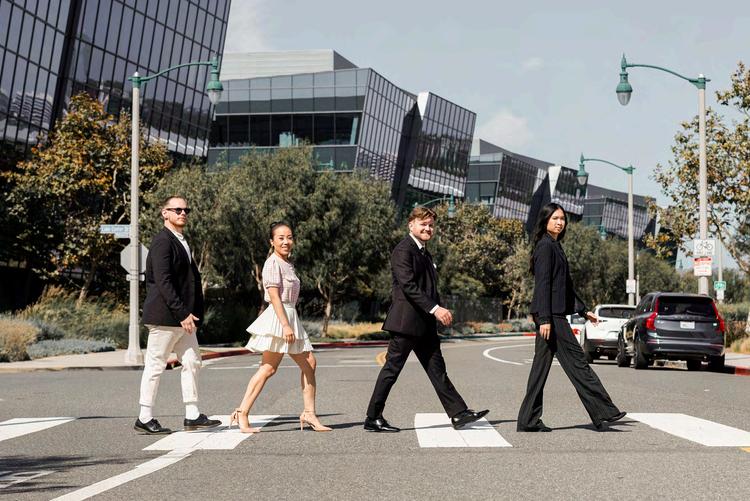
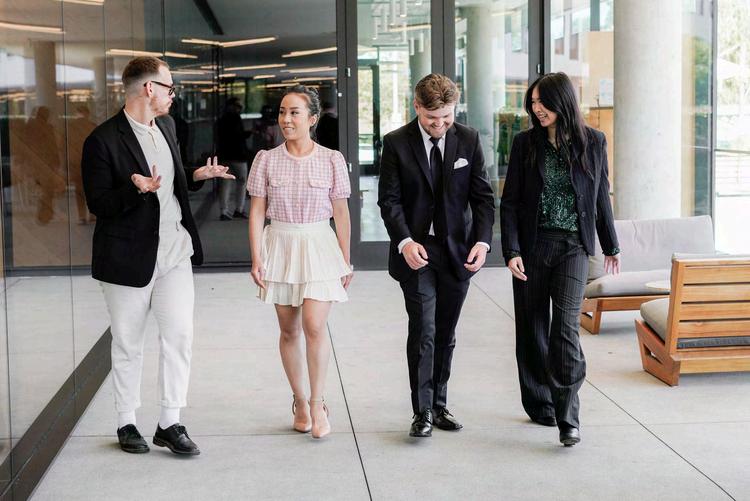
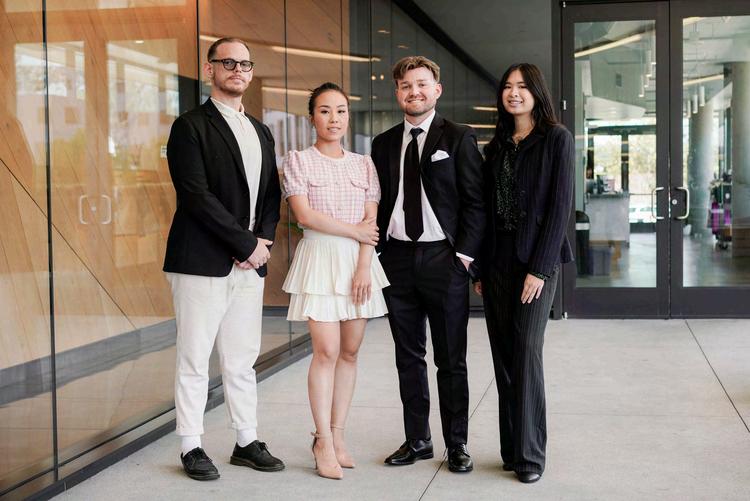
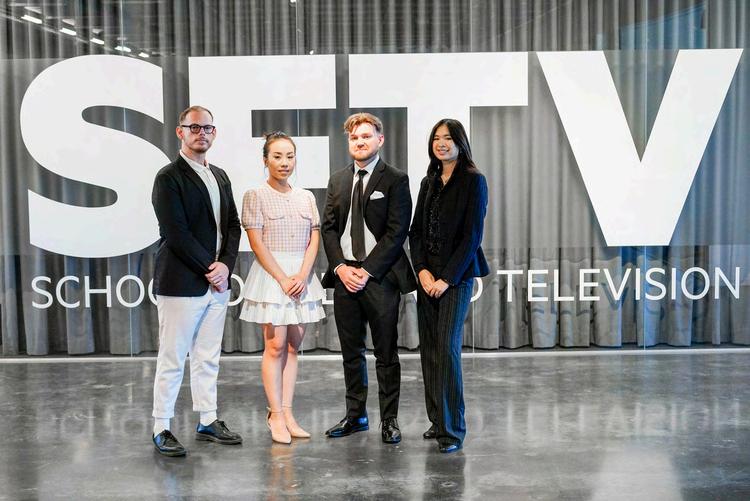
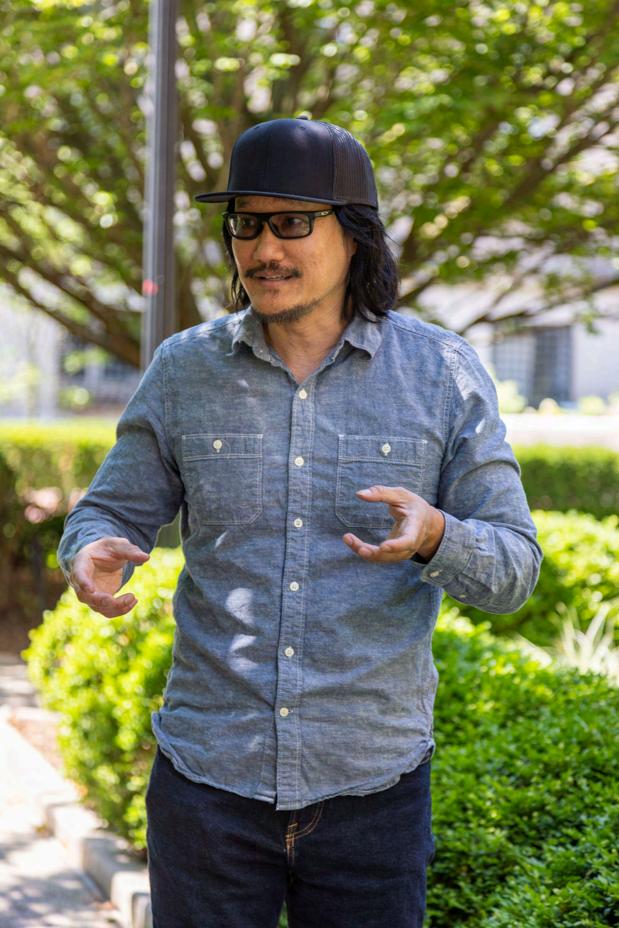



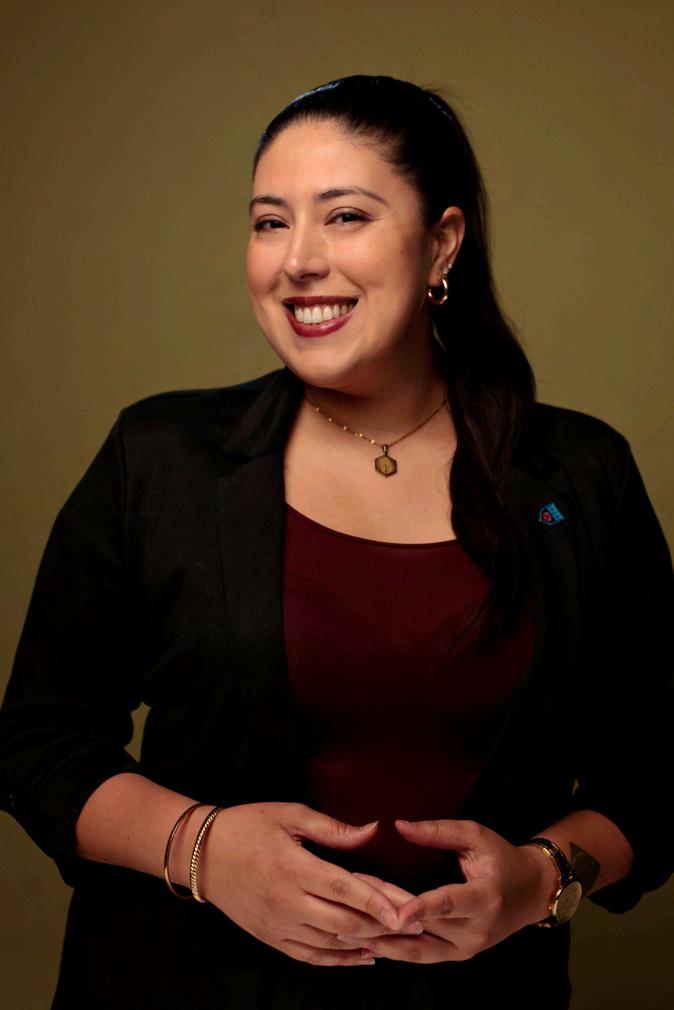
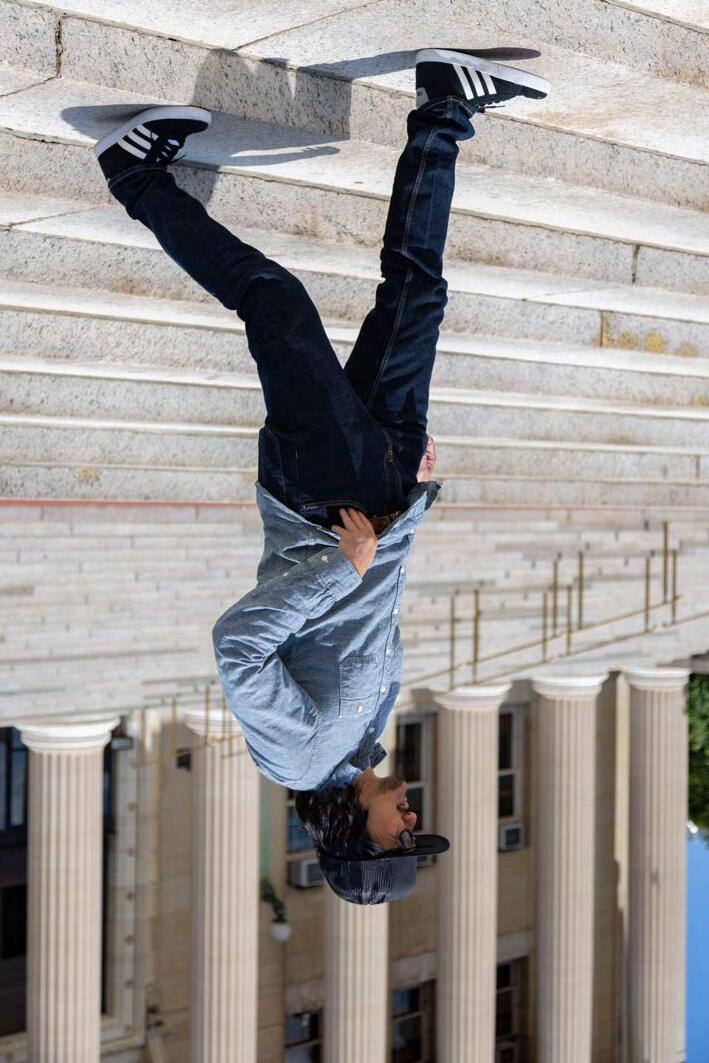

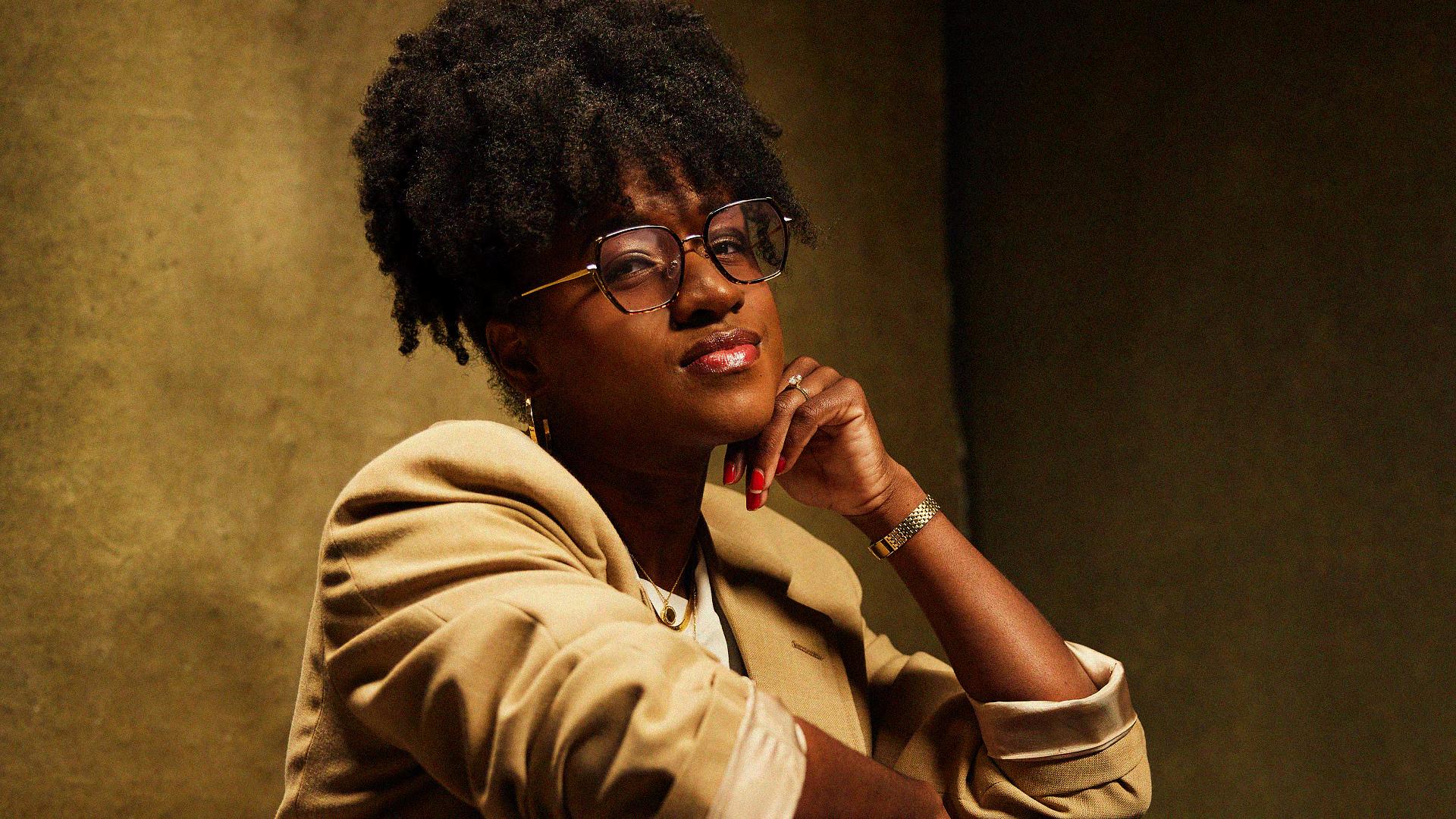


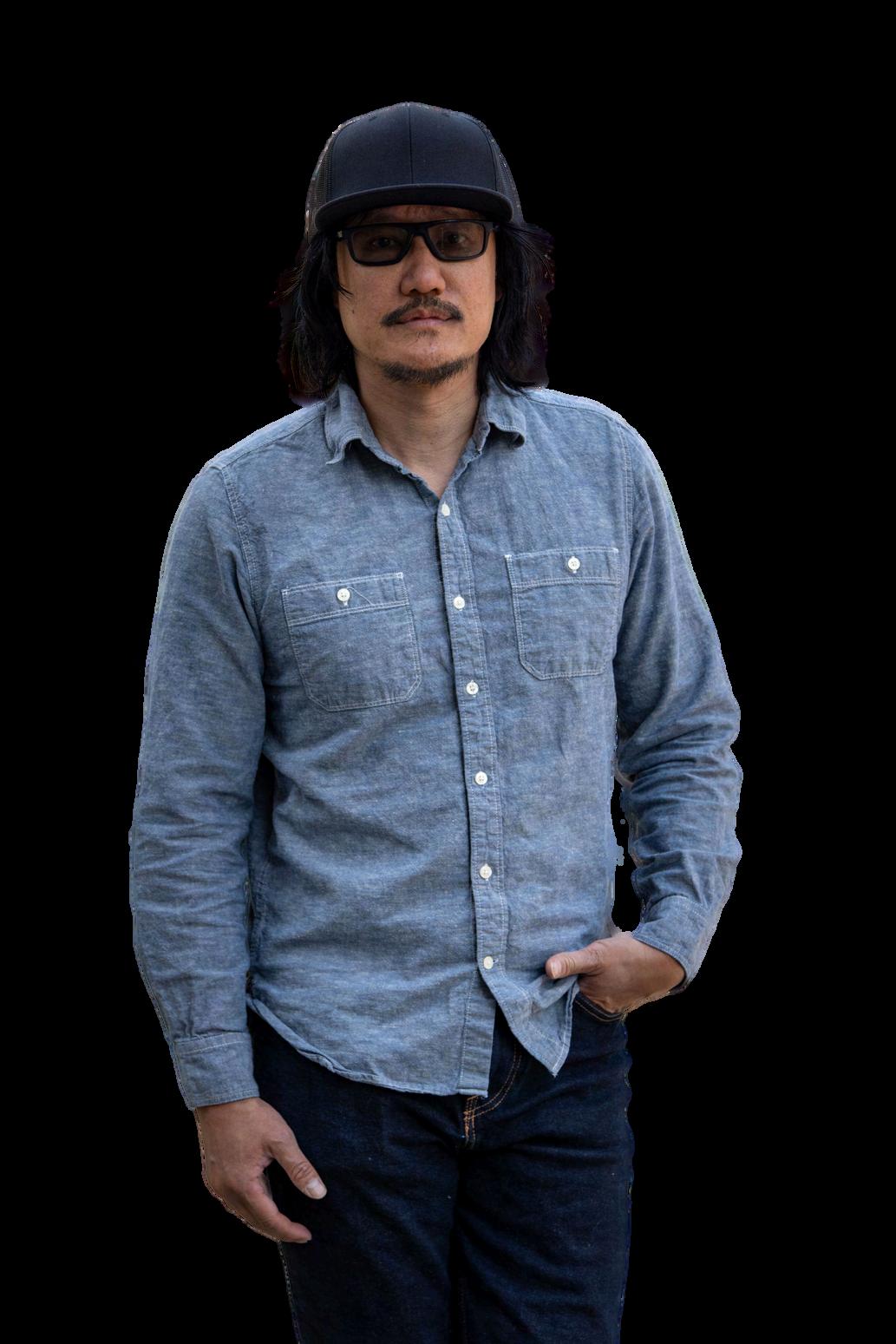








Writtenby:MillaNguyen
Photographyby:JulianValgora
Tony Bui’s Biography:
Tony Bui is an esteemed Vietnamese American filmmaker, and Artist-in-Residence and professor at Columbia University's Weatherhead East Asian Institute and School of the Arts. He had also taught as a professor at Loyola Marymount University and Fulbright University Vietnam. Tony Bui graduated from the film production undergraduate program at LMU, where he wrote, directed, and produced his award-winning short film, Yellow Lotus. He then went on to write and direct his feature film, Three Seasons, which also won the Sundance Film Festival’s Audience Award, Grand Jury Prize, and Best Cinematography award. This cemented his title as the first Vietnamese filmmaker to win the hearts of Sundance audiences. Tony was a recipient of the Humanitas Prize and an alumnus of the Sundance Institute's Screenwriting and Directing Labs. He has written and developed projectsforHBO,WarnerBros.,andNBC.







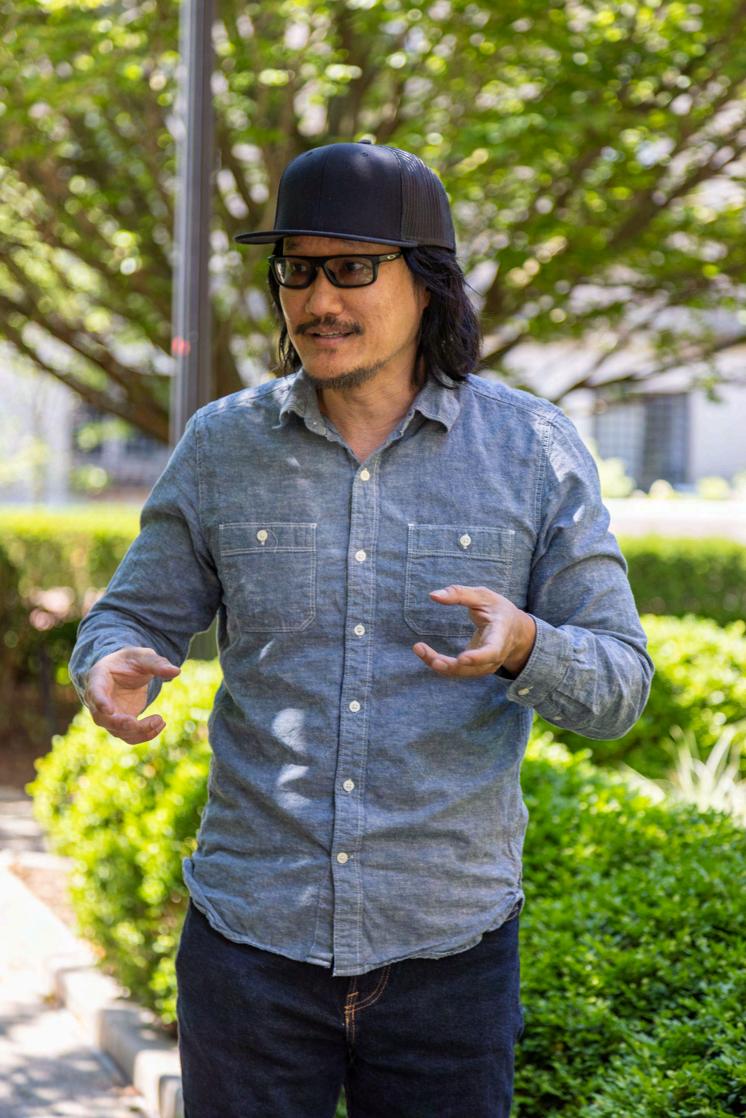
Author's Note:
I had the most remarkable opportunity to interview Tony Bui while in New York City. It is an honor to highlight Tony Bui as the cover star of Allusion Magazine's first issue and one of our Vicarious Column headliners. This article not only scratches the surface of Tony's many accomplishments but also reflects his fluid evolution: starting at ground zero, then evolving to a blossoming career, and winning some of the most prestigious awards in the filmmaking industry. Through it all, Tony Bui is a humble man of a few words, but it's because his words carry the heaviest of weight. At this point in time, Asian American filmmakers have received far more recognition and praise than they have in any other decade. Films such as Crazy Rich Asians, Everything, Everywhere, All at Once, and Parasite have broken records regarding East Asian diversityandentertainment.However,TonyBuiisapioneerwhopavedtheway andisstillcommittedtocontinuingthiswork.
I know Tony Bui as a respected filmmaker, but I also know him personally. The article is not enough to describe how impactful his work has been for young Vietnamese and Asian filmmakers in the space. During the Vietnamese Film Festival Gala (2024), he was honored with the Legacy Award. During his speech, he said, "Filmmaking was a difficult career to pick. It was hard. It was confusing. There was no formula to follow. But the important thing to remember is that cultivating the next generation of filmmakers is a way to carry onwhatwebuilt.I'dliketoacknowledgemycommunityforthat."Eventhough Tony accepted the award for his work, he made sure to acknowledge friends, family,andthesupportofhiscommunity.Heemphasizedthatworkingtogether iswhatcreatesalong-lastinglegacy.
Tony Bui grew up in Northern California and did not know he wanted to be a filmmakeratfirst.Manyofhisfriendswantedjobsinthetechworld.Hisparents wereVietnameserefugeeswhoimmigratedtotheUnitedStatesandlateropened video stores in California. Through these nostalgic memories, Bui recalled watching films, sorting VHS tapes, and speaking to customers about different filmmakers. It is here where his connection and love for cinema began. His parents told him that being a filmmaker was an unstable career and something thatothersdid,notVietnameserefugees.Theyfearedhewouldn'tsucceed.Atthe time,therewerenoVietnamesefilmmakerstopointtoasanexampleofaway

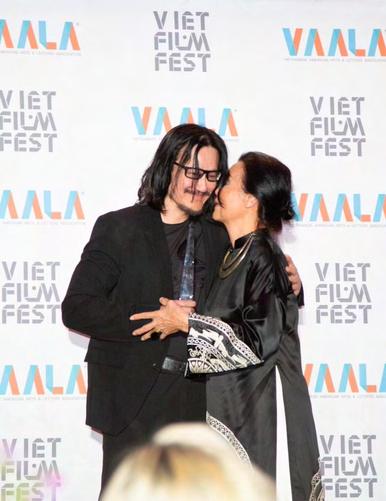

forward.Still,thisdidn’tstophim.TonyBui,abright-eyedyoungmanburningwithapassionforfilmmaking,went onasunnydrivewithhisfather,astoicmilitarymanwhoshoweddeepconcernforhisson'sdreams.Hetoldhisfather, "I would rather be a poor artist over a wealthy doctor. I want to create. I want to be a storyteller." His father didn't say one word on the drive back home. When they entered the house, his father turned to him and said, "Okay. I'll let yougotofilmschool.Let'sseehowyoudo."ThisiswhenTonyBui'sjourneybegan.Hewasacceptedintomanytop filmschoolsbutultimatelydecidedonLoyolaMarymountUniversity.Dayandnight,heimmersedhimselfinstudying thecraftandhowitcanaccesshisownemotionsandconnectwithpeople'sdeepemotions.
A memory close to his heart was when he traveled to Vietnam for the first time to visit relatives he had never known. Buiwasnineteenyearsold,barelyafull-fledgedadult.However,thetripchangedhisperspectiveimmensely.Hesaid, "In American media, I never saw anyone who looked like me. No one." He didn't know how much that affected his psyche and made him believe his own stories didn’t matter. When he passed through bookstores in Vietnam, the magazine covers featured Vietnamese people. Billboards and posters had Vietnamese faces. The theaters all had Vietnamese performers. This kind of representation had a profound impact on him. When he returned home, he wanted to tell more stories about people who looked like him. Further, everything he knew about the Vietnam War wasfromAmericanVietnamWarmovies.Hesaid,“MostAmericans'connectiontoVietnamisthroughwar.Andthe Vietnamese people were always portrayed as the enemy. We were always shown as savages or running through the jungle waiting to be shot at. We were never the heroes of any of these stories.” This led him to teach a class at ColumbiaUniversitycalledTheVietnamWarinAmericanandVietnameseCinematohighlightbothvoices.
Aftertheinitialvisit,Vietnamkeptpullinghimback,andhewouldfindeverychancehecouldtogo.Hekeptjournals and filled endless pages with thoughts and discoveries he had experienced on these trips. The journeys were both outwardandinwardashediscoveredasmuchabouthimselfashedidaboutthecountry.Thisledtohisundergraduate LMUthesisfilm, Yellow Lotus,whichfocusedontheimmenseeconomicandsocialchangesinpost-warVietnamatthe time.HethenreturnedtoSaigontoshootit.Buirecalled,"BeingatLMUwasasignificantfouryearsofmylife.Iate, drank, and breathed cinema and storytelling. LMU wasn't as well-known as the other schools so they were the underdogs.Ilikedthat.Becausetheywereundertheradar,LMUallowedstudentstomakefilmshowtheywantedto and encouraged location shooting. Even international filmmaking was possible. This was rare for American film schools at the time. Yellow Lotus would’ve never happened if I wasn’t studying film at LMU." During the lead-up to hisfilm Three Seasons,Vietnamwasconstantlychanging:fromawar-torncountrytoacountryofhealing.Later,the United States and Vietnam renewed diplomatic relations and trade which led to rapid westernization of the country. This became the central theme of Three Seasons. He elaborated, “Buildings and hotels started to rise in the city. The higher the buildings the longer the shadows they cast. Three Seasons was about the people who were stuck living in theselengtheningshadows.”HediscussedhisjourneydevelopingthefilmthroughtheSundanceLabsand


remembered when it won major awards at the festival. Back then, it was hard to find another Asian filmmaker in the room. This year, the 2024 Sundance Film Festival celebrated the 40th Anniversary of the festival. Three Seasons was chosen as one of ten films over the four decades to be returned for an encore screening as part of the festival’s anniversary celebrations. He was able to showcase the newly restored 4K version of the film, which had, up to this point,mainlyonlyexistedoncelluloidasitwasneverproperlydigitized.Hewasalsoinvitedtospeakontwopanelsat theSunriseCollective,anewgroupandspaceatSundancedesignedtosupportAsianfilmmakers.Thiswasdrastically different from the past when there were so few Asians at Sundance that you couldn’t even fill a room. Now, Asian filmmakershavetheirownspacetogather.
Simultaneously,BuiteachesatColumbiaUniversity.Iaskedhimaboutthedifferencebetweenhisexperiencesasafilm studentandafilmprofessor.Hesaid,"Iwanttoacknowledgethepowerandimpactofteachingthroughajuniorhigh teacher who changed my life, Mr. Curtis Schneider. He broadened my thinking and showed me there was so much to see and do outside of my immediate world. Without him, I wouldn't have learned early on that it was okay to look furtheranddiscovernewideasandpassions.Iwouldn’thavehadthecouragetobeafilmmaker."Buialsospokeofhis cinematography mentor, Ian Connor, an LMU professor. He said, "Ian Connor was, without a doubt, the most inspiringfilmprofessoroncampusandgavemetheconfidencetogotoVietnamandshoot.Hetoldmetogooutinto the world and to not be afraid of discovering new ideas, places, and locations." He discussed the filmmaking process andtheemergenceofnon-linearediting.IanConnortaughtBuidifferenteditingandfilmmakingtechniquesandways to see storytelling differently. He was the classic mad but brilliant professor. He prioritized personal storytelling and passionoverfollowingwhatothershaddone.
BuialsoservedontheboardofFilmIndependentformanyyearsandhelpedmentoryoungfilmmakers.Healsotaught at Fulbright University Vietnam as a Visiting Scholar and guest lecturer. He said that teaching allows him to share knowledgewithhisstudents,discovernewideasandconcepts,aswellasstrengthenthemwithinhimself.
TonyBuiiscurrentlyworkingonavarietyofprojects.AcriticalmissionoftheWeatherheadEastAsianInstituteand Columbia University is the legacy of the Vietnam War. The 50th Anniversary of the war’s end is in April 2025. He recently gave a speech on campus titled "War Trauma, Transformation, and Healing" at a hosted event. He brought Kim Phuc, the subject of the infamous “Napalm Girl” photo, to speak at the event. He also invited Nick Ut, the Pulitzer prize-winning photographer, to discuss his momentous “Napalm Girl” photograph. The institute prides itself on supporting the research of Asian studies, including media and literary works. Asian Scholars recently celebratedColumbia'slegacyofestablishinginternationalrelationswithworldleaders.Asiangovernmentleadersand delegationsoftentraveltocampustovisittheinstitute.Viceversa,Columbia'sscholarstraveltoAsiaforresearchand tofurtherrelationships.Inabroadersense,Buicollaboratedwiththeinstitutethisyeartocreateaseriesof talks


titled Conversations in Storytelling: Regional Voices, Global Impact. Over the summer, he traveled to Hanoi, Saigon, Singapore,HongKong,andBeijingtohostandmoderatediscussionswithprominentfilmmakersontheimportance of regional storytelling in a more globally connected world. His central theme for these talks was: "How can we use regionalstorytellingtobuildbridgesandfostergreaterunderstandingbetweenvastlydifferentcommunities?"
More recently, the General Secretary and President of Vietnam visited Columbia, the first time in history that the Vietnam leader spoke at an American university. Tony Bui led a cultural event called Unity Through Art for this historic visit as Artistic Director. Bui brought prominent American and Vietnamese musicians, poets, artists, and dancers together for a cultural celebration. With the politics of Vietnam and the United States being sensitive, he wanted to emphasize that the future is bright and that despite a complicated history, a path to healing is a path to growth.
Now,he'sworkingonhisnextfeaturefilmbasedontheiconic“NapalmGirl”photo.Ipickedhisbrainabouthisown feelings toward American media and shaping Vietnamese stories today. With the recent release of HBO / A24's The Sympathizer,theshowreceivedmixedreviewsandcommentarydueinparttothepoliticsoftheVietnamWar.Buisaid that war is complex and that each filmmaker should discover their own point of view. In the past, Vietnamese characters were often portrayed as caricatures and spoke gibberish in place of real Vietnamese. Since the nineteenth century, many Asian characters have been portrayed as sub-human. Cutting through this, Tony Bui explained that filmmaking is difficult and expensive. Vietnamese representation is always a work-in-progress and we should each do ourparttoimproveit.Itistheresponsibilityof all filmmakerstobeasauthenticaspossible.It'simportanttocriticize filmsandbesupportivewhenwecan;noworkcantrulybeperfect.
Finally,Iaskedifhehadanyonehewouldliketothankwhosupportedhisfilmmaking.Hewantstothankhisparents, whosacrificedtheirlivestogivehimandhissiblingsabetterfuture.Hesaid,“It’seasytoforgethowdifficultitwasto move to a new country, learn a new language, and start completely over. It's a testament to their strength and love.” Heisgratefultheyallowedhimtoattendfilmschoolandpursuehisdreams.Ashementionedbefore,CurtisSchneider and Ian Connor are two teachers who changed his life. He would also like to acknowledge Michelle Satter, the founding senior director of the Sundance Institute. He recalled being only twenty-two and getting the call from Michelle, known for hand-picking upcoming first-time filmmakers and turning them into superstars. Due to being a late entry, he missed the Sundance Labs deadlines. However, she was moved by his short film, Yellow Lotus and his screenplayfor Three Seasons. Sheinvitedhimtojointhelabsafterward.Hesaid,"MichelleSatteristhemostselfless, kind,andgivingpersonintheindustryIknow.Shechangednotonlymycareerbutalsomylifeforever.Herimpacton theindependentfilmworldcannotbeoverstatedandwillcontinueforalongtime."



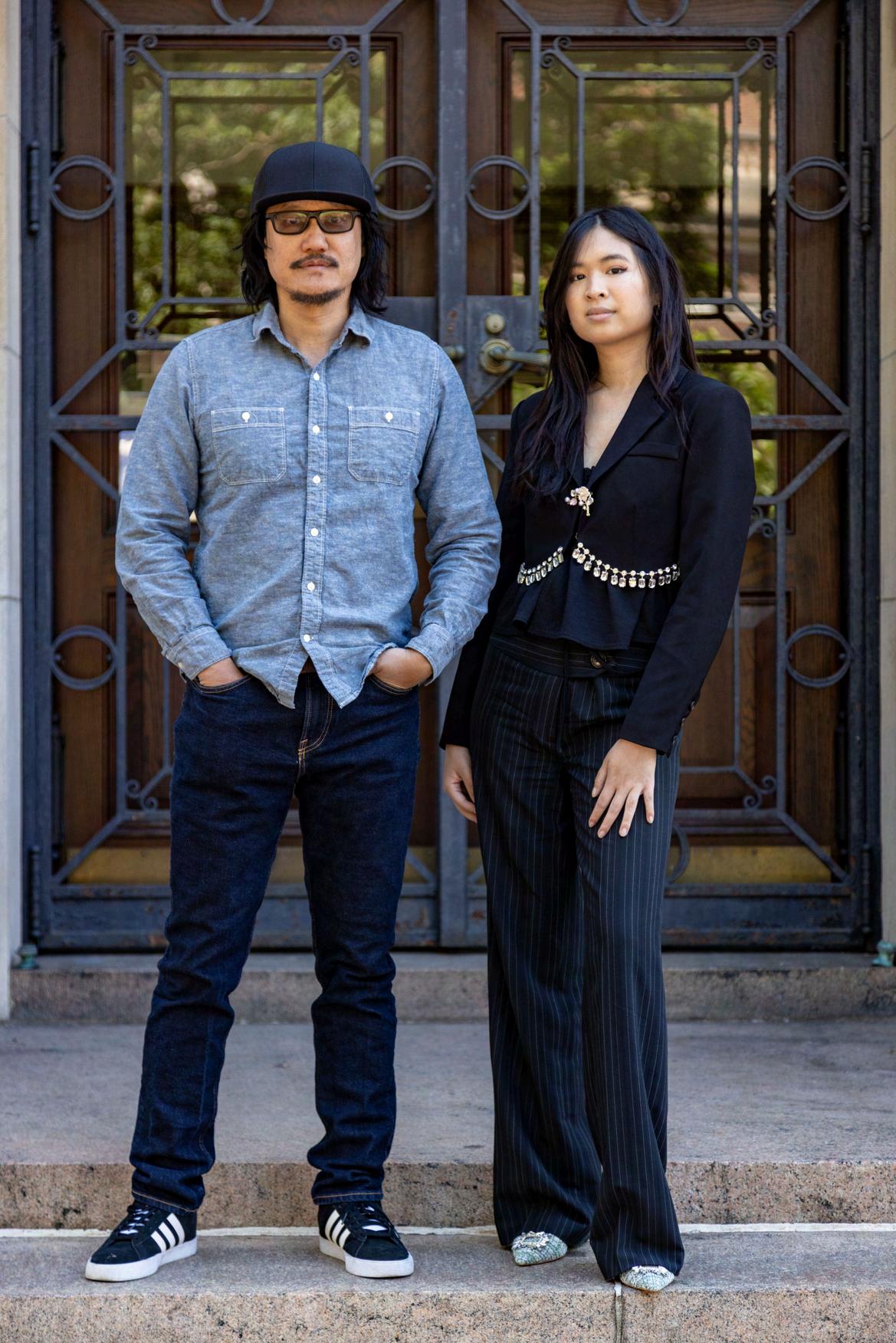



Written by: Milla Nguyen
Photography by: Julian Valgora
Keshia Hannam’s Biography:

Keshia Hannam is the Editor in Chief of Eastern Standard Times, a multi-media platform for AANHPI creatives and underrepresented voices. Growing up mixed-race and then living as an immigrant across Hong Kong, India, Australia, the UK, and now the US, Keshia was always drawn to how belonging and assimilation affect identity. Her work includes being an environmental advocate and building communities worldwide with women’s safety organization: Camel Assembly. She had also worked with innovation platform MettāandhasgiventalksonstagewiththeUnitedNationsandDear World. She has experience in the media industry for over a decade. She has culminated a passion in ensuring that stories are shared in an authenticway,predominantlybythosewhohavelivedthenews.
Author’s Note:
It is an honor to highlight Keshia Hannam as one of our Vicarious Column headliners for the first issue. Keshia Hannam is not only a brilliant Editor-in-chief, film director, and artist, but she is also someone who believes in integrity. During this interview, Hannam spoke about her values and how one story can affect the lives and thoughts of many. Because she has lived segments of her life in multiplecountries,thisgivesherawideculturalperspective.
However, she was quite honest about her struggles with identity, which many people of color have faced. Just like herself, trailblazers think outside of the box, and there is the notion that there’s no accurate formula to being unique. You just have to be yourself. You must exude authenticity. She now resides in New York City with a loving family and says that the spirit of NYC continues to inspire her. It is almost intimidating at times; New Yorkers are unabashedly themselves. People intersect on bustling city streets all at once, surrounded by an abundance of culture. When it comes to her career, she is already highly accomplished in the journalism and filmmaking industry, but no milestone stops her from spreading meaningful stories.
Keshia Hannam has lived in many cities: Hong Kong, India, Australia, the UK, and now the US. She spoke about this feeling of being in the “in-between” and not knowing where to find herself. Her career was just as fluid as her cultural identity. In Australia, she worked in journalism and media as a radio show host in Sunshine Coast. Then, she moved into print media. She didn’t want to take the traditional route and decided she wanted to be an advocate for issues she cared about: women’s rights, healthcare, and POC stories. Afterward, she was offered a position at Eastern Standard Times, a multi-media company focusing on Asian media and the Asian diaspora. Through this, she became a filmmaker and a documentarian. Her most recent project at the time, Black Hat, White Hat which is a film that covers the story of Hieu Minh Ngo, one of the world’s most prolific and hunted criminals from 2007 to 2013, when he operated a massive international identity theft scheme from his home in Vietnam. Hieu was pursued relentlessly by the Secret Service until his eventual capture in Guam in 2013. During that time, he transformed in spirit and ethics, which led to his current role with the Vietnamese government of capturing criminals just like his former self.
She has worked on over fifteen short documentaries for EST Media. One other work she is proud of is a documentary covering the events of the Monterey Park shooting. On January 21, 2023, a mass shooting occurred in Monterey Park, California, United States. The gunman killed eleven people and injured nine others. After an all-day Lunar New Year Festival, the shooting happened at about 10:22 p.m. PST at Star Ballroom Dance Studio. She interviewed many people in this community, many of whom were Asian elders, children, and women who were traumatized by the shooting. Hannam was recently awarded for her work on this documentary. Eastern Standard Times was founded by Eric Tu (former executive at VICE Media, entrepreneur in the music, film, advertising, and entertainment industry) and Jaeson Ma (co-founder of 88-Rising, OPEN, East West Ventures, etc.). She said, “Both of them are powerhouses. EST has so many tendrils in cultural impact. I was so drawn to it because I lived in Asia myself; there weren’t local Asian media companies that were considered global. This was extremely imbalanced. We
wanted to be on the ground and tell real stories about these small communities.” Many of EST’s teams live in various countries, translate local languages and immerse themselves in the local cultures. Recently, EST has had a diverse slate of projects. Their production, KPOPS!, directed by Anderson .Paak (widely known as a musician of Silk Sonic and collaborator alongside Bruno Mars) just recently had an explosive premiere at the Toronto International Film Festival.
Her Values: Community Advocacy and Integrity Hannam described herself as insatiably curious. Her mother was a teacher, and her father was a pilot. She grew up looking out of plane windows, her eyes shimmering at the sights down below. When she was seven years old, she remembered being on a beach in India and another beach in Australia. She mentioned that the environments felt different, and the people looked different ethnically as well. On the streets of India, she saw children picking up trash. This image was imprinted on her mind. It begged the question: How can we further understand economic inequality? Gender inequality? What about the sociological patterns of humans in different countries? I asked her about her thoughts on social media. She mentioned that it is both a tool and a drug. Social media is an impactful mobilizer that allows GEN Z-ers to advocate for political issues. At the same time, it should be regulated; doomscrolling consumes so much of people’s lives and rids people of face-to-face communication. She said, “I don’t care for the shiny red-carpet stuff. The real work comes from being connected to real-world issues. It doesn’t mean that EST doesn’t cover fashion and editorial, but we want to be intentional. I try to go slow with the stories and approach them from many different angles.”
I mentioned that I noticed a cultural barrier within many film schools. Every year, film schools accept a vast number of international students, most of whom are Asian students at California universities. Many American (including Asian-American) students are reluctant to get to know international students who might not speak English well or understand American slang words and social media interests. Vice-versa, international students are more comfortable speaking their common language and are not ostracized within their shared community. I asked if she had advice for those moving to a new country. She experienced the biggest culture shock when she moved to the States. “We think we know the United States, but at the same time, it’s layered and isolating. It’s a global power among other countries, yet we understand so little about different cultures.” she said. One fact is that the United States does have its freedoms: the freedom of speech, expression, and market, etc. She said that learning about Black culture in New York City has been one of the most rewarding experiences. She advises students to be themselves, regardless of what others may think. As someone who was forced to assimilate into American society, she warns people not to let any system change their cultural identity.
Keshia Hannam is proud of the creation of Eastern Standard Times and how it has given many people a voice to tell stories. Beyond that, she does meaningful work in her local community and will continue to do so. She recalled a story about her mother-in-law, Deborah Koenigsberger, who helped thousands of women escape the neglected homeless shelter system. Her store is called Noir et Blanc / TTH Vintage, and the non-profit is called Hearts of Gold. She said, “I’m so inspired by her. She hosts events for holidays. She gives jobs and shelter to women in need. Earlier, we helped some women move from house to house, carrying mattresses across the street. These moments aren’t glamorous. It isn’t me standing on stage in front of five thousand people and accepting an award. It's a daily effort. Real change.” In the past, she has spent her Christmas season boxing up gifts for the homeless. Snow fell from the New York sky those days, the people were cheery on the streets, and a little warmth went a long way.
When she speaks on stage, she enjoys bringing people together. Before going up, her hands would shake, and she would feel extremely anxious. Hannam wondered what people thought of her and how she would be perceived. However, the moment the spotlight would shone down on her, she would take a deep breath and tell herself to speak from the heart. Hannam said, “When I use my voice, I try to be as honest as possible. I didn’t come from a big-name school. I didn’t have all the qualifications but I know how stories work. I do know how humans interact with each other. I’m going to try my best to get us there. If you know the meaning of what you’re doing and why you’re doing it, you have to be uncompromising.”



She mentioned that EST has discussed the usage of clickbait. While many news companies and celebrity outlets use clickbait titles, EST steers away from this. They are committed to building taste and honesty with their audience. For the future, EST Media is focusing on their intellectual properties and getting these projects made. She is currently working on a project, As Above So Below, with two English women from London: the director, Almass Badat, and the subject, Nikita Chauhan. The documentary follows Nikita’s story as a Punjabi woman and a female CEO in a cutthroat industry. The film also covers elements of the Sikh community as well. I asked her about the concept that Asian women feel they need power to be respected or to get things done. She said, “I think that Asian women are forced to overcome stereotypes: tiger moms, sexy Asian women, submissive ill-fated women. However, I am inspired that young Asian women are fighting these images portrayed in the media.” In efforts to overcome these molds, she spoke about Culture Clash, a multicultural festival of AAPI food, music, and entertainment sponsored by EST and Red Bull. She explained that being surrounded by so many different kinds of AANHPI people allowed everyone to see how vibrant and colorful the community was.


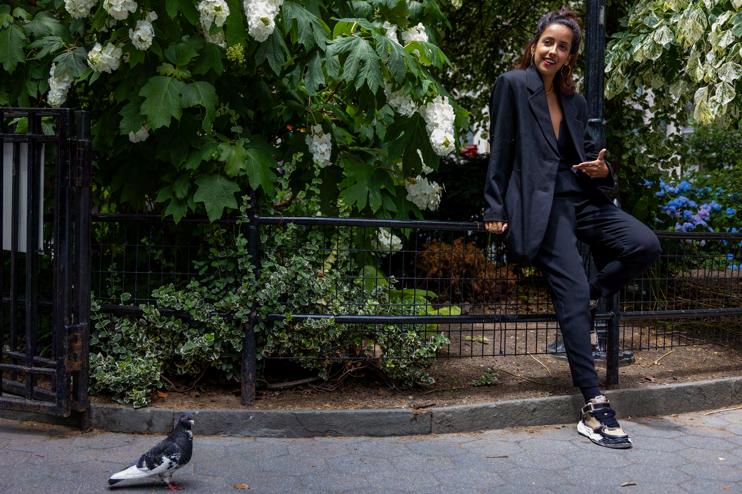


In her free time, she enjoys breathing in the life of New York City. She recalled being a young girl, moving to New York alone for the first time, barely able to get by. Still, she said that the city has brought her best friends, her life partner, and a career she is passionate about. She loves bike riding and spending time with her fiancé in their favorite NYC spots.
Finally, she would like to thank those who supported her on this journey. This includes her mother, father, brother, and sister. Her parents instilled a holistic view of travel and the world outside her own. Her fiancé, Florian Koenigsberger, has allowed her to be herself. With both of them being of mixed race, they connected over each other’s experiences. She would also like to thank her mother-inlaw and father-in-law for their support. Her best friends, Yelda and Stephanie, have shaped her life immensely. She also mentioned her boss, Eric Tu. She said, “Eric is genuinely an amazing guy. He has no ego. We need more male leaders willing to put aside their ego and make change.”

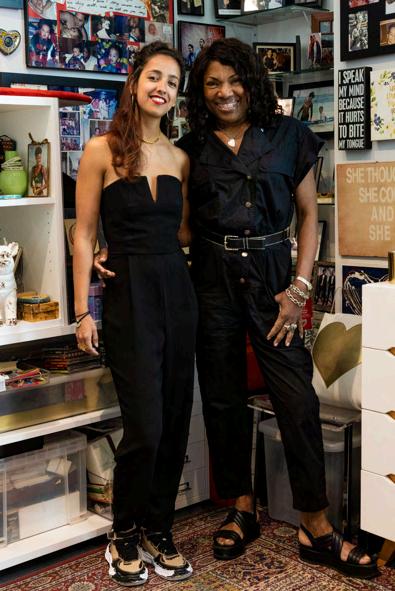


































PHOTOGRAPHY BY: EVAN ODINSOFF

Karen Joseph Adcock’s Biography:
Karen Joseph Adcock grew up in a small town in Louisiana, has a BA in film studies from Columbia University and an MFA in TV Writing and Producing from Loyola Marymount University. Her most recent credits include FX’s The Bear, Showtimes' Yellowjackets and Amazon Prime's Swarm. Her past work includes Atlanta, How I Met Your Father and an unforgettable assistant stint on BoJack Horseman, Undone and Tuca & Bertie.

When conceptualizing our Vicarious Column for Allusion Magazine, Karen Joseph Adcock immediately came to mind as the perfect candidate. Her journey, marked by resilience, creativity, and an unwavering commitment to authenticity, embodies everything this magazine aims to celebrate. This profile delves into her fascinating career, highlighting the moments that shaped her path, the lessons she’s learned, and the projects that continue to drive her passion. Karen’s story is one of perseverance, reflection, and innovation, and I couldn’t be more excited to share her journey with our readers. I hope her insights inspire writers and storytellers to find and embrace their own unique voices.
Growing up in Lake Charles, Louisiana, she found herself surrounded by stories, from books to TV shows, that provided an escape from the confines of a small, segregated town. As the youngest in a large family, she often felt overlooked, turning instead to writing her own narratives. “I’d read them out or perform them with my dolls for family members,” she recalled. This early passion for storytelling set the stage for a career that would take her from Louisiana to Columbia University and, ultimately, to Hollywood.

At Columbia University, Joseph Adcock experienced the challenges of transitioning from a small-town environment to the rigorous, competitive atmosphere of an Ivy League institution. Studying film theory in a field where her perspective is often underrepresented was isolating, yet it also fueled her determination. She explored complex themes in her projects, including the evolution of Black comedy in American cinema, and questioned the representation of characters like the "mammy" archetype. She recalls presenting her thesis on the topic, only to have her professor ask, “When you say Black comedies, do you mean dark humor?” It was a moment that underscored the challenges of carving out space for nuanced Black storytelling.
Her time at Loyola Marymount University (LMU) proved transformative. “At LMU, it became about what story I wanted to tell, rather than what story I thought people wanted to hear,” she explained.


This shift helped her develop her creative voice and led to a pilot about a Black woman navigating the juxtaposition of her prestigious academic experience and her small-town upbringing. The story evolved from a surface-level comedy about small-town life to a deeper exploration of identity, guilt, and belonging.
Joseph Adcock’s entry into Hollywood began with a showrunner’s assistant role on BoJack Horseman. From there, she transitioned to working on projects like Tuca & Bertie and Undone, gaining invaluable insights into the intricacies of television production. “I was able to see a show end and two others begin, which taught me how to balance humor with thoughtful storytelling,” she shared. Her work on Atlanta brought her first co-writing credit. The standout episode, a mockumentary exploring Black identity through a satirical lens, was a turning point. “I’m proud of that episode because it showed me that my voice mattered. People even thought it was real, which was incredibly validating,” she said. This experience reinforced her belief in the power of storytelling to spark conversations and challenge perceptions.
Joseph Adcock’s time on Yellowjackets further showcased her ability to craft dark, characterdriven narratives. The show’s predominantly female writers’ room allowed her to dive into themes of survival, transformation, and the complexities of young womanhood. She describes the room as a place of intellectual curiosity, where philosophy and true crime often informed the writing. “It was a show about survival, but it also had so much humor and lightness in its darkness. Life is tough, but there’s light in it too. We can highlight that on television,” she explained.
On The Bear, she brought a personal touch, drawing from her own experiences and collaborating with chefs to authentically depict the high-stakes world of professional kitchens. Joseph Adcock co-wrote a Sydney-centric episode that required her and a co-writer to tour Chicago, interviewing chefs and exploring the city’s culinary landscape. “We wanted to bring as much authenticity as possible,” she said. “Every detail, from the food to the restaurant culture, mattered.” The show’s balance of humor and grief resonated deeply with her and the other writers, especially its portrayal of Carmy’s struggles with loss and anxiety. “Chris Storer brought pieces of people he knew into the characters. For me, I’ve seen substance abuse happen. Depression. Joy. And it felt important to find places for those things in the show. We all try to bring as much of our truth to the process as possible,” she added.
Currently, Joseph Adcock is adapting Pride, a young adult novel, for Netflix. The story, a modern retelling of Jane Austen’s Pride and Prejudice, tackles themes of gentrification and cultural identity in Brooklyn. “The pace of a book and a film are so different,” she notes, explaining the challenges of staying true to the source material while modernizing its setting and characters. Writing in 2024, Joseph Adcock reflects on how Bushwick, the neighborhood in Brooklyn, has evolved since the book’s publication. “It’s a challenge to honor the original voice while also capturing what the neighborhood looks like today,” she explained.

Her thoughtful approach to adaptation extends beyond plot and setting. Joseph Adcock is deeply invested in creating characters that feel authentic and multidimensional. “It’s not just about diversity for the sake of representation,” she said. “It’s about developing arcs that move beyond cultural identity and explore universal human experiences.”
Across her career, Joseph Adcock draws inspiration from characters like Sydney in The Bear. “You need that ultimate belief in yourself,” she said. This mantra has guided her through moments of doubt and propelled her to take risks in both her writing and professional choices. Reflecting on her journey, she advises her younger self to “journal more” and embrace personal stories. “What you’re feeling right now is also a story someone wants to see and hear,” she emphasized.
Joseph Adcock also credits mentorship and collaboration as key components of her success. “I’ve been lucky to work with incredible writers who’ve shown me the ropes,” she said. She’s committed to paying it forward, mentoring emerging talent and creating opportunities for underrepresented voices in the industry. “It’s important to build a pipeline for the next generation of storytellers,” she added.
Her ability to balance humor and drama, and her commitment to authentic storytelling, have established her as a unique voice in television. Looking ahead, Joseph Adcock is venturing into feature films, a new frontier that excites and challenges her. She is currently working on a screenplay that allows her to explore themes of identity, resilience, and connection on a larger canvas. “It’s a different process,” she said. “But it’s also incredibly rewarding to have that creative freedom.”
She is also exploring projects that center on marginalized voices, drawing from her own experiences as a Black woman in Hollywood. “I want to tell stories that feel honest and reflective of the world we live in,” she mentioned. Joseph Adcock’s dedication to authenticity extends to her approach to storytelling, where she seeks to balance entertainment with meaningful commentary.
Through her work, Joseph Adcock not only tells compelling stories but also paves the way for others. Her commitment to representation goes beyond simply filling quotas; she is focused on creating characters and narratives that resonate on a deeper level. “Representation isn’t just about being seen,” she said. “It’s about being understood.”
In reflecting on her journey, Joseph Adcock expressed heartfelt gratitude to the many individuals who have supported her along the way. “There are countless people I’d like to thank, too many to name. I’m especially grateful to all the writers I’ve had the privilege of working with. I’ve learned so much from them,” she shared.
Joseph Adcock also reserved special appreciation for her family, particularly her mother. “My mom has dealt with a lot of change. She thought I was going to be an engineer before college. Even so, I’m grateful for her support and love,” she said.
Joseph Adcock’s journey is a testament to the transformative power of storytelling. From her early days writing stories on decorated printer paper to her current role as a writer and producer, she has consistently stayed true to her voice. “Every time I look back, I’m reminded of how far I’ve come,” she said. And with her eye firmly on the future, Karen Joseph Adcock is poised to continue redefining the landscape of television and film, one story at a time.
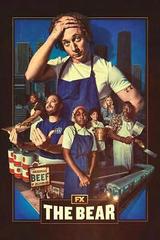
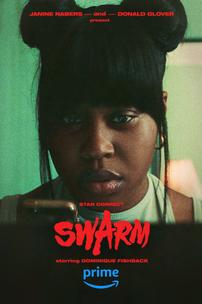



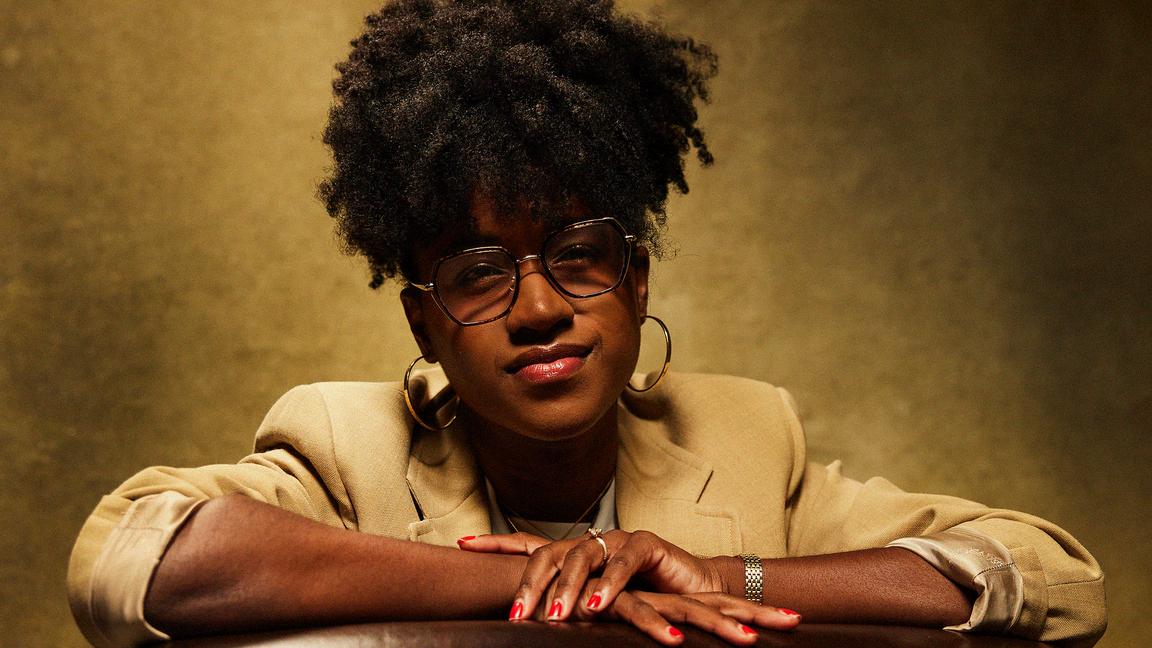

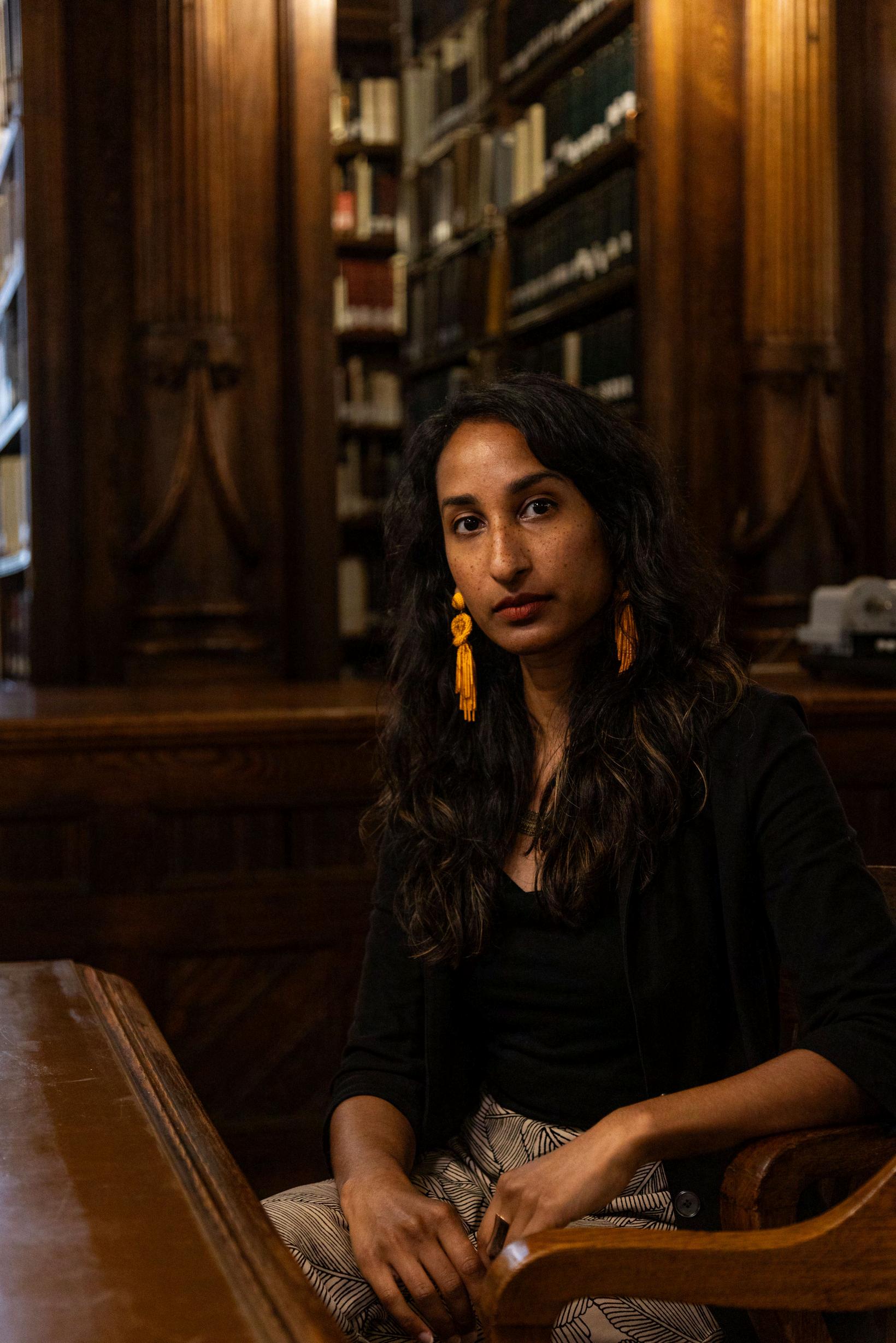
STORY BY: MILLA NGUYEN
Shruti Parekh’s Biography: ShrutiParekhisanAtlanta-bred,Brooklyn-basedfilmmakerandartistwhotellsintimateandincisivestories oflifeonthemarginsofsociety.Heraward-winningworkspansfiction,documentary,journalism,animation and visual art. Her most recent narrative short film, Zari, won the Grand Jury and Audience Awards at NewFestandwasnominatedforBestNarrativeShortatAustinFilmFestival.Shewroteanddirected Zari as a winner of the CAPE/Janet Yang Productions Julia S. Gouw Short Film Challenge, and filmed it in Delhi, India. Shruti’s previous project as a writer/director, Esperanza, won Best Narrative Short at the Portland Film Festival, Best Student Short at Ojai Film Festival, and Best Screenplay at Reel Sisters of the Diaspora Film Festival. Previously, Shruti’s issue-driven work as a digital video journalist at Gizmodo Media Group garnered millions of views. As an editor, she has worked on award-winning documentaries and edited for clientssuchasFood&Wine,VanityFair,ElizabethArden,Chowhound,andYellowbrick.Shrutigotherstart making music videos and working as an assistant to the acclaimed director Mira Nair on her 2013 film, The Reluctant Fundamentalist. Shruti has a BA from Brown University and an MFA in Directing from UCLA, where she received the Jack Nicholson Distinguished Student Director Award and the Edie and Lew WassermanFilmProductionFellowship.Sheiscurrentlyfinishingherfourthshortfilm, Homebody
Author’s Note:
It is an honor to highlight Shruti Parekh as one of our Vicarious Column headliners for our first issue. Shruti Parekh is a multi-talented filmmaker. She has done everything from directing to producing to editing and shooting her own work. Mostofall,Shrutispokeofherculturalidentity:whatitmeant tobeanIndian-Americaninaverycompetitiveindustry.
Isawherlatestfilm, Zari,whenshewasselectedasoneofthe finalist winners of the CAPE USA x Janet Yang Productions x Julia S. Gouw’s short film competition. The film paints a portrait of a young Indian-American teenager, Neelu, who forges a brief and unexpected connection with Zeyb, quiet sari store clerk, who moonlights as an internet drag queen. The film was beautifully shot, from the vibrant colors of the saree fabrics to the bustling city streets and a multitude of Indian.languagesspoken.However,thespecialaspectsofthe film included brilliant performances by Kamal Batra and Aesha Soni, as well as Shruti’s intimate, raw directing. After I saw the film, I felt deeply emotional despite not being a part of the LGBTQ+ or drag community. The film was as light as a feather but heavy in the heart simultaneously. The idea that Asian American and internationally-Asian-born children still undergo the pressures of strict families, societal constraints, andtheaccelerationofdigitalculturewashighlyrelevant.

Shruti Parekh prides herself in making films about stories of young women, Indian women, and blossoming characters in harsh circumstances. She mentioned that there was something very delicate and beautiful about watching female characters discover even more about themselves duringdifficulttimes.
Shruti’s Journey on Being Well-Rounded Parekh is based in New York but grew up in Atlanta, Georgia. Besides Zari, she wrote and directedBloodMoon,whichisaboutateenagegirl who gets her first period. She wrote and directed Esperanza,afilmaboutanimmigranttaxidriverin upstate New York who takes a hopeful young couple to the Canadian border, and they find themselves at odds in the shared pursuit of a better life. The film illustrates the journey of an Indian man who wishes to bring his family from India to the United States for a better future. On the other side of the coin, an LGBTQ+ couple wants to leave the dystopian United States to cross into Canada to live in a shared marriage without fear and harassment. Her last project, titled, Homebody, is about a female protagonist and her desire to save her New York apartment afterbeingevicted.

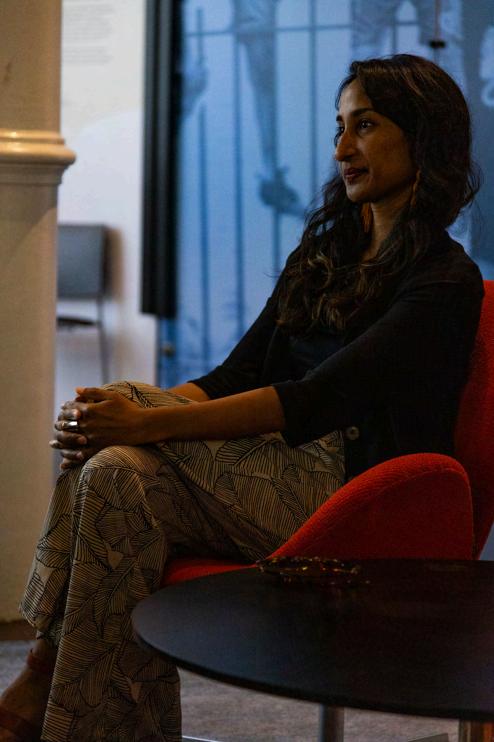


Specifically, on Zari, Parekh recalled going to saree stores on family vacations and seeing young men assist female patrons with choosing the perfect saree.Inasocietythatismorerestrictiveandquite patriarchal, men were still a large part of India’s fashion industry. She mentioned the existence of the trans community in India and how the group is still largely marginalized. However, the group is a part of historical and religious contexts. At this point in time, transgender citizens in Mumbai are legally recognized and are protected by the law. While they still face discrimination, the community has grown and protects its members from harassment. Regarding drag performances, the concept directly involves dance expression, extravagant cultural dress, and storytelling. In India,dragisarelativelynewerconceptthaninthe West, with a small but growing number of drag artists.ParekhgrewupgoingtoIndiamainlytovisit family. She remembered feeling fraught when visiting India as a child because she felt selfconscious about how to act, how to dress, and culturalbarriers.
page 9
Yet, she was full of energy during her trip in 2015 and witnessed firsthand how cities in India have become more globalized. This was 7 years before she filmed Zari. When she returned to film the project, Shruti Parekh and her producer were the only Indian Americans on the crew. Therefore, the rest of the crew members embarked on a cultural journey with her. Parekh said, “Meeting more people when filming Zari was so fulfilling. I remember going out to eat at the end of our shoot days, and it feels different than going there to visit family.” It’s just as Parekh described; her whole crew sat at tables along the city streets, tried a multitude of authentic Indian dishes, and clinked theirdrinksintriumph.
She attended Brown University during college and later earned her MFA in Directing from UCLA. She entered Brown, passionate and in love with the visual arts, and exercised various mediums from photography to architecture. She wasn’t sure about film production right. away. Even so, Brown didn’thaveafilmproductiondegreeatthetime.As a substitute, she chose film and media studies instead. This degree helped her understand the theories of media and structure. She found herself leaning into the documentary genre. After moving to New York, she started making music videos at DD172, which is owned by Damon Dash. She taught herself how to edit and shoot videos. Parekh dabbled in various film production roles, and this serves as her well-roundedness today. When she returned to UCLA to get her MFA, she knew what she wanted to do. This time, Shruti Parekh walked on campus with confidence, a newfound sense of understanding,andmanytoolsunderherbelt.
This doesn’t mean the journey was any less difficult. She spoke about how hard it was for artists to be supported in the United States. She felt that artists weren’t always compensated for their work or were forced to do a lot for very little pay. It adds to the financial barrier that first-time filmmakers currently face. Parents are concerned for children with a creative skill set and rightfully so,asthefutureisalwaysunknown.Shementioned that filmmakers often go through impostor syndrome. To combat this feeling, filmmakers need to band together. I asked her if there was anything shewouldliketoseechangeinHollywood.
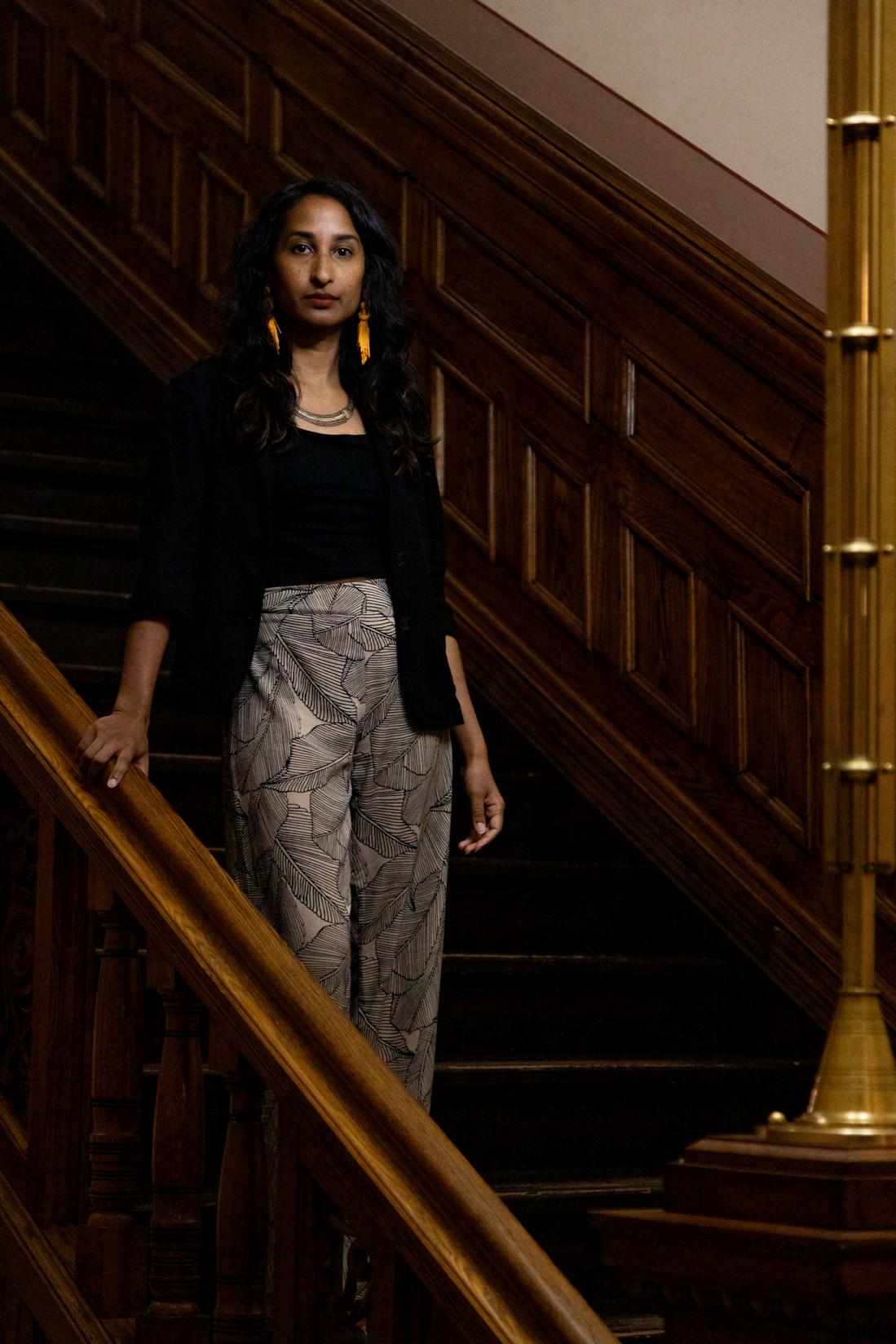
She said, “The film industry often feels uncertain, especially when entering it. You hope your work gets recognition, but there’s no support or formula for how to do so.” She was glad to see a stark emergence of nonprofits and organizations that offer filmmakers opportunities. However, Hollywood seems to be obsessed with well-known names and well-known brands. This causes a gap between filmmakers because studios are reluctant to take risks. She spoke about the independent filmmaking industry and how independent stories are even more personal than commercial works now. She said, “Our work shouldn’t be defined by monetary value. I know that’s the reality, but it doesn’t change the fact that it is a fundamental issue.” Film school students are increasingly concerned about their futures in the current economy. Unemployment is at an all-time high with the guild strikes, industry contraction, and lack of open-mindedness. Shruti said, “AI and changing technology isn’t going to go away, which is why we need to find ways to ensure that art stays alive. We need to remind ourselvesaboutwhywe’redoingthis.”
Shruti on her Filmmaking Process & Future Plans
In her free time, she loves being inspired by New York City. When writing, Parekh sets boundaries for herself. She takes long walks and gets out into the world. When she’s in the zone, she intentionally limits her social life. She said, “Focusing on the task at hand is important. Directing is about connecting with the people around me. Writing is about understanding my vision, which I have to do on my own. At least, at first until I can share it with those around me.” She says that understanding her actors is vital before going on set. To the best of her ability, shetriestohangoutwithheractorsaloneinasettingunrelatedtothestory.
Whenaskedaboutlong-termgoals,Parekhwantstofindabalancebetweenherworkandlife.Shealsowantsto balance paid work and creative work specifically for her conscience. Her short-term goals include understanding her personal boundaries. She often works on weekends but has decided to take weekends off to preservehermentalhealth.Betweenallfourofhershortfilms,shespokeabouthowshetackledtopicsutilizing her journalist background. Especially in Esperanza, Blood Moon, and Homebody, she related to all her characters and understood the weight of life-changing sacrifices. She hid little bits of herself within these characters but also ensured they had their own autonomy. For the future, she plans to work on her upcoming featurefilmswhichshe’squiteexcitedabout.
Finally, I asked if there was anyone she would like to acknowledge or thank in her journey as a filmmaker. She thanked her mother and father. At first, they were concerned about her future but were highly supportive the deeper she got into her career. Her father still works as a scientist and her mother works as an English professor, writer, and poet. Since she was young, she was surrounded by art and owes them her love for creating. She would also like to thank her partner, Sonny Singh, who is a musician. With their shared passion for the arts, they have developed a deep connection over the years. She mentioned that he visited her during the film Zari andisextremelythankfulforhispatienceandsupport.





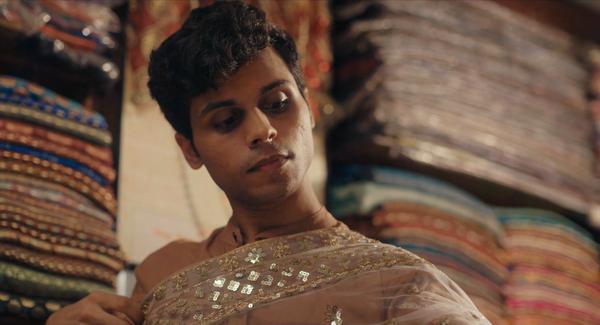

















written by: Milla Nguyen
Gabriela Dematteis’s Biography:
With almost a decade of experience in the industry, she has worked for VICE Media, Refinery29, Tribeca Film Festival, Sundance Institute, Warner Bros. Television, CBS Television, Paramount Pictures, and Participant Media. Her work published on the VICE Media YouTube Channel, which has 18+ million subscribers, has notably been seen by millions of viewers worldwide. Some of her other projects have won an Emmy® Award for Outstanding Feature Story in Spanish, been published on The New Yorker Magazine's digital site, and premiered at the Toronto International Film Festival.
Gabriela Dematteis grew up in the San Francisco Bay Area and is proud of her Mexican and Italian American heritage. She became interested in film and photography at a young age, largely thanks to her father, international photojournalist Lou Dematteis. She earned her Bachelor of Arts in Film & Television Production from Loyola Marymount University in Los Angeles in 2013. She spent the year following graduation volunteering full-time at a supportive housing non-profit in New York City supported by the Jesuit Volunteer Corps. She strives to bring care, compassion, empathy, and understanding to all of her projects and lead her teams in creating engaging, character-driven content for global audiences.

Her favorite part of filmmaking is the opportunity it gives her to bring people together to share people's stories. She hopes that the stories she helps spark new connections between people, new ideas, and new ways of relating to the world and each other. She is excited to help produce stories that she believes will engage, inform, surprise, and impact its viewers.
Author’s Note:
It is an honor to highlight Gabriela Dematteis as one of our Vicarious Column headliners for our first issue. In this interview, Gabriela and I spoke about a range of topics. She recalled receiving encouragement from her father when she was a teenager to submit her photographs to a competition at the Mission Cultural Center in San Francisco and being placed as a finalist. This was one of the moments when she fell in love with the idea of photography, art, and filmmaking. As a producer/filmmaker, Dematteis has learned to be adaptive and openminded when working on her projects and has become well versed in all aspects of production and filmmaking. All of these roles have shaped her enthusiastic and reliable spirit on and off-set.
She is an alumna of the undergraduate Film and Television Production program at Loyola Marymount University in Los Angeles. Throughout her years at LMU and beyond, she has advocated for collaborative filmmaking as well as non-profit volunteering. One of the many things that makes Gabriela admirable is that she puts work into helping her community. Today, she continues to blend filmmaking along with her desire for community to make spaces more accessible.
Gabriela Dematteis was born in Redwood City, California. When Dematteis was coming of age, San Francisco was a place that had an abundance of artists. While it’s not entirely extinguished, San Francisco later developed into Silicon Valley, leaving a void for the arts. She recalled while attending high school, her father stopped using his professional film cameras as much and she asked if she could use one of them. He taught her how to develop film and encouraged her to take photographs as they traveled.
With his encouragement, she submitted to several photo exhibitions in the Bay Area. Growing up, she also witnessed and was deeply impacted by seeing her mother work as a lawyer, always fighting for the most fair and just outcome for her clients. Her mother encouraged her to use her voice to help others and fight for social justice issues. In high school, she participated in Tiger TV, a class that broadcasted her school’s announcements and news. There, she worked in front of and behind the camera.
I asked how she would describe herself in three words. She picked the words passionate, loyal, and reliable. She said, “I know some people might equate being passionate to being emotional and think of it in a negative way. To be honest, I think it’s more of a good thing. It means you care and I want to be a filmmaker who cares.” Dematteis mentioned that working on a set can be tough. Times can get stressful. When she’s in the driver's seat, she tries to be loyal to the story and the vision of her collaborators, even if she might not always agree. She is also dedicated to being open-minded, even if she hasn’t tried something before.
In her career, Gabriela Dematteis worked at VICE Media for almost 9 years. She started as a production assistant, then worked her way up to associate producer, and then to producer for the company. She said, “I learned to do so many things. One project I enjoyed doing was when I interviewed my dad for a VICE project. He lived in Nicaragua during the Contra War. In the United States, people were questioning if the government was sending arms to Nicaragua to fund the Contras. One day, a cargo plane was shot down in Nicaragua, and my dad was one of the photographers who captured the moment of the pilot’s capture.” Gabriela said that was a story she grew up with and decided to pitch it to the company. In Vice’s series, “I WAS THERE,” she interviewed various people who had witnessed historic moments in time. Another project she worked on was “Ritos de Pasaje | Sicarios”, which won her an Emmy® in the Outstanding Feature Story in Spanish category at the 44th Annual News & Documentary Emmy® Awards. She said, “I remember that moment when they announced that we won. I thought it was just cool to be nominated and wasn’t totally sure if we’d win, but we did!. It was a really incredible experience.”
She spoke about how the project's purpose was to show how young men are recruited to be hit men for the Sinaloa cartel in Mexico. She said, “As an individual person, it was difficult to listen to them talk about what they did or why they wanted to be a part of this, but as a filmmaker, I had a duty to listen objectively and show how this is reality and way of life for them.”
In 2016, many Indigenous peoples and their allies came together to protest against the construction of the Dakota Access pipeline. She had the opportunity to produce an interview with Chase Iron Eyes, who was one of the Indigenous people there when the protest happened. Dematteis said, “I wanted to shed light on something Indigenous people have been fighting for for centuries.. They have been protesting against the planet's destruction and it’s something we need to be aware of and support because it affects all of us.”
Aside from filmmaking, I asked about her consistent efforts in community volunteering. While it is important to be a filmmaker, it is also important to be a steward for the next generation. Dematteis worked in both the Student Production Office and the Center for Service and Action during her time at LMU. She said, “I would often receive some confusing looks from people in the film school who didn’t understand why I would spend part of my time volunteering. Some people would say I should only be focused on working on sets, which I was. I was extremely active in the film school. I was a producer on many projects and was on set every other weekend. I helped with the industry screenings and film events. However, for me, film school wasn’t just about working on sets. I was there to educate my whole self and I did this by gaining a wider perspective outside of film too.”
She recalled that when she graduated, she was faced with a decision. Dematteis was offered a position at Paramount Studios but this would require her to stay in Los Angeles. On the other hand, she wanted to explore New York City. She decided to make the move to New York City and worked full time for one year as a Jesuit Volunteer for the nonprofit Breaking Ground, which helps provide affordable housing to people in New York. While she faced some doubt and criticism over her decision to leave LA, she remained firm. Many of her producing skills carried over into this experience. She said, “There was a tenant there who became a good friend of mine. He was like my adoptive New York dad. Unfortunately, he passed away during the beginning of the pandemic. But he taught me so much about life and giving your time to others. His friendship impacted me so much and made me a better person and thus, a better filmmaker.”
Currently, she is freelancing and trying to find her next project. She said, “ I’m excited to help support other creatives and bring their vision to life.” When she is not working, she enjoys walking along the waterfront in Brooklyn and looking across the river to see the Manhattan skyline. She enjoys playing basketball and kickball with her friends, and wants to try getting back into horseback riding even though it's a little bit harder to do in New York City.
Finally, I asked her if there was anyone she would like to thank or acknowledge for supporting her in this journey. She wants to thank both of her parents for supporting her. She would like to thank her siblings, her grandparents, and all her co-workers from over the years. She mentioned she would also like to thank her mentor in college, Marty, and also the director of the project that won both of them the Emmy. She’d also like to thank all her friends both in New York and beyond. She also mentioned she’d like to thank all of her past collaborators and even those who were critical of her. “It’s important to know and understand and be open to learning about everyone’s perspective.”




written by: Davis Grant
FrancisFordCoppola’slatestfilm, Megalopolis, is nowintheaterstolowbox-officenumbersanda relatively mixed reception. Regardless of one’s personal views on the self-funded passion project, it will surely be one of the year's most discussed films. One aspect that has caught people’sattentionistheaspectofalive-readerat certain screenings, labeled “Megalopolis: The Ultimate Experience.” The live reader asks Adam Driver’s character a question during a press conference scene, to which he responds. Screenings without a live reader still have the dialogue spoken by an off-screen character (LeBeau). Some viewers have praised this as revolutionary,whileotherscriticizeditasacheap gimmick to get audiences to buy tickets. In light of this division, let’s revisit the history of live interaction in film and how it operates in the digitalera.
Vaudeville & Animation
Vaudeville & Animation To understand the history of movies interacting with audiences,wemustexaminethebeginnings of cinema itself. Before nickelodeons, films were usually distributed as part of a traveling Vaudeville act. As part of a live revue, performers could interact with the films as they were on stage. This was most notably used with cartoons. Winsor McCay’s 1914 animated film, Gertie the Dinosaur was initially used as part of McCay’s Vaudeville live shows. McCay would appear on stage with a whip and command Gertie to obey his commands, with his animated drawings synced to his onstage actions to precise timing (James). With the decline of Vaudeville and the rise of Nickelodeon theaters, McCay transformed Gertie the Dinosaur by filming himself and using intertitles to replace his onstageinteractions(James).
AnotherinteractiveinnovationinAnimation is Max Fleischer’s bouncing ball technique. Most people are familiar with the bouncing ball that syncs up to the lyrics so you can sing along. With the advent of the talkies andthepopularityof TheJazzSinger (1927), audiences wanted to hear music on screen. Fleischer capitalized on this trend by animatinganewtechniquethatencouraged audience participation. This is widely used inkid’smediatoday(Jenkins).



written by: Davis Grant
Talkingpicturestooktheworldbystorm;soon enough, every film studio produced purely soundpictures.Filmmakers,studioheads,and investors kept an eye out for the next significant innovation in cinema. While some have stuck around, such as 3D, others have faded away after lingering in the air for longer than necessary. I refer to, of course, Smell-OVision, Aromarama, and Odorama. Film only engages in two of the five senses: sight and sound.
Hans Laube wished to engage another sense, smell, to further immerse audiences into the films they were watching. Laube developed theater seats with interconnected tubes that allowedthemtoreleasecertainscents,syncing uptothefilmaudienceswerewatching,calling it Smell-O-Vision (Witte). Soon, Smell-OVision was in a trade war with a similar company called Aromarama, which released certain scents into a theater’s air conditioning systemtomatchthearomasonscreen(Witte). They released competing films against one another to try and win the public to their brand, Scent of Mystery (1960) for Smell-OVision and Behind the Great Wall (1959) for Aromarama.Unfortunately(forthecompanies, not the people), both films were criticized upon release, and odors in cinema were seen as a failure with no commercial appeal. Both companies left somewhat of a legacy, though. Many theme parks use the seats Laube designedforcertainliveshows.
JohnWatersreleasedhisfilm Polyester (1981) with Odorama, a scratch-n-sniff card that you smell alongside the movie (“A Whiff of Polyester: Inside the Odorama Process”). Spy Kids: All The Time In The World (2011) also usedanAromascope,givingaudiencescratchn-sniff cards and demonstrating that filmmakersarestilllookingforwaystoengage moviegoers(Paskin).
Much of interactive cinema comes from one prolific director, William Castle. Castle was an early independent filmmaker, and had to rely onmanymoviegimmickstodrawinacrowd. This includes House on Haunted Hill (1959), which had a skeleton attached to a wire and scared audiences at critical moments, The Tingler (1959) with its “percepto” vibrating seats (which inspired modern 4dx), and 13 Ghosts (1960)whichhadaparticular“illusiono”devicewhichallowedaviewertoseeornot seeghostsbasedontheirpreference(Barson). Perhapshismostinfluentialgimmick,whichis still popular today, is the “punishment poll” used in his film Mr. Sardonicus (1961). Audiencesweregiventhechoicetovotewhat happens to the titular character at the end, voting if he should live or die (Barson). It’s debatablewhetherornotCastleevenfilmeda secondending,butthisinfluencelivedon. Clue (1985) has three alternate endings, which changedbasedonwhatevertheateryousawit in.



written by: Davis Grant
More recently, Netflix has invested in interactive movies, such as Bandersnatch (2018), which allows viewers to vote on howthestoryunfolds.
The Digital Era: Wheredoesinteractivecinemafitintoday’s film landscape? Considering the whole history of audience participation, it’s relatively small in mainstream Hollywood. It’s not necessarily a bad thing; these interactiveelementsoftendistractaudiences from the movie, going against the filmmaker’sintentions.3Disstillthebiggest draw, as many filmmakers and viewers believeithelpswithimmersion.4DX/D-Box is a novelty thrill to some for action-packed blockbusters. With Megalopolis enacting a live reader, its innovation is going back to the origins of cinema in the Vaudeville circuit. This might be Coppola’s intention. Megalopolis is a film about the future we’re creating for our children while drawing allusionstothepast,specificallytheRoman Empire. Coppola might also be arguing for the future of cinema by looking back at the medium’soriginsandemployingtechniques of the past in modern filmmaking. Whether or not of Coppola’s intention to advance films for the future, we must keep the knowledgeofthepastalivetoimproveonit.
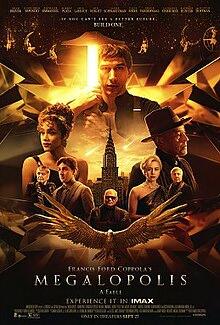

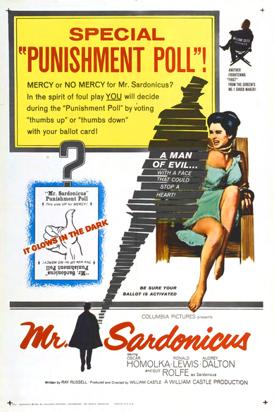
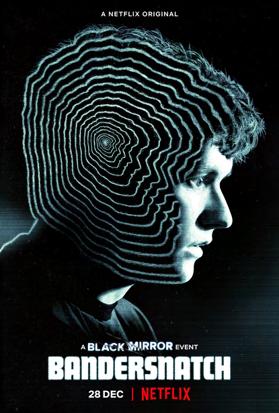
WORKS CITED: Barson, Michael. “William Castle | Horror Film Director & Producer.” Britannica, 16 August 2024, https://www.britannica.com/biography/William-Castle. Accessed 3 October 2024. James, Robert. “Animation History: Winsor McCay and Gertie | Artograph.” artograph, 16 October 2014, https://www.artograph.com/infocus/winsormccay/. Accessed 3 October 2024. Jenkins, Harry J. “Koko and His Bouncing Ball: Memories of the sing-along at the movies . . .” Theatre Organ Bombarde, no. October, 1969. American Theatre Organ Society, https://www.atos.org/koko-andhis-bouncing-ball. Accessed 3 October 2024. LeBeau, Ariel. “Megalopolis Is Even Wilder Than You Might’ve Heard.” GQ, 22 May 2024, https://web.archive.org/web/20240522135824/https://www.gq.com/story/megalopolis-is- even-wilder-than-youve-heard. Accessed 3 October 2024. Paskin, Willa. “Poop or Chocolate? An Olfactory Review of Spy Kids 4's Aroma-scope.” Vulture, 22 August 2011, https://www.vulture.com/2011/08/reviewing_the_smells_of_spy_ki.html. Accessed 3 October 2024. “A Whiff of Polyester: Inside the Odorama Process.” The Criterion Collection, 25 September 2019, https://www.criterion.com/current/posts/6605-a-whiff-of-polyester-inside-theodorama-process. Accessed 3 October 2024. Witte, Gerhard. “Movieswith artificial smells in cinemas: "Behind the Great Wall" and "Scent of Mystery."” In70mm.com, 1 April 2015, https://www.in70mm.com/news/2015/smell/index.htm. Accessed 3 October 2024.
written by: Maria Murphy
I used to watch Saturday Night Live religiously. I first learned about it from YouTube and excitedly told my parents at the dinner table about this hot new show ‘SNL,’ which caused them to laugh at my naivete. That didn't stop me though. I started watching skit after skit, zooming through the Lonely Island, the High School Theatre Showcases, Bill Hader’s Keith Morrison impression, and my favorite sketch: Aidy Bryant’s “Birthday Party” sketch. (Seriously. My 13th Birthday Party was “Birthday Party” sketch themed). I taped the show on my parent’s DVR and watched the entire episode every Sunday morning. I would laugh at every segment and stay until the very end. I analyzed the body language of the cast and watched them hug and rejoice as the credits ran. Sure, some episodes were heavy on politics, but even as a twelve-year-old, I rejoiced at what I found to be fresh comedic energy.
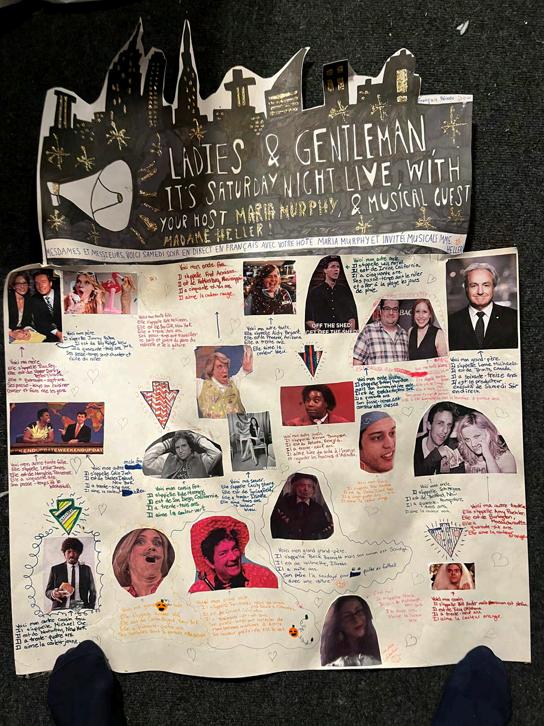

This didn't last forever. Over time, I started to watch less and less. The jokes started to become stale, and I didn’t understand why I wasn’t laughing like I used to. Occasionally, a skit would pop up on my YouTube explore page, and I would donate a couple of chuckles, but most of the time, I couldn’t even laugh. My prefrontal cortex grew, and it wasn’t meant for me anymore. But the opposite should be true. Saturday Night Live was not made for twelveyear-olds. The more I understood about pop culture, the more I should laugh. But I started to notice how out of touch SNL was from my generation. Saturday Night Live’s 50th Season Return was incredibly disappointing but not surprising. The legendary sketch show started off with a ridiculously long thirteen-minute cold open. SNL 40’s Season Return gave us a 5-minute cold open, which has been the average for recent seasons, including SNL’s Season 49.

Some episodes have devoted longer time for the cold open; for example, Matt Damon’s powerhouse performance as Brett Kavanaugh in his hearing was also thirteen minutes, but in my opinion, these exceptions proved the rule. They were extraordinary and topical. I believe SNL’s recent choice was made due to the lack of humorous sketches lined up for the rest of the show. It’s clear from the SNL 50 Premiere that writers are desperately trying to grab the attention of younger audiences. A Charli XCX talk show, many unnecessary Chappell Roan references, a parody of the “Hawk Tuah girl,” and even a sketch based on TikTok-famous hippo Moo Deng caught my attention but not my interest, and they certainly did not make me laugh.
The one positive change I have seen in recent years is the addition of Please Don’t Destroy, a three-person group clearly inspired by The Lonely Island. Their goofy concepts and incredible comedic timing make complete sense, as two of the three members are sons of highly decorated players in comedy. (John Higgins is the son of an SNL producer, and Martin Herlihy is a former SNL producer and famously collaborates with Adam Sandler.) I fell in love with their absurdist style when I found them on TikTok during the heat of the pandemic. (I consider their YouTube sketch “um...about last night” a perfect comedy piece.) Paul Briganti, SNL’s Director, told Hollywood Reporter that, “They felt brand-new and classic at the same time,” and that’s at the heart of my love for them. PDD was chosen to draw in Gen Z, but they don’t feed you twitter headlines.
While I appreciate them and continue to watch their sketches, they have not been able to garner a large audience with the rest of Gen Z. When talking to my friends, they were not even aware that they existed. And in this latest episode, even though Andy Samberg, a dream guest for a PDD sketch, was on set, there was no weekly sketch from my three favorite mid-men. Saturday Night, Jason Reitman’s film based on the behind-the-scenes drama of the original SNL 1975 cast, set to premiere October 11, SNL’s franchise model has become increasingly clear.
It is withstanding because it has been longstanding, and this season premiere proves that SNL will continue to profit off of its legacy until Lorne Michaels’ inevitable retirement eventually cuts it. According to a 2021 CBS interview, Lorne Michaels told Gayle King, "I think I'm committed to doing this show until its 50th anniversary, which is in three years...I'd like to see that through, and I feel that'd be a really good time to leave. But here's the point: I won't want the show ever to be bad.” But here’s the thing- the concept of ‘bad’ can never truly be decided. Is a show ‘bad’ if the ratings are diminishing? I wouldn’t say so, and they aren’t.
According to Deadline, SNL remains a top-rated show, as its season premiere “drew 5.3M viewers on NBC in live same-day viewing, according to Nielsen data.... the most for a season premiere since 2020 when Chris Rock hosted with Megan Thee Stallion as the musical guest.” Is the show ‘bad’ if talented celebrities are no longer interested in hosting?

I wouldn’t say so, and they haven’t. SNL’s season lineup, full of eye-catching Gen Z favorites like Chappell Roan and Billie Eilish, as well as legends like Michael Keaton and Stevie Nicks, are directly picked in an attempt to boost numbers. Is the show ‘bad’ if the sketches aren’t funny? I would say so, but I can’t entirely prove this.
It may be impossible to fairly identify the supposed downfall of SNL. Each episode is about an hour long, give or take. With 939 episodes, that’s roughly 939 hours of sketch comedy. Only the most diehard of die-hard fans have watched the entire thing. And by that point, these fans have probably been sucked into this SNL world to the degree that they lose objectivity. When I was a fan of SNL, I found myself watching not just because I found it funny but because I was emotionally attached to the cast.
There are a lot of former SNL viewers who grumble that “SNL hasn’t been good since the 90’s! SNL hasn’t been good since Eddie Murphy! SNL hasn’t been good since Billy Crystal!” While I’ll hear them out, I believe these arguments are based on nostalgia. Maybe a lot of us who found SNL so funny back in the day didn’t even watch the entire episode. How can we fairly judge something that we pick and choose? Maybe SNL isn’t meant for us every second of the day. Maybe it’s meant for the moment in our lives when we need an introduction into the world of sketch comedy. Its mainstream presence makes it easy to cultivate new talent and a fanbase of new comedy fans who would have never learned about this world before. Ultimately, the ‘SNL’ name has a comedy influence that cannot be compared. What other show could consistently be ‘hit or miss’ for half a century? Fifty years of sleep deprivation later, maybe SNL writers should just go to bed. from:MariaMurphy

WRITTEN BY: JACOB CHANDLER ITTEN


Everybody’s experienced the joy of window shopping at their favorite local mall. You'll walk past the luxury stores and admire but also question the steep price of those black shoes with a solid gold buckle. When pitching new scripts to Hollywood industry giants, you’ll generally find yourself in the same situation. You'll be standing outside the “premium goods” store looking in. You can go inside and look around, but deep down, we all know we’re not buying anything in there on a whim. As a result of the COVID epidemic and the explosion of content following, studios have been pumping out projects like there’s no tomorrow. Their slates are booked, and your script may not always land on their desks. his is the reality of the industry's current landscape. “While the organizing practices and criteria that executives use to decide what films should be produced and how these films are distributed have evolved over time, the most prevalent among them became internalized in the studios long before they came under the control of larger publicly traded corporations”(Hadida,Lampel,&Walls,2021).




From massive corporations like Universal Pictures to streaming tycoons like Netflix to independent media companies like Monkeypaw Productions, companies are turning inward to save money and maintain the secrecy of their projects. The most significant driving point is to prove to audiences that their projects are incomparable, immersive stories that can only be experienced in theaters; many established filmmakers call this “creating moments.” The practice of making aparticularsceneorcharacterclearintheirmarketingcampaigngeneratesexcitementandanticipation.
On top of the quickly evolving demand of the general population, these movie studios have expanded into media companies. Many studios previously known for just movies or television have widened to include books, magazines, music, and podcasting. To fill these entertainment outlets, these companies find themselves overspending to create good-looking products for everyone to be interested in. As a result, we usually find ourselves watching generic, soulless stories tweaked to apply to wider audiences. “Theatrical movies have had larger budgets and higher production values than TV productions and were intended for the big screen. However, current serialized content often has the same production budgets and values once reserved for the theater” (Hennig-Thurau, Ravid, & Sorenson, 2021). The various levels of production have blurred audience expectations and excitement when it comes to new releases. It becomes a gamble of time, money, and energy for audiences; which one to watch, which one appeals more and many similar questions flood their minds as they see the Netflix series “Stranger Things” receive $30 million episodebudgets.Incomparison,A24’shorrorhit“TalkToMe”hadabudgetof$4.5million.
In addition to media outlet expansion, budget blurriness, and creating moments, studios now tend to turn inwards for scripts and creativity. “Work on the script was closely supervised by the head of the story department, the producer of the picture in question, and, most importantly, by the studio’s head producer, who read all the drafts, ordered revisions, and authorized the final version” (Regev 2016). For flagpole projects, studios turn to writers they have a rapport with to bring a script the studio can workshop together to ensure it aligns. As a result, they have severely limitedbudgetsformoreriskyscriptsfromlesser-knownwriters.
The bottom line is that these media companies don’t provide a lot of wiggle room for emerging writers to shop their stories. Instead, they are usually held outside looking in until they find themselves in the company of the “elites”. Many established filmmakers have voiced their concerns with this issue, arguing that new and exciting stories are weeded out as a consequence of the functionality of these movie studios turned media companies. Possibly a light at the end of the tunnel is that this ever-changing business model is proving unsuccessful for many. Disney has lost nearly $11 billion since the release of Disney+ media. Netflix’s stock has dropped 7.5% since July 2023. Warner Bros. Discovery lost $996 billion in its 2024 Quarter 1. Essentially, these studios must find new ways to make their content exciting again. They have the audiences and the numbers, but nobody is tuning in because they don’t know what to watch. However, many are guessing that this will result in the industry's opening up, creating new creative positions for the nextwaveoffilmpioneerstotakethewheel.
WORKS CITED
Hadida, A.L., Lampel, J., Walls, W.D. et al. Hollywood studio filmmaking in the ageof Netflix: a tale of two institutional logics. J Cult Econ 45, 213–238 (2021).
https://doi.org/10.1007/s10824-020-09379-z Hennig-Thurau, T., Ravid, S.A. & Sorenson, O. The Economics of Filmed Entertainment in the Digital Era. J Cult Econ 45, 157–170 (2021).
https://doi.org/10.1007/s10824-021-09407-6 REGEV R. Hollywood Works: How Creativity Became Labor in the Studio System. Enterprise & Society. 2016;17(3):591-617. doi:10.1017/eso.2015.89

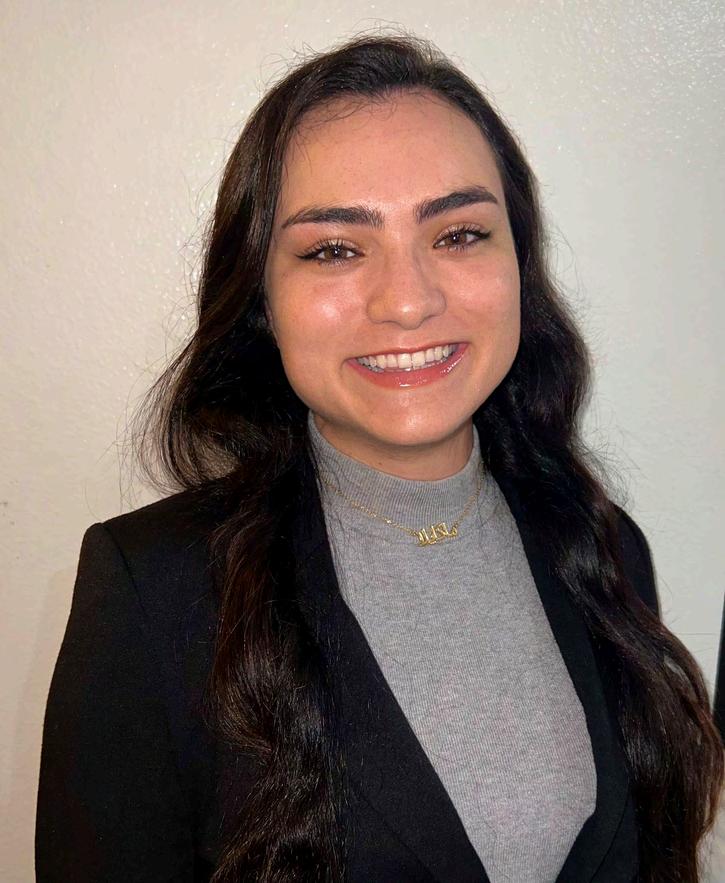

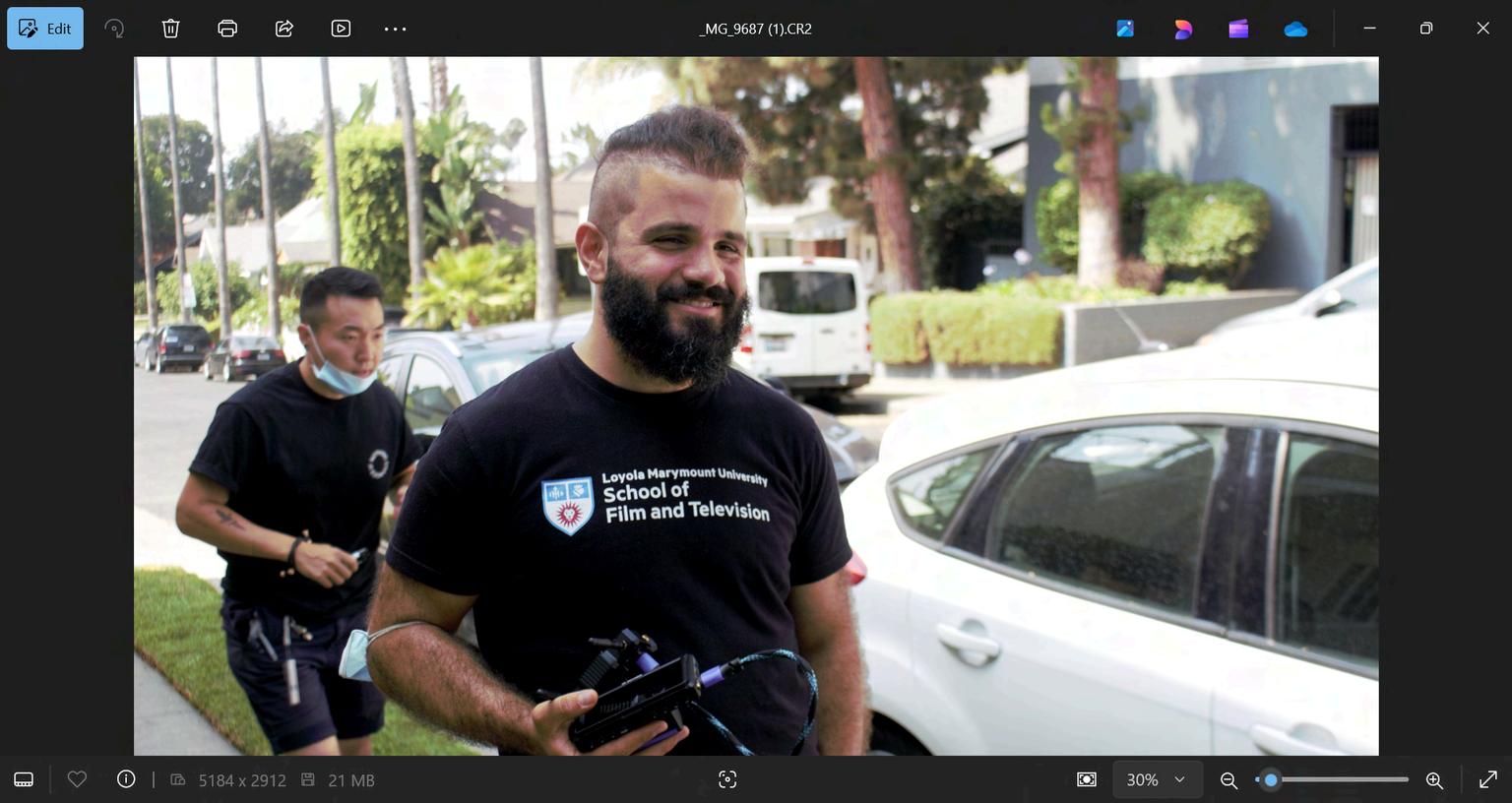
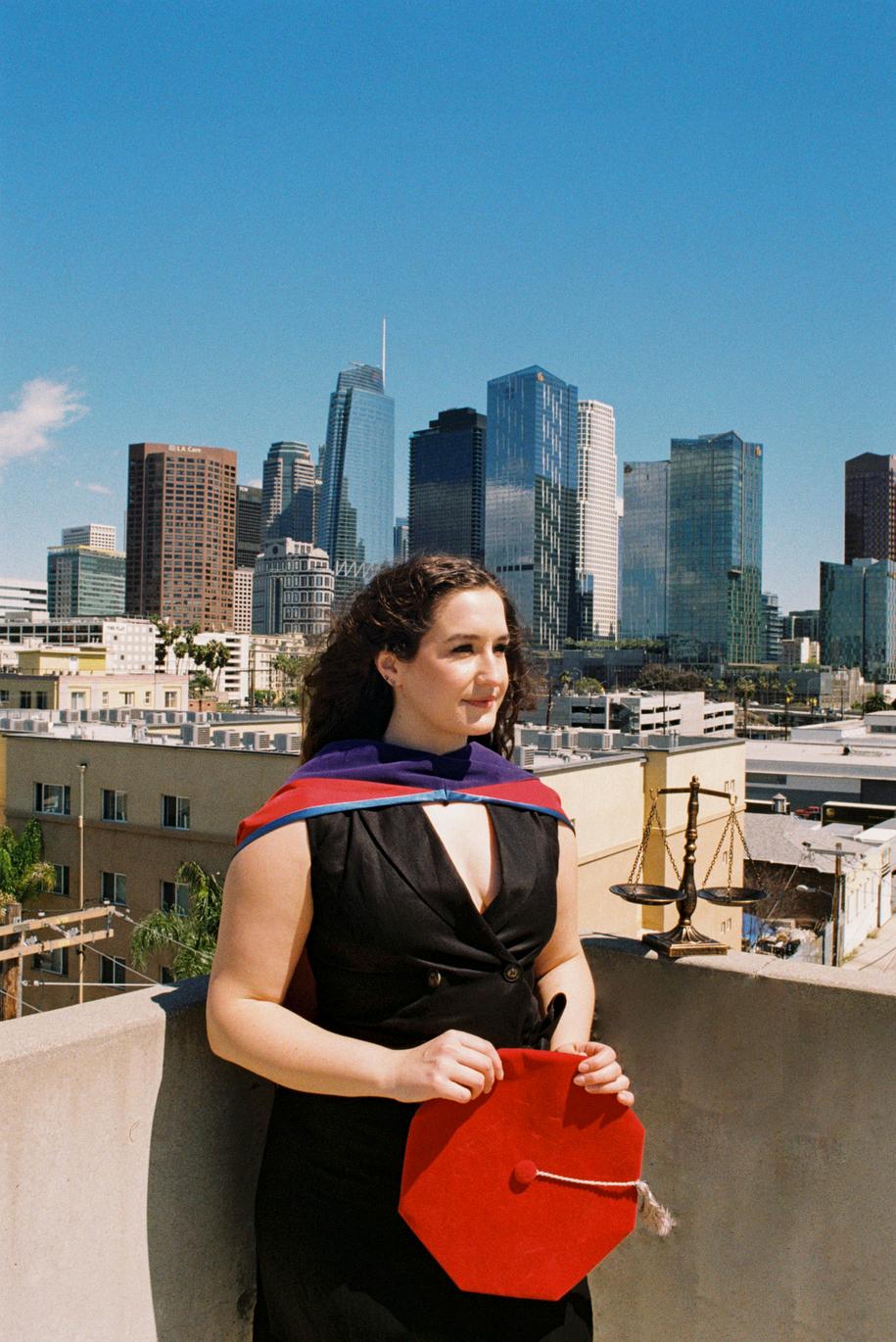


DirectorofThe K-TownKiller: Blending
MartialArts& Film
written by: Milla Nguyen
I had the opportunity to interview Vahan Bedelian, a diverse filmmaker and alum of the LMU production program. Vahan is from Irvine, California. He has a mixed cultural identity; his father is Armenian, and his mother is American. He has always known that he wanted to be afilmmakersincechildhood.
With the influence of his parents being music professors and musicians,hestrivedtohavethat same creative essence. As some people call it, that ‘creative spark’ in the glint of artists’ eyes. He recalledthatthesuburbsofIrvine feltsafeandpeaceful.Whileitisa luxury to live without danger, Vahan craved a sense of explorationandthrillintheoutside world.
Vahan discussed the process of making his film, The K-Town Killer. In Irvine, Vahan grew up around a large Asian American population. He would go to friends’houses,andtheirfamilies would serve him dinner, most of which consisted of various Asian dishes. He recalled how Everything, Everywhere, All at Once and Crazy Rich Asians broke records in Hollywood. Seeing how his community reacted, he wanted to pay respectful homage to Asian characters. When making this film, his co-writer and codirector, Healin Kweon, worked closely with Vahan. Vahan also attended the same Irvine elementary school as Donald Nam,whoeventuallybecamehis film'scinematographer.

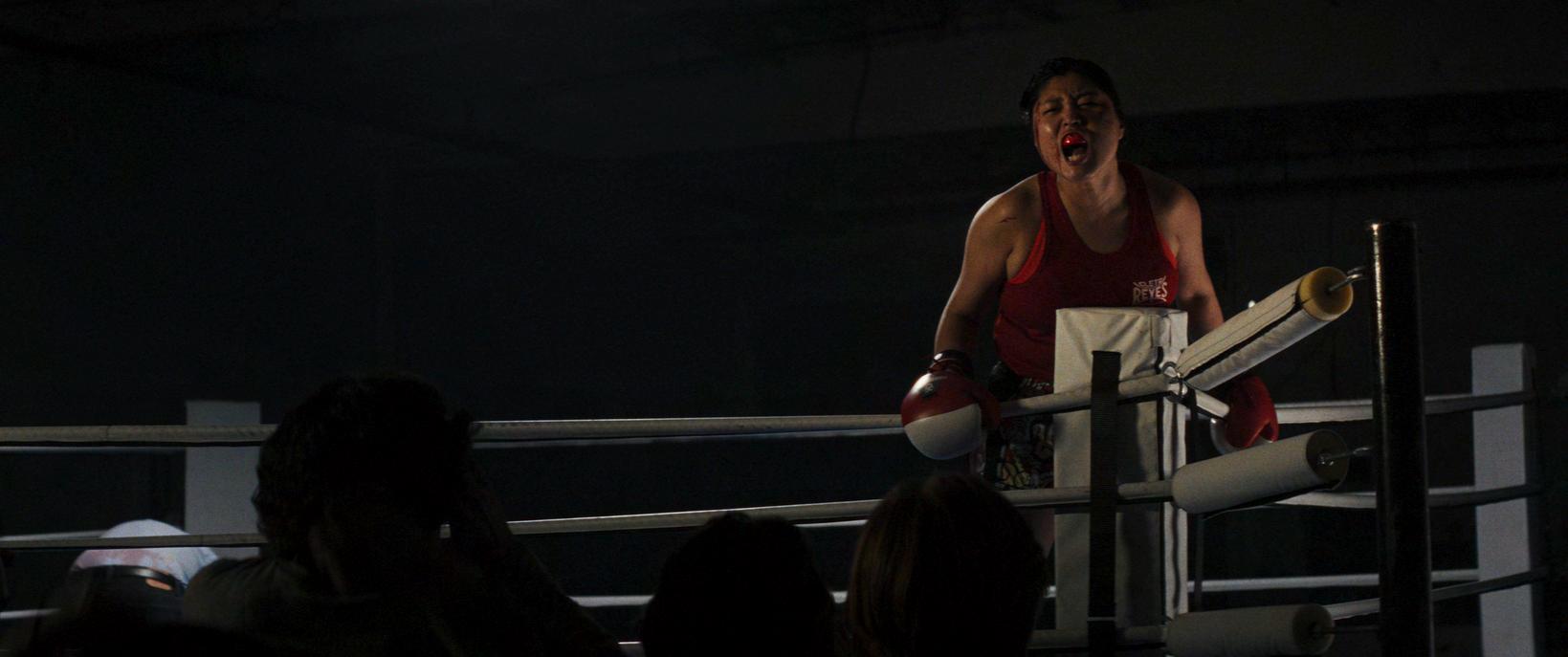
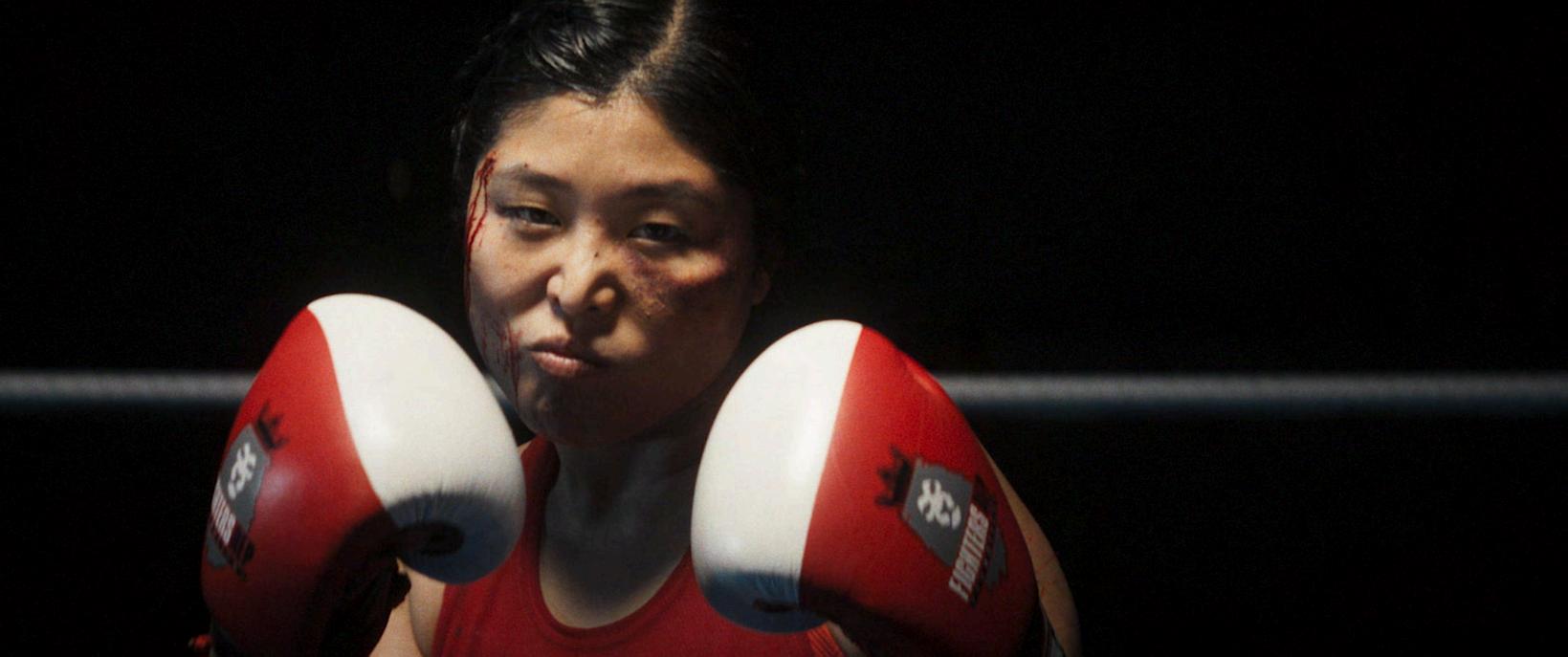
Back then, they weren’t very close because he moved away. In 2016, Vahan decided to take a trip to South Korea. He remembered by chance that Donald was living there at the time and asked if he wantedtomeetup.Tohissurprise,Donaldsaidyes. The pair decided to go to a bar and caught up about the last few years. Vahan describes Donald as someone who was easy to talk to and someone with whom he wanted to share his dreams. As they clinked their glasses, Vahan mentioned to Donald thathewasthinkingoffilmgraduateschool.Vahan pitched the initial idea of the K-Town Killer. Two years later, Vahan and Donald found themselves enrolled in the same cohort at Loyola Marymount University.
Vahan said, “I wanted to ensure the story was respectful and authentic. It felt inappropriate if I made a film about an Asian family without being from that culture. I'm thankful I had my co-director, Healin and my DP, Donald to lend a critical eye. There are little details that you miss. For example, the main character gets injured, and an egg is put on her bruise. This is typical in Korean and Chinese cultures but I didn’t know that. I’m glad my colleagueswereintentionalaboutthesedetailsand communicatedthis.”
ThefilmscreenedattheTribecaFilmFestivalinNew YorkCity.IaskedVahanabouthisexperiencegoing to the festival. He said, “It was one of the most fun weeks of my life. I went to mixers and parties with my crew. I got to talk to some amazing people. I mean, it’s New York City, which is great.” He mentioned the importance of moving past competitionandchoosingcollaborationinstead.
Vahan’s film was also screened at the UTA Next GenerationShowcaseinLosAngeles.Hementioned that he’s grateful for all the opportunities he’s received.

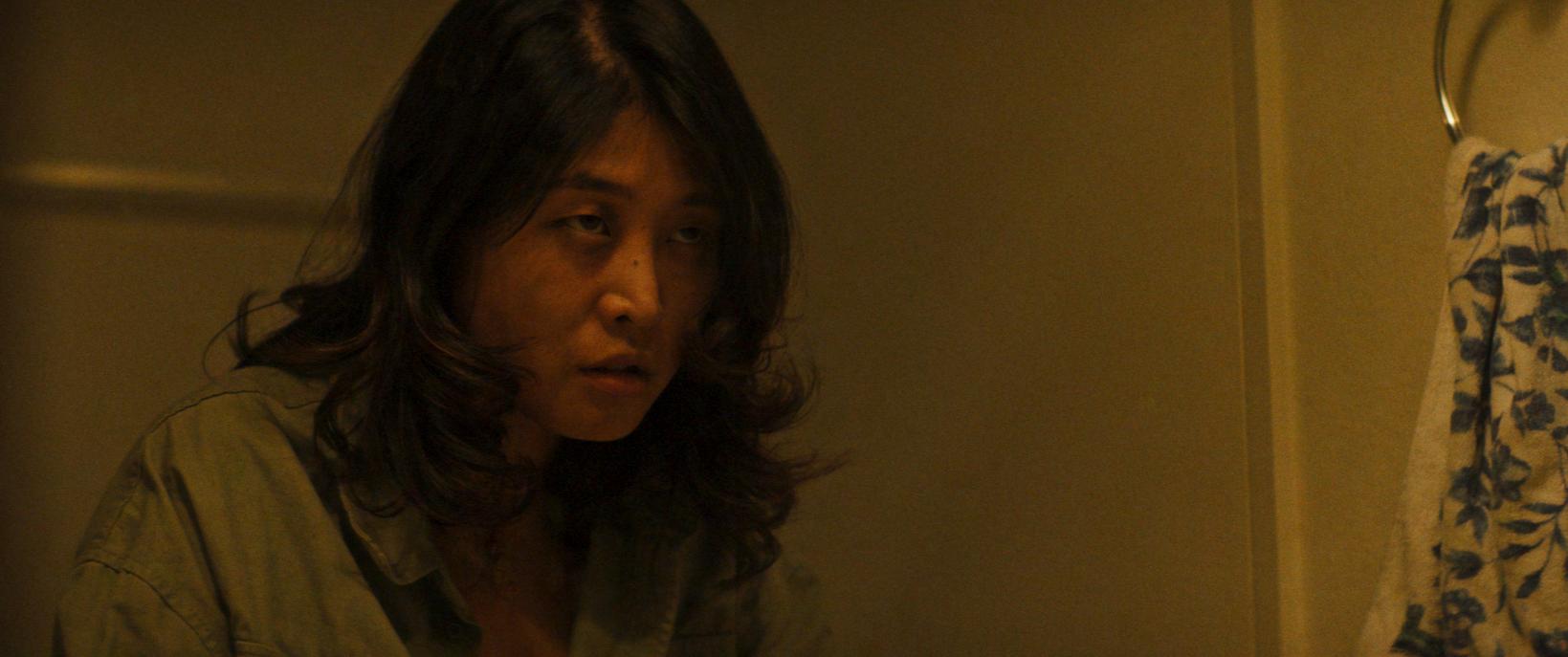
Whenhe’snotdirecting,Vahanmakeshislivingby editing.Hehaseditedallthefilmsthathedirected himself.Itisquiteagruelingprocess,andwhenyou edit your own work, you can quickly become blind tothemistakes.Hesaid,“Ienjoyediting.Igetinthe zone. Producing is another story. There’s a ticking clock closer to production, which makes me anxious. With editing, it’s just you and the edit.” He also enjoys being a production designer and a choreographerforfightscenes.
His short film, Jacob+Malika, the story follows the relationship of an interracial couple. He wrote the film after the tumultuous presidential election in 2016. There was a lot of racism and discrimination againstMuslimpeopleduringthistime.Hewanted to explore themes of grief, immigration, deportation, and love. He had cultural consultants onthisfilm.Atthetime,heworkedatFacebookand was a part of a film co-op called Scary Cow. This crewhelpedhimshootintheBayArea.Vahansaid, “One of my coworkers was my cultural consultant. She said that the main character shouldn’t be wearing Hijabs at home. At least where she’s from, shetoldmethatIneededtofixthat.”Itisclearthat Vahan has always taken great care in terms of culturalaccuracy.
We discussed his other film, FireHouse. FireHouse settherecordformostviewsonaFacebookvideo for Creatives 4 Democracy and earned a combined13,000viewsacrossallplatforms. Vahan spoke of his civic duty to do more than just vote. Whilepoliticsaretricky,Vahansaid,“Asfilmmakers, wemuststandonbusiness.I’mnevergoingtobea filmmakerthathidesmypoliticalbeliefs.Iknowit’s scary for people to do so, but we shouldn’t be. We have a crisis of information. I grew up watching Disney films that taught me the values of love and acceptanceofthosewholookdifferentfromme.

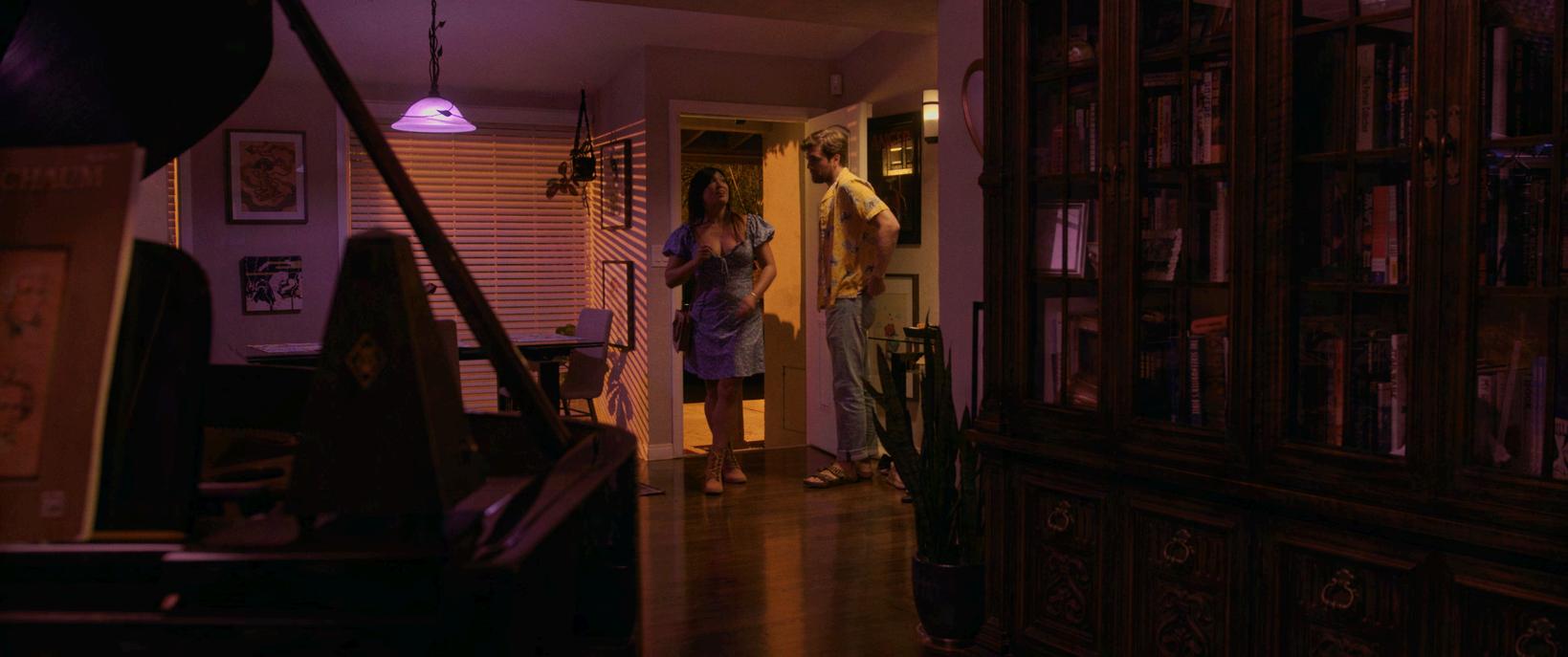



Thestuffthatyoungmenarewatchingnow is a serious problem.” Vahan created this film for M. Night Shyamalan’s film contest regardingtheimportanceofvoting.Hesaid, “Votingislikepickingbetweentwohousesto buy. You’re analyzing everything about the politics from the little details to the big picture.” Vahan spoke about filmmakers’ responsibility to be role models for the next generation.
A part of Vahan’s unique background is his affinity for martial arts and combat sports. Because he grew up in Irvine, which was mostly safe, he was interested in the sociologyofviolence.Hehatesviolenceand does not like watching it. Ironically, Vahan still wanted to build up his fighting spirit. He said, “I wanted to test my limits. It’s also a stress reliever. As a filmmaker, my mind goes the speed of a million thoughts per minute. Will I make it in this industry? Will I continue to make films?" When he does Jiu Jitsu and Muay Thai, all those thoughts disappear. He raises his fists, eyes wild with determination, and strikes his opponent. Vahan has been practicing his drawing skills, too. It helps him focus and carves out hismeticulouseyefordetail.
By extension of martial arts, Vahan started his filmmaking journey by creating documentary films about athletes. In the fighting world, he’s filmed and interviewed various UFC fighters. There’s a difference between non-fiction documentary and narrativefilm.Vahandideverythinghimself, from shooting the videos to editing them. Because non-fiction documentaries were moreaccessibleforhim,hewasableto
strengthen his skills when working on the feature-length version of TheK-townKiller. He said, “A lot of the film was inspired by true stories and real experiences of these fighters. Currently, Vahan is working on his film, Split Open, which was shot with the stuntdoubleoftheK-townKiller.Hisprimary focusisthefeature-lengthversionoftheKtownKiller. Vahan has been developing the feature with Healin Kweon and his team closely . I asked Vahan about the current themes of his films and what kinds of films he wants to explore in the future. He said, “The film I’ve made explores the theme of violence, but actually, those aren’t films I wanttomakeallthetime.Iwanttoexplore the theme of ambition and how life won’t alwaysturnouthowyouexpectitto.”
Finally, Vahan would like to thank his parents for supporting his creative pursuits. He would like to thank Donald Nam and Healin Kweon. He has worked with Donald the most. He said, “Donald has always pulled through on risky projects. Healin is often the glue on set when times get hard. She always tries to create a plan.” Vahan would like to thank the film actor Kahyun Kim and congratulate her on her new televisionseries.Hewouldalsoliketothank Mischa Livingstone and Mary Kuryla, professors who have helped shape his creative voice. He wants to thank Jack Huang,thestuntcoordinatoronthefilm,for allofhisimmensework.Last,heextendshis thanks to Vinicius Cosac, who was another stunt coordinator who passed away recently. All of these people have collaborated with Vahan one form or another.

BY: MILLA NGUYEN
I had the opportunity to interview my good friends and respected colleagues, Mehrin Saleem, Makayla Rabago, and Libby Morehouse. All three women graduated from Loyola Marymount Law School and are currently on their way from entertainment lawyers to attorneys. Mehrin’s childhood started in upstate New York City and the Massachusetts (greater Boston) area. Her family also moved to Singapore for a couple of years. With such a diverse background and the ability to adapt quickly to new cities, Mehrin found herself passionate about being explorative. She fell in love with the idea that people from all different parts of the world can still connect over various subjects. Regarding her career, she found herself interested in international affairs and international business. She attended UC San Diego for college, where she took classes in entrepreneurship and intellectual property. There, she read copyright cases and looked more deeply into patent law. One of the first cases she read discussed comparative similarities in screenplays. She wasn’t a filmmaker, but that didn’t stop her from curating an artistic eye. In
her own way, she explored how she could contribute to art through law. She said, “I wanted to make a career by supporting artists. With the legal and analytic mindset, I can consult creatives on their projects.” Having an Asian background, she thought she was going to be a doctor at first. Little did she know that her path would be completely different.


Diving deeper into Mehrin’s experience at LMU, I asked about her extracurriculars outside the classroom. Mehrin worked on the Entertainment Law Review, a published journal at LMU (ELR for short). She served on the board as the Chief of Alumni Relations and Symposia Editor. Her tasks included bringing in entertainment alums from across the board. She organized panels, discussions, and the larger Symposia at the beginning of the Spring semester. She interviewed various alums from HBO, Disney, and various law firms. The journal itself explores legal issues in the entertainment industry. For example, she mentioned one of the other interviewees, Libby Morehouse, who wrote a note on the legal ethics of child celebrities. The members of the journal wrote smaller notes that were digitally distributed. Mehrin said, “From my perspective of being in a leadership role, we worked together with every team to ensure that one source was cited correctly. We focused on the end goal and the vision. We worked really well together. Not everyone there wanted to be an entertainment lawyer, so it was nice that we could still express our love for entertainment interests.”
I asked Mehrin what three words she would use to describe herself. She said that she considered herself a driven person—someone who is creative and also giving. When I first met Mehrin, I could tell she had a powerful voice and deeply cared about what she was working on. While you can never really know everything about a person when you first meet them, I could tell she was also gentle with her words and gestures. In the field of entertainment, it is important to be personable and friendly, especially towards clients.
When it comes to favorite classes, Mehrin loved taking her copyright class. She recalled enjoying the final exam, which doesn’t always happen in her classes. She was excited to hear the professor’s thoughts and her classmates' thoughts. She was able to apply the principles she learned in class and brought them to her internship at Sony. She said, “I was able to talk about pop culture in a relevant way. I saw a direct application when we were drafting and learning about business affairs terms at Sony.” Further in the discussion, I asked Mehrin if she could give some insight into what filmmakers can do to avoid legal mishaps (especially as students who are not trained in deal-making or the law).

She said, “It’s not that filmmakers always need to know what questions to ask or the legal specifics but I think it is important to have awareness. Large commercial studios and independent companies operate on different systems. The story is important, and so is having boots on the ground during the set, but the business side is just as essential. How are people getting paid? How are we securing locations? You could have all these ideas and talk about them with filmmaker friends, but selling your idea is a different ball game. When screenwriting, these aspects will cost money. As a junior lawyer, I constantly learn about the film industry ecosystem. You need to understand who the players are.”
Mehrin spoke about her internship experiences during law school. She started at Fremantle Media, where she worked on unscripted and scripted television. At the time, she learned the rules of the game. Then, she went on to intern at Sony. She mentioned how supportive her boss was there. She worked in the business affairs side. There, she saw how deal-making was an integral part of the system. The WGA strike caused a significant disruption to the business at that time. Mehrin observed the various perspectives in her workplace and on the trades. Sony trusted Mehrin to handle communications between a wide array of talent and agents on overall deals. While it was stressful, she learned to manage her stress and be productive. Afterward, she worked at Marvel, where she looked at high-level deals and assisted executives; now, she currently works as a junior lawyer at Disney, where she can take the reins and make her own deals. She said, “Every day has just been growth after growth. Looking back on my journey, I wouldn’t trade it for the world.”
I asked Mehrin if she had anyone in her life that she would like to thank for supporting her in this journey. Mainly, she talked about family. She said, “Definitely my mom. I’d like to think the universe gave me my mom and my sister at the same time. She grew up with only brothers. I have my brother, too. My mom has always kept me optimistic like a best friend, no matter the circumstances. She’s a light in my life and is so positive in how she sees the world. I can get really negative at times. We talk everyday. I love her.”
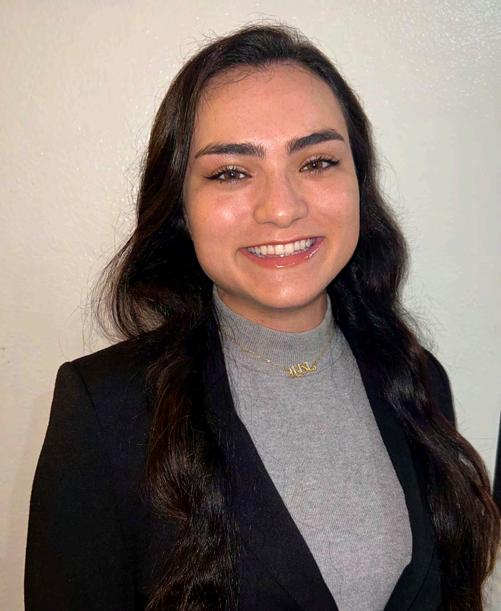
Writtenby:MillaNguyen
I had the opportunity to interview my good friends and respected colleagues: Mehrin Saleem, Makayla Rabago, and Libby Morehouse who are currently on their way from being entertainment lawyers to becoming attorneys. All three women graduated from the Loyola Marymount Law School.
Makayla Rabago was born and raised in Los Angeles. Still, that doesn't stop her from quenching her travel bug. She has traveled to many countries around the world. One notable location is Spain, where she studied abroad in college. She went to the University of California, Irvine in Orange County. When she was younger, she was motivated to do something bigger with her life. At first, she thought she wanted to become a doctor but quickly found that blood made her queasy. In high school, she did mock trials and loved how she could express her voice robustly and analytically. In college, she studied criminology, which stemmed from her love for the show, Criminal Minds. She appreciated the investigative mindset in law. When she graduated, she knew she wanted to pursue her dream by attending Loyola Marymount’s law school.
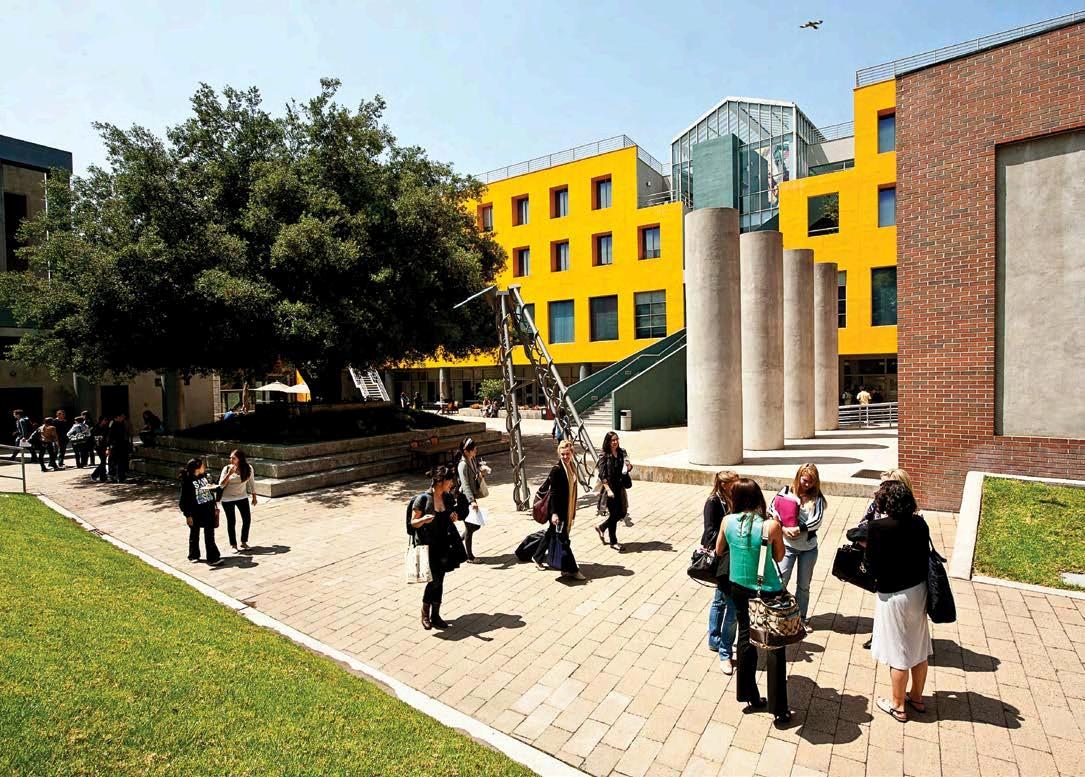
Many students go to law school for many different forms of legal careers, but it wasn’t until arriving there that Makayla considered going into entertainment law. After talking to filmmakers at various studios, she understood the difference between business legal affairs and general counsel positions.

For reference, A General Counsel is a legal leader who manages the legal team and provides legal advice on a range of topics, including corporate governance, contracts, regulatory compliance, and intellectual property. They also ensure that the organization complies with applicable laws and regulations. Oftentimes, the CEO and higher executives rely on them for advice. Business Legal Affairs roles include entertainment lawyers, intellectual property negotiators, and other specialists in contract agreements. Most of the time, companies will have these specialists and lawyers work together on multiple projects.
Makayla noticed that this was transactional work and wanted to be a litigator first. A litigator is a lawyer specializing in representing clients in legal disputes or litigation in a court of law. Litigators handle all aspects of the litigation process, from the initial investigation to the final appeal. They may work for a private law firm or a government agency. Makayla would love to work as a lawyer specializing in event spaces, especially for musicians. Other examples she gave were large audience events at film festivals like Cannes or Sundance. She mentioned how she’s a fan of the AMC Stubs program, which allows patrons to see multiple movies every week for a discounted price. Combining her love for all forms of entertainment and her legal skills, she has proven herself to be multi-faceted.
Makayla mentioned that there were three major publications at the Loyola law school. You had to apply and were placed in specific areas. She recalled the members' group trip to the Academy Museum. She said, “ELR was an all-encompassing publication and proved helpful to many law school students when exploring different ideas.”
I asked Makayla what three words she would use to describe herself. Makayla said she would describe herself as ambitious, social, and lighthearted. When I met Makayla, the same time that I met Mehrin, she was poised and kind. She seemed curious about entertainment and was unafraid to go where the wind took her. In entertainment, creatives struggle with spontaneity and crave a set structure to minimize risk. This is not always the case. It’s important to be able to adapt.

Makayla spoke about how the Entertainment Law Review allowed her to make friends and encouraged her to further pursue a career in entertainment.
Makayla said that her favorite classes were copyright and trademark. While she’s in general practice now, she enjoyed the niche classes that she took. One that stood out to her was a legal innovations and services class. The professors brought in guest speakers from firms that helped clients from firms that helped clients from underrepresented countries and with fewer resources. Digital technology today is essential in numerous cases. Makayla gave the example of software that takes police cam footage and analyzes all the major time points in that isolated incident. In current issues like police brutality being at the forefront, technology has changed how legal professionals analyze cases.
Regarding advice on how filmmakers can be more prepared, Makayla said, “I’m on the other end of it. Rather than making the deals, we see how the deal is solidified at the end. Filmmakers might assume things are going well, but problems can ensue when starting new ventures. Sometimes, it could end in a lawsuit.” She advises people to ask many questions and to have as much integrity as possible.
During Makayla’s internship journey, she spoke about working for a judge and seeing various attorneys. She said her eyes opened when she realized how vast the legal ecosystem is, consisting of small boutique firms and large legal firms. Her second internship was the pre-cursor to her current position at DLA Piper. She was able to shadow and participate in entertainment deals as well. She said, “ I appreciate that many women of color like us can expand both the legal and film spaces to encourage and improve diversity.”
I asked Makayla if she had any advice for her younger self. She would like to say, “It’s not always that serious. Everything happens for a reason.” She said that she wants to be comfortable with taking her time. She said, “Regarding law school, competition is not always healthy. I think striving to be better and respecting others is worth more of your time. In my opinion, collaborating is the foundation of what we do. You are going to get as much as you give. I love hearing what people are doing and connecting in that way.”
Makayla would like to thank and acknowledge her mom for always supporting her on this journey. She said, “I love my mom. She has always been my rock. She’s a fighter, and I inherited that from her. I admire her positivity and the fact that she’s always cheering me on. I tell her that she’s immortal. She’s here forever. That’s the only way I can see it.”


Writtenby:MillaNguyen
I had the opportunity to interview my good friends and respected colleagues, Mehrin Saleem, Makayla Rabago, and Libby Morehouse. All three women graduated from Loyola Marymount Law School and are currently on their wayfromentertainmentlawyerstoattorneys.
Libby Morehouse was born outside of Chicago. Then, her family moved to the state of Vermont. She studied political science in college but didn’t fully want to go into politics in the future. On the other hand, she double majored in theatre. She recalled pouring her passion into theatre during difficult times. For a year after graduating from college, she worked as a theatre technician on a cruise line. She said, “It’s a form of escapism. People could just come to my theatre and forget their worries. I didn’t want to let go of my dreams of working in law. Maybe, there was a way I could marry the two. This is when I startedlookingintoentertainmentlaw.”


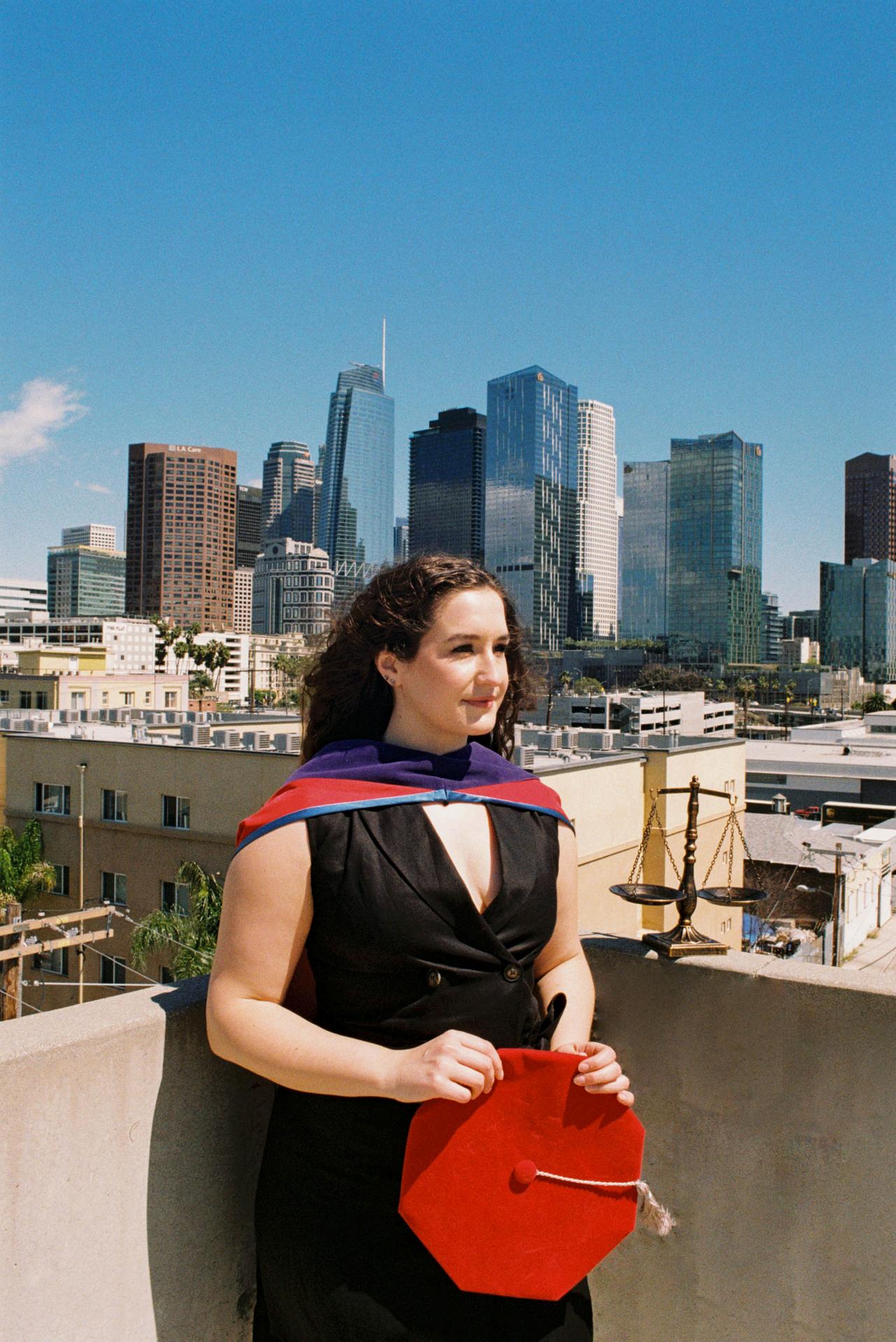

She moved to LA and uprooted her life. I asked Libby why she specifically chose to attend Loyola Law School. She explained that LMU alumni exuded a sense of friendliness and community. She received a warm welcome, and this is what clicked for her. When she finally got to LMU, students were technically eligible to transfer to other law school programs. At first, she wondered if she wanted to, but ultimately chose to stay because she built a community at LMU. She mentioned ProfessorShapiro,whoconstantlyencouragedhertogrowwithintheprogram.
During her time at LMU, she was the Senior Production Editor of the Entertainment Law Review (ELR). She said, “I have never been a part of a newspaper or journal before. I don’t consider myself someone who always enjoys writing. However, I was super interested in the community impact and the network of people. I enjoyed the research side and checking the citations.” When I asked Libby about special projects she worked on. She mentioned her case study on family Youtubers and mom vloggers. She said, “I saw what these mom influencers put their kids through. I researched privacy and protection laws. Because the moms are oversharing so much, that kid will have to look back and see the entire internet was watching them grow up.” She dove deeper into the proposed laws regarding this matter. She found that the Coogan laws passed in California helped fill the gap in child labor laws. Most of the laws prior excluded child entertainers and child celebrities. Pop singer and actor Demi Lovato released a documentary, Child Star, which comments on the passing of this legislation. Libby said, “Maybe my case study didn’t change the world, but it was cool knowing I was researching something that was actively happening at the moment. I want to be a part of positive legal change.” Libby and I discussed the hierarchy of Hollywood. From the low-ranked interns to the high-level executives, laws must be implemented in order to prevent workplace abuse orunethicalpractices.Shesaid,“Wejusthavetohopeforabetterfuture.Inotonlyhopeforit,but I want to also actively work towards it. I think social media is a way for people to break down barriers and reach success. That structure is a bit easier than the traditional way. By gaining a platform, it’s hard to ignore those voices.” I asked Libby if she had any advice for filmmakerswhoarenotexperiencedindeal-makingor entertainment law. She said, “I recommend everyone to take an IP class. Your value in the industry is your intellectualproperty.
If you don’t go to law school, it’s impossible to know everything. Still, you need to align yourself with your agent and the executives who are willing to work with you instead of taking over completely. You need to have a lawyer who will point out important aspects. If you’re a filmmaker who is younger in experience, there will be a limit to your rights and say in the deals.” Libby asked me the questions: Are you okay with giving up merchandise rights or rewriting capacity control? Is it a project that you want to shop off and be done with as long as it’s made? Is the project so intimate that you don’t want to forfeit the whole creative vision?

Libby made points that are essential to dealmaking. She recommends people look at sample contracts to learn these legal terms. She presents an analogy: your creative rights are a bundle of sticks. It’s up to you to decide how many sticks (rights) you want to give away and keep. How many sticks are you willing to give away on each project? Once you give up those rights, you can’t get themback.
She also mentioned that screenwriting is very integrated with legal matters. For documentaries or biopics, the writer must be careful about defamation and the acquisition of life rights. She said, “People in entertainment care about image. That is the business. People care about perception. If your lawyer tells you to edit your script, you should probably listen. Minimize the riskoflawsuits,pickyourbattles.”
Libby’s current position is at Gordon Rees Scully Mansukhani, a large law firm in Los Angeles. She works in employment litigation. She said, “No matter the industry, nothing gets done without employment contracts. I want to apply this to other entertainment law positions in the future. Learning these skills will allow me to better represent my clients. Studios hire their counterparts at these big law firms because theyknowtheycanbegreatnegotiators.My end goal is I want to be a talent attorney. I want to help artists protect their IP, especially as these major studios consolidate moreandmore.Iwanttofightforart.”
I asked Libby if she could describe herself in three words. Libby acknowledges that the legalindustryisnoteasy.
Whether she is reviewing cases or collaborating with team members, she feels that it is draining. She said that she feels weird or out of place at times because there’s so much to learn, see, and understand. Still, this doesn’t stop her. She is immensely passionate about what she does. Her moral goals also drive her. She said, “I’m internally driven. I know what changes I want to see in the world. I don’t know how to get there, but Iknowwheremyintentionsare.”
When I met Libby, I could tell she was intelligent, bright, and enthusiastic. Her curiosity for life was contagious. In the legal and filmmaking professions, the two fields are bound by the idea of keeping that creative spark alive. As Libby mentioned, it is important to build yourself with strongmoralintentions.
Libby said that community is also extremely important to her. She believes that’s the heart of storytelling. She said, “One can enrich the other. While I’m not a filmmaker, I can help give a voice to those who may not have one in court. I can helpmovetheseprojectsforward.”
Finally, I asked if she had anyone she would like to thank or acknowledge during this journey. Libby said, “My entire immediate family. I have to talk about my Mom. While driving home from the grocery stores on Sundays, I chat with her about my day. She’s truly my best friend, and she grounds me. Everyone at Entertainment Law Review, especially Alyssa Garcia. She and I ran the Malibu half marathon and trained together. Last, I would like to thank Allison Binder, who is an amazing attorney and mentored me throughout law school. She’s always been someonewhohasencouragedme.”






Beth Serlin received her MFA in Screenwriting from University of Southern California and her Bachelor’s degree in Arts and Ideas in the Humanities/Creative WritingfromtheUniversityof WRITTEN BY: ASMAR ISAYEVA


Michigan. She is an international screen-

writer who won Best Screenplay at the Tokyo Film Festival for Beyond Silence (Jenseits der Stille), which was then nominated for Best Foreign Language Film at the 1998 Academy Awards. She’s since written for the major German broadcasters Pro-7, ZDF, Sat1 and ARD.
Beth has also worked as a story analyst for New Line Cinema, CAA, SpringCreekProductionsandtheSundanceInstitute.
It’s 10:58 am on a sunny but oddly windy Tuesday morning, and I’m rushing to Xavier Hall on LMU’s main campus. “I cannot be late, I cannot be late!” is the only thought on my mind. When I arrived, I noticed her office was just as eclectic as her personality. There was a framed Simpsons-style photo hanging on the wall that transported you to Matt Groening’s universe. Next to it, a 40 x 60-inch poster of “Dschungelkind”,amoviesheworkedonyearsback.Sheheldupared petitedevil(adeskknickknack)withabombgoingoffonitshead.The sculptorcalledit'TheBigIdea'whichisperfectforwriting.



Beth Serlin lives and breathes stories. This is also apparent in our interview, which begins with a heavy question: who is Beth Serlin? Her path started with still photography. She said, “ I wanted to capture a whole story in a single image.” With a major in creative writing, her interestinwordsandpicturesledhertoalocalnewspaper,whereshe worked as a photographer. Sometimes, the images didn't always match the article due to a lack of communication. Sensing something wrongwiththisapproach,sheaskedifshecouldwrite,too.That’show she got to travel logs. While she enjoyed traveling and writing, she craved a style of writing that was more thematically grounded anddiscovered screenwriting. After three years learning the nuts and bolts of filmmaking in New York, she decided to get a MFA in Screenwriting at USC, thinking she would head back East once she was done. LA had a lot to offer, including amazing mentors like Frank Daniel and former professors who taught Serlin at USC. Her thesis advisor introduced her to German producers who were prepping Writer-Director Caroline Link's debut feature. Almost everyone in her life advised not to take the job, saying out of school she should be lookingforanagent.Serlinlistenedtoherinstinctsinstead,wantingto practice her craft and not caring what country she worked in. She collaboratedwithLinkoverfax,rehashingtheoutlineandrewriting.


Lo and behold, that German project “Jenseits der Stille” was later nominated for Best Foreign Language Film at the Academy Awards and won Best Screenplay at the Tokyo Film Festival. This opened up many opportunities for Serlin in Europe, where she's been working ever since. People thought she’d preach the Hollywood structure. But little did they know that her education came from Frank Daniel, who wasCzech.“ItwaslikebringingtheEuropeandramaticconstructback to Europe. Today I'd call it International or global structure” And, to those who wonder (because I did) about her working with Germans without speaking German, Beth has only one reply: “I speak film, and that’saninternationallanguage.”Nowshecan’thelpbutempha


the importance of travel, particularly for creatives and particularly for writers, “to fill up the well.” She recalled, “I remember thinking to myself, I would love to find a job that would allow me to travel... you put that intention out in the universe and follow your instincts. Suddenly, I realized that intention became a reality when I started working with many German production companies. I also started teaching abroad on a Media Plus development program involving writers from more than 15 countries. I was so interested in meeting global creatives and hearing what they thought a story was and what theythoughtwasentertaining”.

After working worldwide, she finally returned to make Los Angeles home base. “I always wanted to be a teacher-practitioner. Helping studentsfindtheirvoiceandelevatetheirstorieswillexponentiallybe a greater contribution to screenwriting than any single story I might personally tell. " Beth Serlin has been at LMU for 20 years now. I wanted her thoughts on how it has changed over time. She said, "I think my first graduate class was one section, 8 students. Now, we have 2 MFA's and it's about 20 a cohort. In both the undergrad and the graduate programs we've quadrupled in size. The department is settingavisionofhowwecantrainwritersontheheelsofapandemic, on the heels of a strike, on the heels of industry retraction. Being able tofocuscreativelyinadisruptiveatmosphereisamuscle."
"LMU was once the best-kept secret on the bluff. We’ve grown out of that into a highly ranked program attracting top-tier talent. Ultimately, I see SFTV being the destination for writers domestically, even globally."
Let’s talk about international student success. "For international students, coming to study in the Statesis 1000% different. Even if you’re from an English-speaking territory, it’s still going to be a cultural roller coaster. When International students return to their homecountry,Ibelievetheyarereturninginamuch-elevatedp



for success. For those students staying here, I always advise them to into their special sauce, which is where they come from. The combination of their American training and their distinct cultural background is what will distinguish them in the market. " she explained. I asked Serlin how she keeps up with her writing. As the ChairoftheScreenwritingDepartment,shehasalotofresponsibilities and little time. She said, "For many years, I was actively working for producers;someofthemdidn'tevenknowIwasateacherandnoneof themcared.Fromtheirperspective,Iwasworkingforthem.Theywere the boss. I could not miss deadlines, even if I had to teach. So, it's just about time management. To make my career go, I excelled in serving the vision of a producer or a director." Now, she's breaking her own barriers by working on original material. She said, "Over time, I’ve developed the original ideas I want to write. But I need a deadline, so I'm taking a short fiction course at UCLA Extension in order to keep myself accountable. I've shared this with my students: I'm in the same boatasthem.Istillfacetheblankpage."


Serlin discussed what she thinks students can do to get closer to their goals in the industry. She said, "Develop relationships. It's a relationship business; Ask yourself: Am I collaborative? Do I listen? How well do I respond? The program has developed to offer an intersection between cohorts, but ultimately, it’s up to the student to searchforit.WheneverIhearawritersaying‘I'mjustawriter,’I'mlike, no, no! You're giving a gift to the world, and you need to understand that you can offer other people something wonderful to work on. You must find your creative collaborators, your tribe, and when you do, hold on tight." Finally, I asked her if there was anyone in her life that she would like to thank or acknowledge. She said, " My parents were supportive and I’m incredibly thankful for that. I had an excellent high school English teacher, John Gould, who was inspirational and my grad school mentor, David Howard, has paved the way for me as an international teacher and writer by modeling a creative life that


WRITTENBY:KAHLILMASKATI




Shane Acker is a professor and the Chair of the Animation department at Loyola Marymount University. He has written, directed, and produced many short films, including the Oscar-nominated "9," which won Best in Show at the SIGGRAPH and the Annecy International Animated Film Festival in 2005. Acker directed the full-length theatrical version of 9, produced by Tim Burton. His 3D animation and pre-visualization work can be seen in such films as Lord of the Rings: The Return of the King, Oz The Great and Powerful, and Total Recall. His multidisciplinary arts background includes a Master's in Architecture and a Master of Fine Arts in Animation degree from UCLA. He teaches at LMU, and has also taught at USC and the Gnomon School for Visual Effects. He is currently working on a project titled, Tengu Kami.
“I was always a very active kid,” replied Professor Shane Acker when I asked him what drove him to animation. We sat in his office on Halloween morning, which was fitting, given that Acker’s claim to fame is helming the animated film, 9. If you're not familiar with 9, it is a film that helped spark the thirst for horror animated films that still evoked sentimental emotions simultaneously. However, before all that career success, Acker started as an architecture student at the University of Florida. It wasn’t until he took his first animation class that he had an ‘ah-ha’ moment, thrusting him into a world of moving art. Later, he received his MFA in Animation and Directing at UCLA.
“Curious, tenacious, and humble,” were the three words Acker used to to describe himself, and all of those adjectives came through in his stories, his career journey, and how he carries himself now. “I didn’t know enough to be as intimidated as I should have been,” said Acker when I asked him about Tim Burton noticing his student film version of 9.

Throughout all of Acker’s answers, I found such an interesting duality of playful-kid-animator meets humble-professor. There was a light-heartedness to Shane Acker.
Then, when Tim Burton called him from London, super-confident-animator took over and got the pitch across the finish line. “The little film just kind of took off, dragging me behind it a bit,” laughed Acker. “It happened so quickly and seemed exciting. I had no context. The project got set up relatively quickly, and it wasn’t until someone said, ‘You gotta make a feature based on this’ that things started settling in. Like, ‘Wow, what happened?’ I was the dog who finally caught the car. What am I doing? How do I do this? It was a long and painful process to get the feature made. That’s when reality set in.” Afterwards, 9 was nominated for and won the Academy Award in the Animated Short Film Category. As Shane and I got more comfortable, I started seeing myself and my fellow students in his answers. The relatability of how frustrating it can be to go from creating to selling. “What is your relationship to the project, 9, and how did you feel it translated from short to feature?” I asked, having gone through something similar with a pilot of mine a few years earlier. “The short, for me, represents the story in its purest form,” Acker said. “It was me. I was shepherding it. It became this process over four years of evolution and refinement. When the feature was set up, it was low-budget and at a studio that had never produced an animated feature before. It was fun to collaborate with others, but it was overwhelming. I was so young. It’s really hard to watch that film, but I’m proud that it found an audience and inspired young artists.”
Continuing on with his career, Acker held a position at Wētā FX in 2004 as an animator, where he focused on CG characters and creatures, followed by NCsoft from 2005 to 2006 as both an animator and CG generalist. Wētā FX is a New Zealand company that went on to produce major franchises, such as the Lord of Rings trilogy and the Avatar series. Over the course of time, Acker won various awards at film festivals.
Acker and I got the deepest in our conversations when discussing a filmmaker's journey. He made honest points about the existentialism of being a filmmaker, impostor syndrome, and how he became a professor. “I feel incredibly fulfilled teaching. I fell in love with teaching when I was a TA at UCLA. I fell in love with helping students achieve their creative goals. It was so incredibly rewarding. That’s why I like filmmaking, too. It’s creative problem-solving. When I first taught at LMU, I was like ‘Wow. This is really cool. This is a beautiful campus.’




And I was just really impressed with the students. The drive of our LMU students — the creativity, the curiosity — was really refreshing. It’s a pleasure to teach students and creative minds like that.” Finally, he would like to thank his family for supporting him throughout his career. Especially his wife and kids who he constantly shares his work with. He would also like to thank his fellow LMU faculty members and animation colleagues in the industry as well.
When describing his career today, Acker said, “When you get older, you hustle because you want to hustle, not because you have to hustle. I’m developing my projects on the side. I’m always learning and evolving as an artist, as well. My passion is still storytelling and making projects.” My favorite quote from Acker, and probably the one that best sums up our talk, was, “People don’t know how to describe 9, but they know how it made them feel. That’s the medium we work in. There’s two games we’re always playing.” I believe the two games Acker’s referring to are, as artists and as film students at LMU, we have to go off and make things that make no sense, but then be able to verbalize why we did it and pitch it to a room full of people. We must always ask ourselves: Why do we do what we do? It's up to us to find those answers like Shane Acker did.
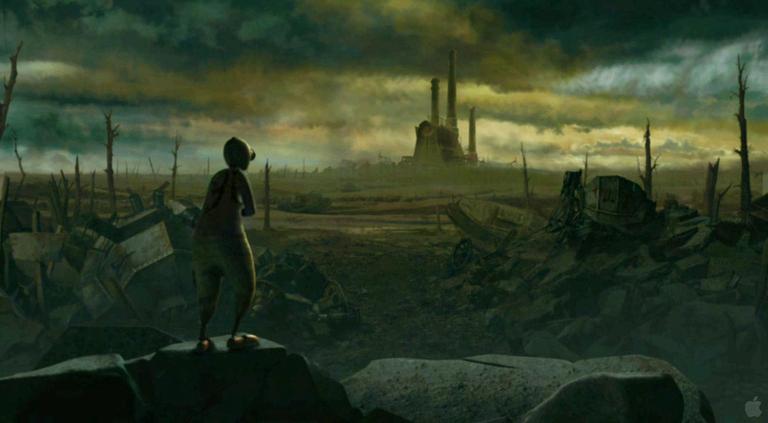
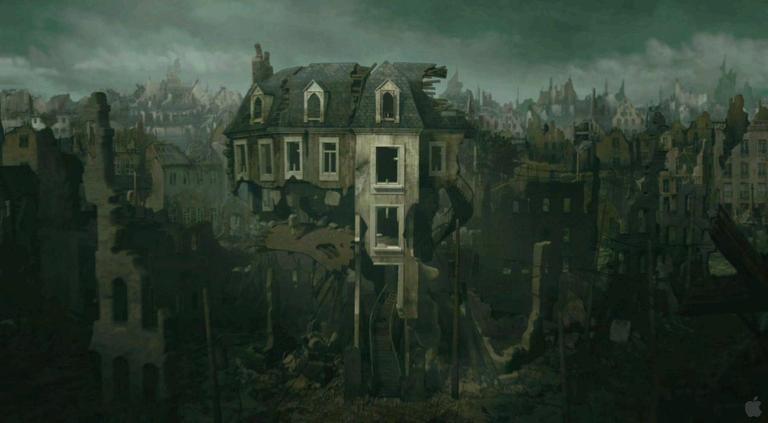
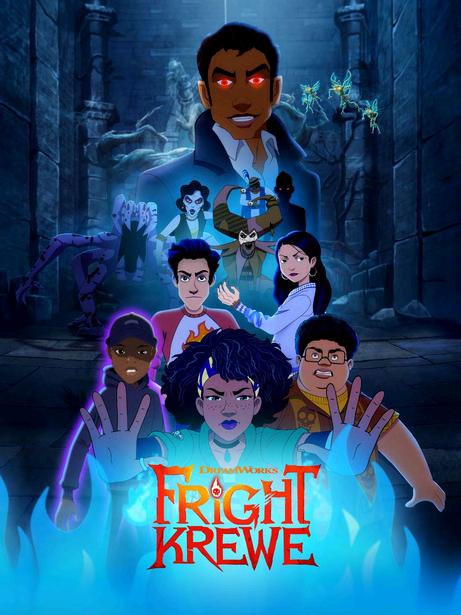
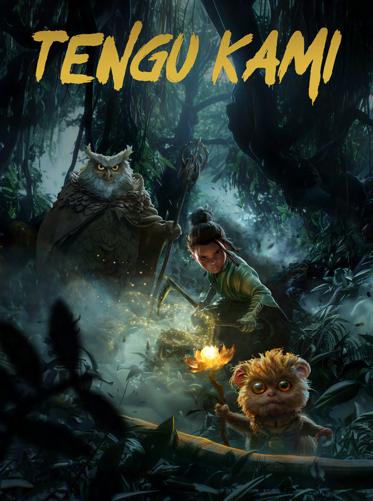


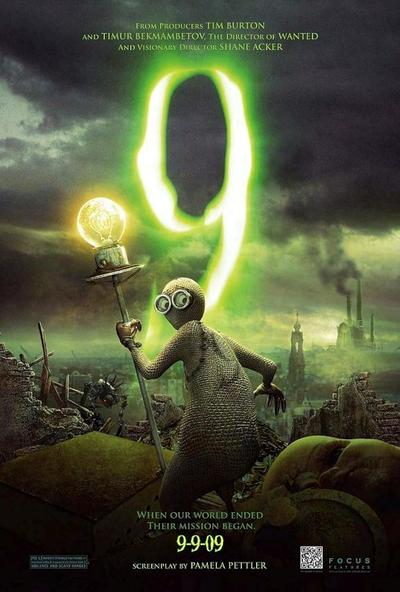

written by: Milla Nguyen
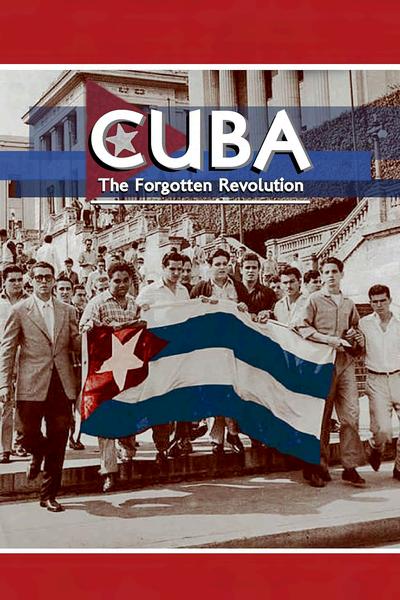
Glenn Gebhard is a professor and the Chair of the Production program at Loyola Marymount University. Glenn Gebhard is an Emmy® award winning film and video producer/director of documentaries and narrative films. He is also a professor at Loyola Marymount University’s School of Film and Television in Los Angeles, California. He has a BA in European History and Spanish from the University of Dayton, and an MFA in Film Production from the University of Southern California. Gebhard achieved Academy Award consideration in 2005 for the short documentary film “Victims of Another War: The Aftermath of Parental Alienation”. Gebhard has also produced and directed three feature fiction films, which were distributed worldwide. His recent work includes a series of four documentaries called "Cuba at a Crossroads". He also completed “Cuba: A Lifetime of Passion” with HD net, “Crossing Borders/A Cuban Returns”, which aired on PBS, “Baymen”, aired on New York's Metro Channel and PBS, "Dreaming a New Cuba" for New York Times Television, aired on the Showtime Channel, and "A Farm Picture", co-produced by the Long Island Farm Bureau about suburban sprawl on the farmlands of Long Island, New York, and “Greetings from Fire Island” which won Best Documentary Award at the Long Island Film Festival. Gebhard’s latest documentaries are “Sarah Cecile” , a documentary about international child abduction by parents which was produced for P.A.C.T, an NGO based in London. Also, “Cuba: A Lifetime of Passion”, which aired on PBS, and “Cuba: The Forgotten Revolution”, co-produced by WTIU PBS in Bloomington, Indiana, and released by American Public Television to PBS nationwide. “Cuba: The Forgotten Revolution” won an Emmy® for “best documentary” and streamed on Netflix.Gebhardrecentlycompleted“AmericanRebelsinCuba”.

Glenn Gebhard received his Bachelor’s degree in European History and Spanish. Afterward, he applied to film school after discovering his love for the visual medium. He originally planned on attending New York University but was deterred when he got into a major car accident. He ventured to California for the first time. Gebhard was later accepted to USC. He first worked as a taxi driver. Discovering more about editing and directing, he worked on his craft. Down the line, he was asked to be a professor at Loyola Marymount University.
As we dove deeper into his work, I asked Gebhard why he made so many films about Cuba and Cuban history. He said, “Cuba was an important part of my life. I was interested in what a socialist country looked like. I planned to go to the Soviet Union, but then it collapsed. My plan B was Cuba even though I had to sneak in. In 1994, I remember seeing Havana. I took a taxi to the Capri Hotel, where they shot the famous film, I Am Cuba. I remember seeing Havana’s colorful rooftops.” Gebhard ended up shooting footage of Cuba and kept coming back to the city to film more documentaries. Gebhard researched the Cuban Revolution and became heavily immersed in their history. Gebhard and I spoke about the importance of travel and connecting with local communities. He said, “When I went to Cuba, I met Manuel. He passed away but I used to stay in a room he would rent out. We would sit around and talk about life. He got a visa and ended up visiting me in New York. We had one last conversation. Another man I met, Manuel Yete, a very intelligent person. He was the assistant Chief of the underground in Matanzas during the revolution. He talked about how dangerous the political conflicts were. I think you have to be hyper-ware of everything around you.” As filmmakers, travel helps me see the world in a different light.
Gebhard won an Emmy for his film, Cuba: The Forgotten Revolution. I asked him what this moment felt like. He said, “The revolution was more than Fidel Castro. Other people were involved but no one knew the full story. I was thrilled when I won the Emmy. I didn’t make the film for the award, though. It took me many years to finish that film. It was a passion project.” He expressed difficulties when making the film. With high production costs and financial support, Gebhard still persevered to bring the story to life. He explained that it’s much easier to make films today. There are more people, more technology, and more resources. He said, “My first Cuba film was on a tiny camera. I went by myself and had no money. I just shot little sequences about the people who lived there. To my surprise, I ended up selling it.”

I asked Gebhard about A Farm Picture, a film covering topics such as agriculture, the importance of farmers, and community building. Gebhard said, “I made a documentary about the fishermen in the area. I wanted to make one about farmers in a historical context all the way back before Europeans settled on Long Island. The history goes back to the traditions of Native Americans. There’s a history to the Hamptons and the North Shore, areas that rich people build on. Potato farms used to be on this land.” He mentioned that history, politics, and communities interweave as the common thread of his films.
When this interview was conducted, the 2024 presidential election had just passed. Gebhard and I spoke about the responsibility of educating audiences about important topics through film. He said, “We should make stories that are honest. Finding your perspective is important. We have a responsibility to tell the truth.”
Finally, I asked Gebhard if he had anyone that he would like to thank or acknowledge for supporting him in this career. He said, “I would say the editor that gave me my first assistant editor job. I learned a lot from him. All of my professors and teachers helped guide me in film school.”


WRITTEN BY: MARIA MURPHY RITTEN

Nearing the end of the semester and at the tail endofworkingontwelvedifferentstudentfilm sets, I began experiencing a semi-sophomore slump. My conversation with Miranda Banks, Associate Professor and Chair of LMU’s Film, Television,andMediaStudiesdepartment,was the motivating and eye-opening chat I needed to get through the semester. Professor Banks taught me a variety of things in our conversationtogether.
MirandaBanks’sprimaryareaofresearchisthe American film and television industries, with a specific focus on power dynamics in creative production.Sheauthored TheWriters:AHistory of American Screenwriters and Their Guild (Rutgers2015)andhasco-editedthecollections Production Studies (Routledge, 2009) and Production Studies, The Sequel (Routledge, 2015), as well as the recent book Media Industries in Crisis:WhatCOVIDUnmasked (Routledge 2024). Shedesignedamassivemultiplayergame, Room at the Top, which challenges implicit bias in collaborativelaborandilluminatestensionsthat arise



between individual gain and team building. It has been played at numerousfilmandmediaproduction programs across the country. Her most recent project is Hollywood Walkout: Creative Labor in the Age of Streaming, which will be published by UniversityofCaliforniaPressin2026.
Here are a few of the takeaways that I wantedtosharewithyou:
When I asked Professor Banks what inspired her to pursue this career she replied, “I grew up in Los Angeles, andbecauseofthatIhadafascination very early on with the history of Los Angeles....I became interested in the idea of L.A. as a company town. As she explained, Los Angeles has a number of industries, some of which actuallymakealotmoremoneythan thefilmindustry,butfilmisapartof the popular imagination.” Banks described a film studies class when she was an undergraduate. She was intriguedbyhowitconnectedpeople through time, history, and culture, andtechnology.Shesaid,“Inmyfirst yearofcollege,Itookafilmaesthetics class and I loved it. I thought to myself: I think I could study this for my entire life. And I think I could actuallyteachthisbetterthanthisguy teaching this class and in a way that's more engaging. I remember leaving class that day and going to a payphoneinthelibraryandcalling
my dad and saying, ‘Dad, I want to beafilmprofessor.’Andatthetime hehadajobthathedidn’tlike,and hesaid,‘whateveryoudo,findajob you love.’” My takeaway: find a job thatfiresyourpassion.
. Professor Banks spoke about the importance of choosing a career that not only fits your professional goals but also your lifestyle. With tumultuous changes in education systems, industry structures, and future uncertainties, students feel pressured to choose a career that will provide them job security, but what jobs someone chooses does not ensure job security. She said, “We often imagine what it’s like to havecertaincareersandonlythink aboutthebestmomentsinit.When I’m talking to students about their plans for their future, I urge them to imagine the mundane aspects of day-to-day life. Does the job fit with the kind of way they want to live? Being a screenwriter is very solitary work. Being a TV writer is much more communal. What works with your personality? She mentionedthatthedevelopmentof a career is always in-progress. Careerscanbefluid,andthat’swhy the journey to finding your passionsisanendurancerace,nota sprint. Life is about trying things out and learning from our own mistakes.

A job is what you get within a few years of graduating. A career is somethingyoubuildoveralifetime.
In the field of filmmaking within academia and the industry itself, filmandmediastudiesareoftenleft tothewayside.It’snotthefirstthing thatpeoplethinkofwhenselectinga filmmaking career. It’s also not the most seen or the most glamorous. Despite this, the field is even more significant today. With the constant shiftofdigitalculture,AI,andworld politics, media studies allows filmmakers to see what has become oftheirhistory.MirandaBankssaid, “I think that our field of Film, TV, and Media Studies is not totally understood. When journalists might be covering a particular topic, chancesaretheywillgotoadirector orproducertotalkaboutthestateof the industry, or an economist. I don’t think people are realizing that there are people who study the economy of Hollywood, how the industry works, and the nature of cultural changes in these kinds of films. This is even seen in various television series or video games. Humanities, the arts, and interdisciplinary scholars play key rolesinoursociety.”
Our conversation touched upon the value of collaboration within the departments at LMU. The school promotes values of teamwork, integrity, and service. She said, “I have a lot of colleagues both in this department as well as colleagues from other departments that are brilliant minds. We talk about how media studies aren’t being tapped into as resourcestoexplaincertaintrendsthat we’re seeing in... virtually in every aspectofmedia.Andweoftensay“who will write your history?” Banks mentioned the work of SFTV’s Associate Dean, Carla Marcantonio, who is a scholar of global melodrama and an expert on the films of Pedro Almodóvar, the famous Spanish film screenwriter and director, whose films explore issues of desire and identity. She also regularly serves as Pedro Almódovar’s interpreter. The idea of Professor Marcantonio being someone who is an expert on his films, and knowledgeable about film studies, as wellasglobalmelodramaisadmirable. Sheisabletomakewiseinterpretations about what he’s saying, and help the community of film-goers understand him. These nuances of interpretation are so impotant, and the fact that we haveherhereonourfacultyatLMUis averyspecialthing.”
RememberWhoGotYouHere
Finally,IaskedProfessorBanksifthere is anyone she would like to thank or acknowledgeforsupportingheronthis journey. She replied, “Two of my teachers.Myhighschoolteacher,Jim
Hosney, who taught me to be an active listener in the classroom. When my students are responding to something, I givethemmyfullattention.Partofwhat you do in the classroom is give students the confidence to express themselves through complex ideas. And I’m always grateful for my dissertation chair, John Caldwell.Iwouldturninchaptersofmy dissertation. At the end of each one....he’dsay“Onward!”Itwasthisidea of “Keep going, don’t turn back. Don’t fret on things and just keep driving forward”thatwasjustwhatIneeded.Get a draft on paper. And then rewrite, rewrite. But don’t stop until you at least haveafulldraft.”
This message of building yourself, your skills, and your community is extremely important within the filmmaking industry. Being a screenwriter, I’m among many of LMU’s SFTV students that feel anxious about our futures. Speaking to Professor Banks has taught me that pursuing what suits you best is how to combat these anxieties. Hearing aboutherincrediblepursuitsinstudying the structure of Hollywood, educating students on the politics of this industry, as well as the art of actively educating students on the politics of this industry, as well as the art of actively educating, has allowed me to feel hopeful about what’s to come. I hope that no matter whathappensinthisindustryandworld at large, professors like Miranda Banks willbetheretowatchitall,recordingthe storiesthatformwithit.





writtenby:MillaNguyen


Rodger Pardee is a professor and the Chair of the Recording Arts department at Loyola Marymount University. He received his Master’s in Film Production from the University of Southern California and his Bachelor’s degree in English & Integrated Studies with a Minor in Philosophy from the University of Nebraska. Rodger Pardee has worked in production sound, re-recording mixing, and sound editing. In 1988, he was invited to teach part-time at USC, where he stayed until 1997. In 1999, he joined the LMU faculty. Among his M.P.S.E. Golden Reel nominations are those for sound effects recording for ToLiveand Die in L.A., Waterworld and Men in Black, and sound editing for The X-Files: Fight the Future and Geronimo:AnAmericanLegend.
Rodger Pardee grew up in Nebraska. When he went to university as an undergraduate, there were no degrees for film production. However, there were elective classes in film studies in the English department. He ended up going to USC for his higher education degree. After his schooling, he worked on a television show called Miami Vice and several films as well. Then, he was invited to teach at USC. Down the line, LMU had an open teaching position. I asked Rodger Pardee what his most fulfilling experiences at LMU were. He said, “Most of the classes I teach include sound design, but not all students are particularly interested in it. But they need the skills to make their short films reasonably presentable. I at least want them to understand the artistic importance of sound. Recording arts majors are different. They specifically want to work on sound for film, television, or music production. This makes LMU unique. Not all schools have a separate program for recording arts. That’s really rewarding as a professor.”
Delving deeper into his career, Pardee spoke about films that he enjoyed working on. He mentioned one film, TheDoctor, directed by a woman named Randa Haines. While working on Waterworld, he was tasked


with helping the second unit sound team, as well as post-production sound. He mentioned To Live and Die in LA, directed by William Friedkin. William Friedkin was a bigger-than-life character who always had stories to tell on set. The picture editor, Bud Smith, helped Pardee get his foot in the door. He credits him as a mentor and influence. After the film was finished, Pardee was nominated for the M.P.S.E. Golden Reel.
I asked Pardee if he enjoyed on-set sound or post-production more. He said, “I felt post-production was more creative. But I like to remind people that the screenwriter is the first sound designer. They develop the usage of sound from the concept stage. The sounds are the most engaging when they directly matter to the character. Then, the sound designer will build a soundscape around those moments.” Pardee explained that sounds should not always be flashy. For example, the Batmobile in Batman could sound loud, but that contradicts Batman’s need for stealth. Our conversation touched on the topic of how to make realistic soundscapes. He said, “Most of the time, directors don’t always give notes about sound. We’ll put together the temporary mix and try out different choices to see if it fits the director’s vision. Most sound designers will base sounds off older works like dinosaurs for Jurassic Park, gorillas for King Kong, etc. We also try to incorporate our own personal touch.” When working on large films, sound designers often work in teams. Pardee enjoys teamwork and note-giving. At the same time, he has edited soundscapes entirely himself. By supporting LMU faculty on their various projects, he found satisfaction in completing sound with his own efforts.
There is no question that the industry is rapidly changing with digital technology and fast-paced editing. Pardee and I discussed the new landscape and the ability to adapt to change. He said, “My career bridges analog, splicing tape, measuring sound by the foot, and the advantages of Pro Tools today. The means of production are much more accessible. It was great to experience the transition, but it was confusing. There weren’t industry standards. I don’t know if my students will ever experience something as wrenching as film to digital. AI is on the rise, too.” AI has become a controversial, divisive topic among filmmakers. How can it be used? Where is the moral line drawn? Now, celebrities can sign away their likeness, voice, and the ability to copy their body into media digitally. Pardee explained that CGI can create stunt sequences without hurting actors or stunt doubles. At the same time, CGI takes away jobs from stunt coordinators. With AI, you are able to create production sequences that would cost millions of dollars.
We also discussed the music production industry. “Generic film scores can be created with AI. Mundane tasks of sound editing can be supplemented by AI. Yet, they will always have a generic quality.” Pardee talked about how his music tastes contributed to his passion for sound design. He said, “I think our musical tastes are formed from childhood to our young 20s. The Beatles were a huge influence. Their album, Sgt. Pepper was revolutionary.” I told Pardee about my family’s trip to London, specifically to Abbey Road, the neighborhood where the Beatles recorded their music. Music is so integral to film productions. It has the ability to evoke emotions out of audiences and to inspire. When the music swells during that climatic moment, it makes people laugh, scream, or cry.
I wondered if Pardee had a moment of doubt when working on any of his projects. He said, “Every adventure I went on, I always felt reluctant at the beginning. Bud Smith was a consultant for Universal Studios at the time of Waterworld and asked me to be on the film. I couldn’t turn him down.”
Finally, I asked if there was anyone that he would like to thank or acknowledge for supporting him during this journey. He said, “I had two sound professors who hired me as a teaching assistant in the sound department. I’d like to thank Ken Miura and Dan Wiegand from my USC days. Of course, Bud Smith. I’d also like to thank Jay Wilkinson who I worked closely with for years, going back to USC days. Film school was a place where so many filmmakers could gather in the same space. And then creative things would happen.”


WRITTEN BY: MILLA NGUYEN
Weiko Lin is a professor and the Graduate Director of the Writing for Screen program at Loyola Marymount University. Fluent in Mandarin, Weiko is a writer/producer and author who explores the Asian diaspora and creates global narrative content. Previously, he developed two Disney+ Asia Pacific original one-hour series and currently has a feature biopic about an American flying ace of World War II with Oscar nominee Andrew Lazar (NYAD, AMERICAN SNIPER) producing. He authored CRAZY SCREENWRITING SECRETS: HOW TO CAPTURE A GLOBAL AUDIENCE (Michael Wiese Productions, 2019). His past commissioned works include feature adaptation of New York Times best-selling memoir RIVER TOWN by MacArthur Fellow Peter Hessler and a series pilot based on a Penguin YA novel for Super Deluxe/Turner. He has written projects for The Mark Gordon Company, Walt Disney Parks and Resorts, Ivanhoe Pictures/SK Global, Don Mischer Productions, and Wanda Pictures. He wrote the original story for and produced the Chinese romance film 100DAYS that world premiered at the Hawaii International Film Festival and was an official selection at the Golden Rooster Hundred Flowers Film Festival in Mainland China.


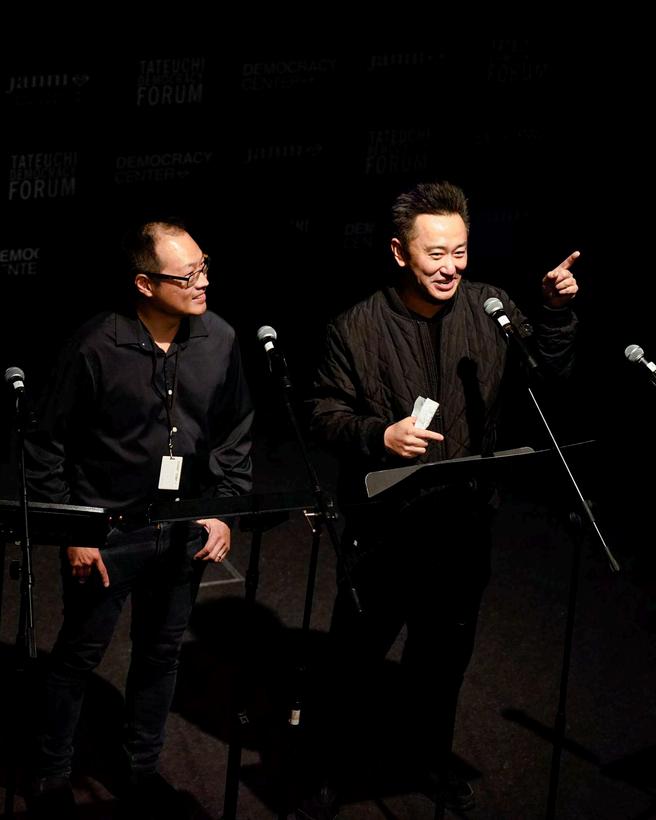


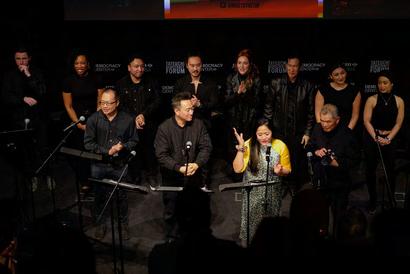


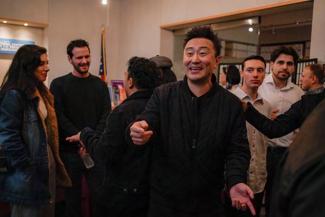
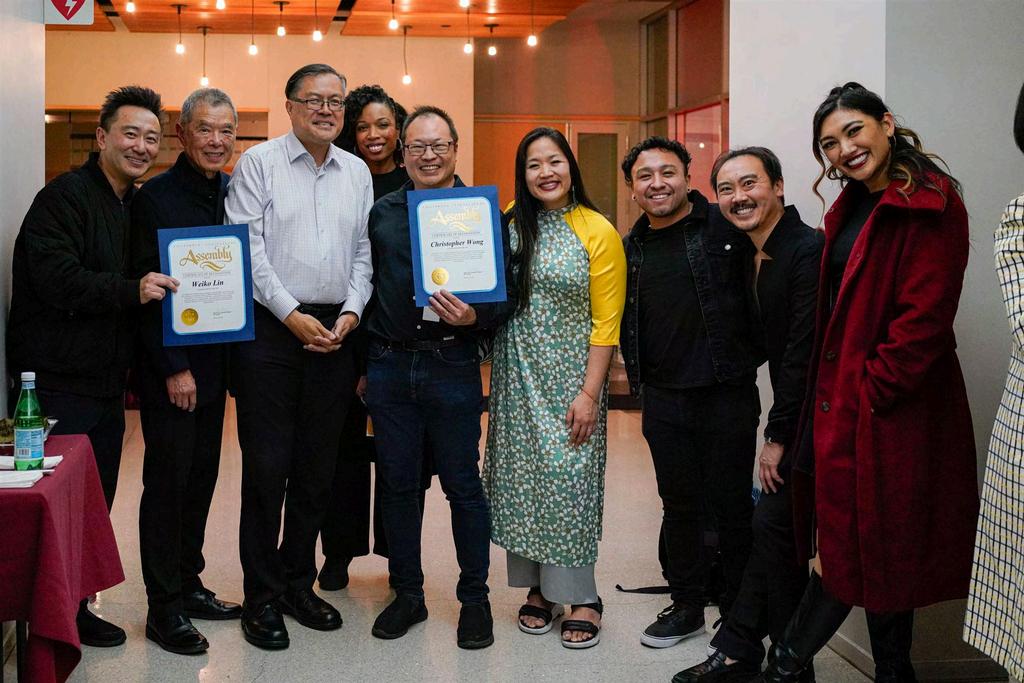


He is a director in the Ryan Murphy HALF Initiative where he shadowed on 911 Lone Star. A Sundance Collab Advisor, he was Academy of Motion Picture Arts and Sciences Nicholl Fellowship Finalist and Samuel Goldwyn Writing Award recipient. Prior to LMU, he was a tenured Associate Professor of Screenwriting at Emerson College and had taught at Northwestern University, UCLA Film and TV Professional Program, and Taipei National University of the Arts as a Fulbright Senior Specialist. A current-active member of Writers Guild of America West, he previously served as co-chair of the guild’s Asian American Writers committee. He is represented by Anonymous Content and United Talent Agency.
Weiko Lin grew up in Taipei, Taiwan. He had a unique path. When he immigrated to the United States at the age of 8 years old, he didn’t know any English and didn’t know he wanted to be a filmmaker. He recalled being asked by his drama teacher in middle school to audition for a Wizard of Oz musical. This took him by surprise. He observed people and tried his best to follow suit. Little did he know that his filmmaking journey would be so vibrant.
I asked Weiko Lin why he wanted to be a professor at LMU. He started the conversation with an anecdote about his late mentor, Lew Hunter, who encouraged him to pursue screenwriting when he was a young adult. Subconsciously, Lin wanted to carry Hunter’s legacy and form his own path forward. Later in his career, Lin taught at Northwestern University, Emerson College, UCLA, and Taipei Nation University of the Arts.
He said, “When I came to LMU, I discovered the importance of the school’s mission. Education shapes everyone as a whole. Not every university supports such wide collaboration. The faculty is very current and continues to create and develop projects while teaching the next generation of storytellers. This way, we can teach students even as the industry is ever evolving.” Lin walked me through his process in running the MFA Graduate Writing for the Screen program at LMU. He said, “I want to empower LMU screenwriters to take ownership of their career.” Last semester, he launched the first run of LMU’s screenwriting competition. The event involves student staffers, a slew of industry judges, and faculty members. The winners were announced on Deadline with support of SFTV at the end of the semester. Lin emphasized the importance of career development outside of the classroom.
Then, Lin and I spoke about his book, Crazy Screenwriting Secrets from the publishing company of Save the Cat! In the book, Lin detailed his take on the global market of film in Greater China and the screenwriting process as a culinary experience. For example, Lin described his writing structure in this manner: act 1 (the appetizer), act 2 (the entrée), and act 3 (the dessert) in order for audiences to understand the material easier. He wanted his chapters to be accessible, simple, and concise.
His musical, Rise to the Top, also portrayed these recurring culinary themes. The story follows a chef who is on top of his culinary empire and his journey to achieving the American dream at great sacrifice.

As Weiko Lin’s graduate research assistant, I witnessed the development of this vision firsthand. In February of last year, Weiko Lin and his collaborators, Christopher Wong (composer), Henry Chan (director), and Jenni Trang Le (producer), put on the first concert workshop stage reading of Rise to the Top at the Japanese Memorial Museum. Weiko Lin was always passionate about the Asian diaspora within the United States. Cultural identity is another theme that is important to him. He mentioned wanting to create a musical with a diverse AAPI cast. At this point in time, Loyola Marymount University’s theatre department is beginning rehearsals for their production of Rise to the Top. The show will run from December 4th-7th at 8pm Strub Theatre. (https://www.eventbrite.com/e/rise-to-the-toptickets-1090119359349)
When it comes to themes in his screenwriting, Lin discussed the essence of grief. He said, “Loss takes many forms. Even if you’re alive, events like divorce or relationship breakups are still a part of grief. Storytelling helps us connect, heal, and shape perspective. Grief and hope are my emotional engines. Not all my work is doom and gloom, but it is emotional.” Lin explained that his background is also heavily rooted in directing theatre productions, musicals, and stage projects. As he is currently transitioning to directing in his career, he expressed the importance of working with actors. He said, “I’m not going to micro-manage what we see on screen. I want to empower the actors. It’s a partnership. We’re collaborative storytellers.” Just this past week, Deadline announced Lin’s new feature film, Chalk.
Lin is partnering with Taiwanese filmmakers Nelson Yeh and Gisele Yeh (a sibling duo well versed in AAPI filmmaking). They are also collaborating with US producer Liucrative Media’s Dave A. Liu who recently executive produced Focus Feature release Didi. He said, “This script was an AMPAS Nicholl finalist. I wanted to incorporate my Taiwanese cultural roots when it was the right time for it to get made.”
I asked Lin if he had any advice for student filmmakers who are concerned about their futures. He said, “I see industry contraction as an opportunity. I know it’s easy to slip into anxiety. With any technology that comes, I think we should embrace it. Use it as a tool. No matter what happens, we should continue to work on our craft.” When he has his own doubts about the industry, he credits his managers at Anonymous content for supporting him. They’ve been his creative partners for 17 years and continue to help develop his projects.
In most of Lin’s work, AAPI representation, parentchild relationships, and love are prominent themes at the forefront. I asked him if there were other themes he would like to explore other than his upcoming projects. He said, “I’m interested in the Asian diaspora in the United States. Especially in places like California, there are so many kinds of Asian communities. In a Western context, I want to see how they intersect. I haven’t tackled it yet but I plan to soon.”
When Lin was accepted into the Ryan Murphy HALF initiative, he was beyond excited. He wrote and directed a short film based on the play Miki he wrote. Then, he shadowed on the show 9-1-1 Lonestar. He witnessed preproduction to, production. He learned every step of the way, from paper to screen. This was one of key moments that sparked his passion for film directing beyond screenwriting.
Finally, I asked Weiko Lin if he had anyone he would like to thank or acknowledge in his career. He said, “For me, I would say Henry Chan. He’s been a dear mentor, friend, and collaborator. From the beginning, he was a pioneer. I saw his name on prime time American television episodes as a kid. We talk to each other and understand each other’s taste. He’s been a great support throughout my career.”
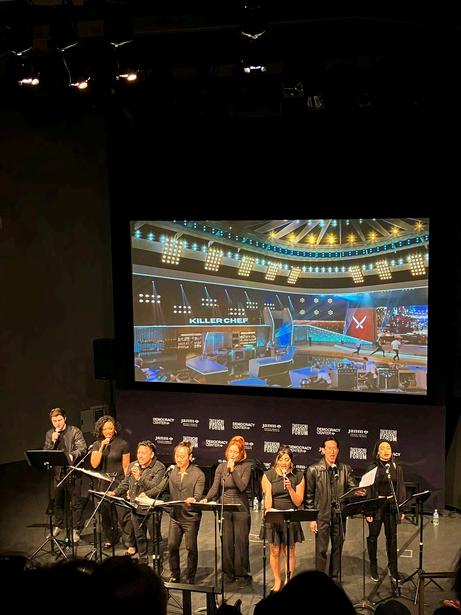




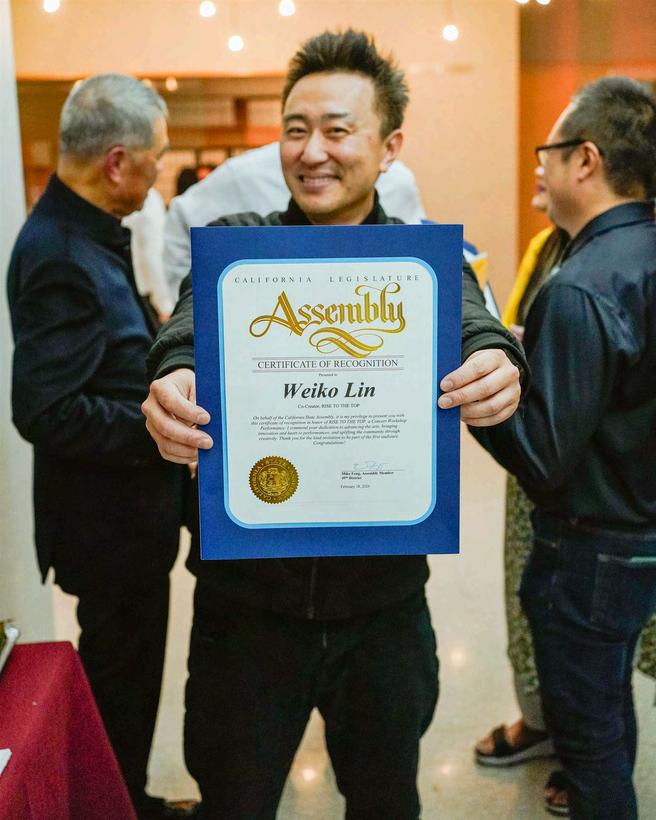

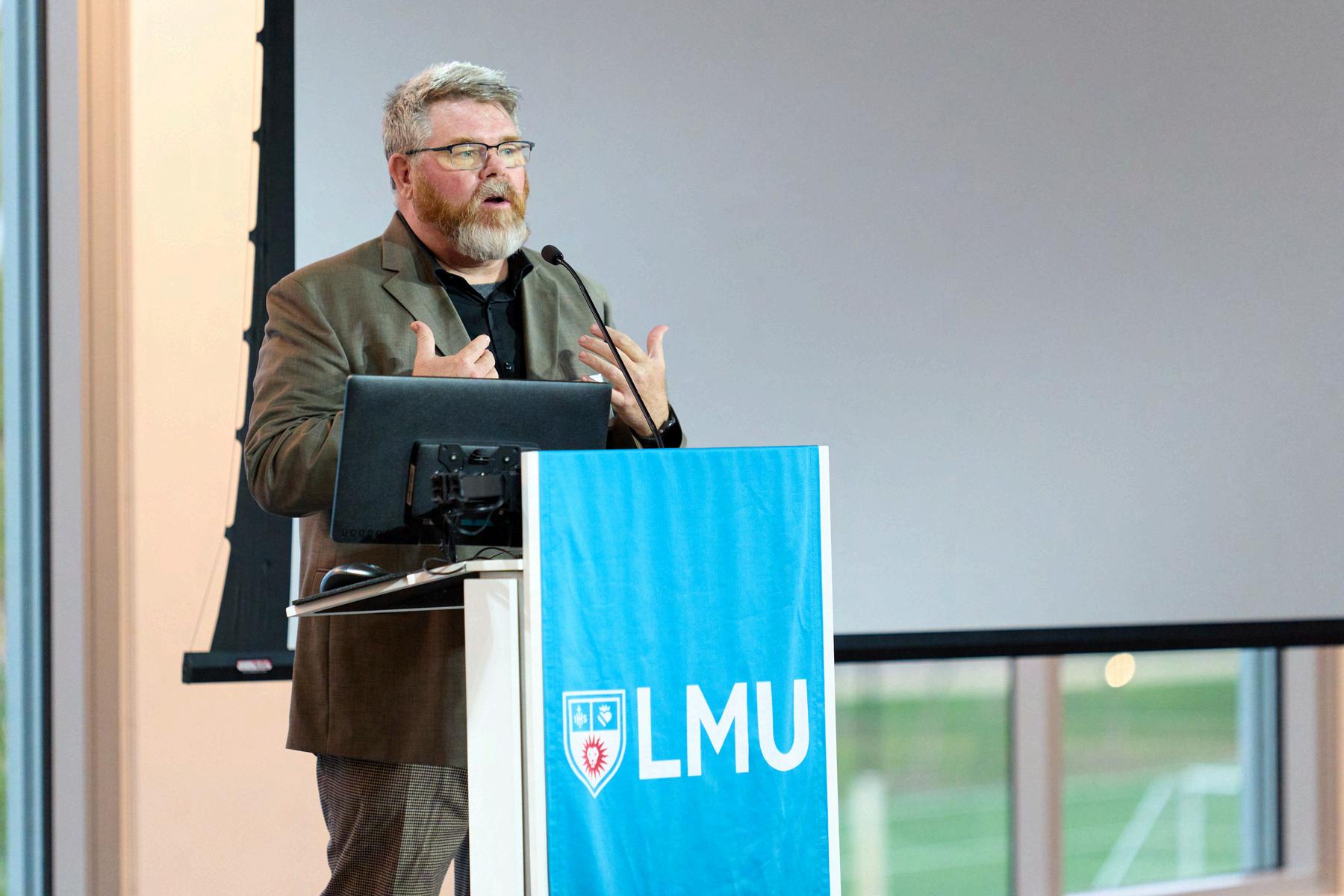


Michael Daley is the graduate program director of Writing and Producing for Television at Loyola Marymount University. Michael F.X. Daley is a television writer whose credits include CSI: Crime SceneInvestigationandtheCWshow Reaper, where hewrotetheseriesfinale.He’sworkedforNetflixon Maniac,HBOon TheLeftoversandBigLove,ABCon Secrets & Lies and Resurrection, TNT on Murder In The First, STARZon Boss,NBCon Crossing Jordan, ComedyCentralon That’sMyBush! andFOXon The X-Files. He is currently shopping various pilots and screenplays around town. Michael worked for Blindlight, writing video games. His credits include Ninja Gaiden forTecmo, Jet Li’s ‘Rise To Honor’ for Sony, Igor for Legacy Interactive, Shrek 2 for Dreamworks, and Dead2Rights: Redemption for Volatile Games. Michael has an M.F.A. in Screenwriting from LMU, where he now teaches screenwriting and serves as the Graduate Director for the Writing and Producing for Television program. He’s writing a book titled “The Writers Took Television”, interviewing TV showrunners including Norman Lear, Carol Mendelsohn, Chris Carter, Damon Lindelof, Tom Spezialy and Vince Gilligan. He originally hails from Syracuse, New York, where he got his B.A. in English CommunicationfromLeMoyneCollege.
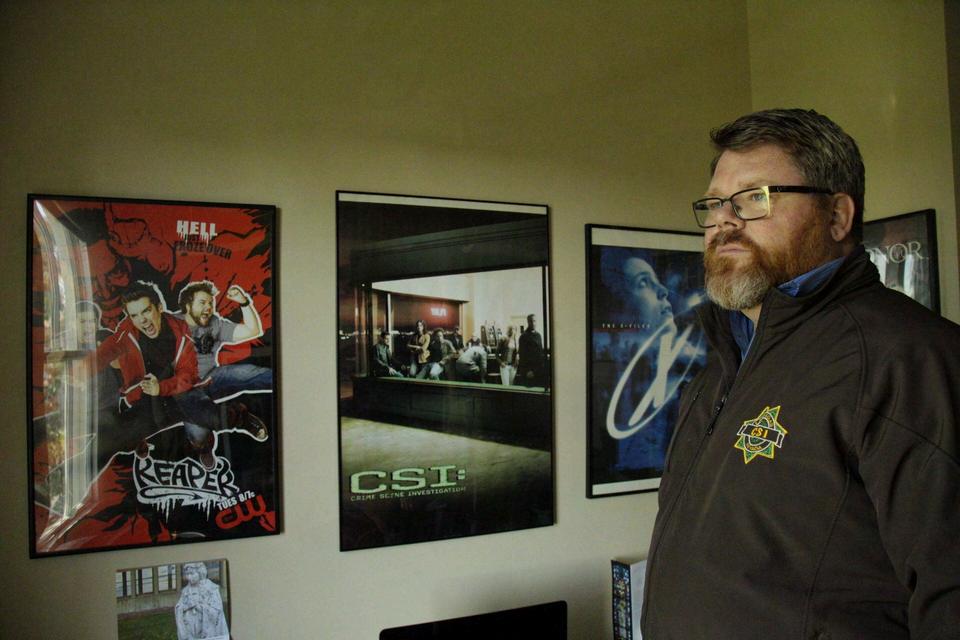


Michael Daley grew up in Syracuse, New York. Both of his parents were teachers. He ended up going to Le Moyne College for his undergraduate education. He wanted to do film, but there were no degrees in film there at the time. Instead, he majored in English Communication. On a whim, he decided to join the London study abroad program through Ithaca College. He said, “ Since everything was so close together, I took full advantageofmytimetraveling.Forspringbreak, I visited Moscow, Russia, before the Soviet Union ceased to exist. My friends and I also visited Ireland and Paris.” He mentioned how surreal it was to explore London because it was an abundant city of film, theatre, and culture. He said,“Iwasahugefanof Sherlock Holmes.Iwent to all the spots they filmed at. Characters like Peter Pan and Winnie the Pooh were created in London. I grew up seeing these icons and finally visitedthecitywheretheyweremade.”
In the next stage of his life, he moved to Los Angeles to study screenwriting at Loyola MarymountUniversity.Then,hediscoveredthathe


he enjoyed writing for television. As time passed, he picked up numerous jobs and writing assignments which contributed to his diverse portfolio. Even though he has done a lot of writing work, he knew he wanted to teachaswell.Heexpressedtheimportanceof giving back to his community through education.ThefirstplacehewentwasLoyola Marymount University, his alma mater. He said, “When Karol Hoeffner (the chair of the department at the time) asked me if I was readytoputothers'careersbeforemyown,I said yes. I told her, 'Why start now?' especially when I believed in doing right by people even if I wasn't the one who received those opportunities." Daley emphasized that filmmakers are not only artists who produce films.Aperson’scharacterisjustasimportant astheirwork.
We discussed his experience in working in video games. His game writing and television writingexperiencesweresimilaryetalsovery different.Hementionedthatheandhisfellow

writers operated like a writers’ room when deciding major parts of the story. It was a collaborative process. He had to consider the theme, dialogue, and even the world the characters lived in when writing these games. Ultimately, he felt that these experiences took placetooearlywhengamedevelopersdidn’tfully recognizetheroleofstorywritingliketheindustry doestoday.
I asked Michael Daley about his views on the current status of the television industry. With his experienceworkingonCSI,henoticedthatstudios paidattentiononlytoratings.Itwasmainlyabout driving up the numbers and the views. He said, “When streaming came along, it seemed like major studios were trying to make content that stood out to draw people in. They made everything for the majority of the population to getthosenumbers.However,theydidn’trepresent all communities, and this is why minorities and alternate identities were overlooked. When I interviewedshowrunnersformybook,theysaid,‘ Itwasn'tanagenda.Wewerejustluckysomeone cared.’”While the Hollywood system and streaming is still ever-changing, one thing stayed thesame:televisionhasthepowertomakepeople feel a sense of comfort and belonging. Speaking from personal experience, he enjoys seeing LGBTQ+-centric shows that display complex characters. As a member of this community, he can see how more authentic representation is comingonscreen.
He gave some great advice on pitching. He said, “Filmmakers at LMU should be more confident. Ask yourself why you’re bringing this story to light.Don’tbetooarrogant,butdon’tbackofftoo much. I have underestimated my strengths at times.
We need to forget about that and push for our ideas.” When it comes to television, he said, “Sometimes, you’re not the creator of theideas.Inawriter’sroom,you’regiventhe idea but have to figure out how people will connecttoit.EveryCSIepisodeIwrote,Itried tofindanaspectIwaspassionateabout.”
He is currently working on a book that examines television writing techniques and the history of television writing. For the past several years, he has interviewed popular showrunners about their experiences. He is also working on a play about his personal life. His mother passed away 20 years ago, andhehadn’tcomeouttoheryet,sotheplay is about what life would’ve been like if he had.
Finally,Iaskediftherewasanyonehewould like to thank or acknowledge who has supported him in his career. He would like to recognize the creators of Reaper, Michele Fazekas and Tara Butters, for encouraging him to keep going in the industry. He would like to thank his parents for loving and believing in him. He recalled a memory from his 21st birthday when they bought him a camcorderasasignofsupport.Byextension, he would also like to thank LMU faculty members for their inspiration and tireless dedicationtotheirstudents.



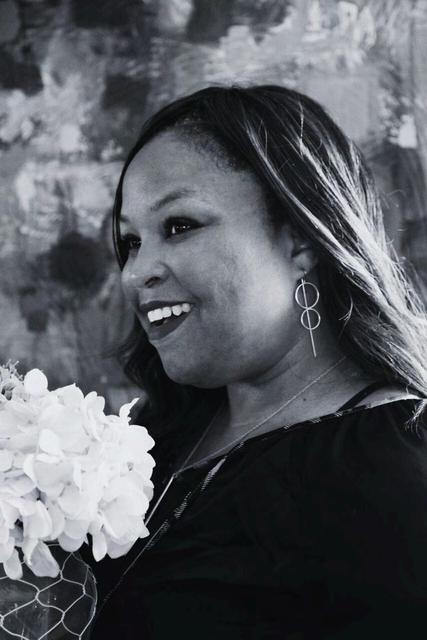
WRITTEN BY: MILLA NGUYEN
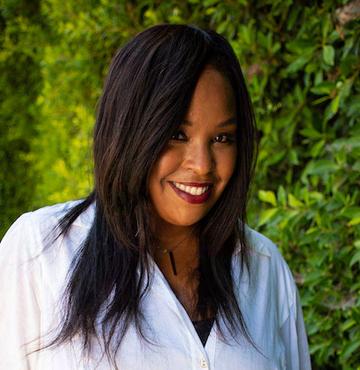
Rochelle Webb is a Clinical Assistant Professor of Entrepreneurship at the College of Business Administration. She is also the co-director of the Master in Entertainment in Leadership and Management program. Rochelle has specialized in global brand marketing across entertainment, retail and technology sectors. She has worked across brands such as Activision (Franchise: Call of Duty), Quiksilver (Brands: DC Shoes, Quiksilver, Roxy), Apple (Product: iPhone) and Visa. She is globally recognized for her record-breaking brand and product launches where she won media plan of the year and a Grand Effie for Call of Duty’s Black Ops 2 and MW3 product launches. She left corporate America to run her marketing and business strategy consultancy, The Dialectic Compound, aiding start-ups with their growth strategy and execution. Six years ago, Rochelle launched a new venture, Optimist Made. It is the new world way of shopping around the world, without actually going there yourself. It makes the inaccessible, accessible. It gives developing fashion designers a destination where they can have a voice to be discovered. When a product is sold, Optimist Made then gives back to productive charities around the world. Rochelle is a Board Member for Compton Community College and Ad Relief. She has advised start-ups, such as Neat Capital, Blue Fever, and the Make in LA Accelerator. She completed her undergraduate studies at Boston College in Chestnut Hill, MA, and graduated with her MBA from UC Berkeley's Haas School of Business in Berkeley, CA.


I asked what Webb’s favorite part of teaching at LMU was. She said, “LMU is big on ensuring their students and faculty have a strong moral compass. Above all else, you’re ethically honest and fair. LMU aligned with my goals.” She spoke of feeling inspired by her students and continuing to work hard on her own ventures. I asked if she had any advice for young, emerging entrepreneurs. She said, “In class, I have a lot of students who lust for something we’re learning about. However, they mention their parents want them to work at the family company. You can tell that they have no interest in that. If the parents don’t know, the kids don’t know what to do either. I think that communication is essential.”
Another topic we discussed is what makes a global brand. Webb said, “I’ve worked for so many blue chip companies. I think companies need to be able to adapt and change. I’ve seen every type of leader. These leaders are given information from the customers and choose to ignore it. It’s not always about what you want.” This applies to the widening gap between major film studios and the Gen Z + Millennial consumer base. These two groups are the largest consumer pockets in industries such as film, music, fashion, and gaming. Gen Z patrons spend money going to movie theaters and streaming platforms. While studios are afraid to take certain risks on new forms of storytelling, Gen Z's appetite for content grows at an even faster rate.
Webb discussed her franchise work on Call of Duty. I asked what kind of research she had to do on such a vastly different consumer base. She said, “I played the games but I wasn’t a gamer. I went to Walmart, Best Buy, Target, and GameStop. I purposefully stood by the Call of Duty aisle and listened to the conversations about the game. I needed to understand the customer unfiltered. Once I got to Activision, we all did our research.” She ended up working for Quiksilver, a sportswear apparel brand. There, she enjoyed working in teams and was able to innovate new projects. Webb worked extensively at Visa and their sponsorships with the Olympics, the World Cup, and more. She oversaw a project where Visa live-streamed moments of the World Cup in Tokyo, Mexico City, London, and Times Square in New York. Visa and its partners bought out screens in the pedestrian area in the middle of Times Square that flashed Visa’s branding and the tournaments. While this was rewarding, she didn’t just want to be a cog in the machine in the future.
After a long career working for major brands and companies, Webb took matters into her own hands. She started a consultancy business for startups, where she gives business-building advice. She wanted start-up founders to be able to afford her services. Her mantra is leaving the world a better place, so she later founded her own company, Optimist Made. She recalled shopping in London with her mother and thought about the fashion-selling industry. The main purpose of Optimist Made is for consumers to purchase fashion that is sold in countries around the world. Conversely, Webb wanted to help smaller fashion designers reach a global market. She said, “I see designers, and they tell me I’ve changed their lives. I love helping people. Being a solo entrepreneur, it’s not about the titles or the money. It’s about my own personal impact on the world.”
Rochelle Webb is an advisory council member at the Harvard Business Review. The review compiles relevant case studies on business and different industries. She participated in the creation of a supply chain management case study and expressed that clinical-based faculty can bring real-world working experience to the review. Regarding upcoming projects, Rochelle mentioned that she is consulting a company that is developing an AI-driven platform that helps families prepare for end-of-life situations. She said, “I’m helping them with customer segmentation and market research. I want to see how this will impact future generations to come.” Webb is also working with Arlan Hamilton, an investor and entrepreneur. Together, they’re setting up a conference and program to transform people of color, women, and members of the LGBTQ+ minority groups into starting millionaires. She said, “We want to train up-and-coming minority leaders to capture wealth and see how they can maintain it. Looking at the top 3%, I want to see more people of color up there. Our goal is to create 1,000 women, people of color, and LGBTQ+ millionaires.” Last, Rochelle is integrating sustainability into Optimist Made. She said, “The fashion industry is the #1 waste producer behind oil. I will create a prototype, and I will launch it soon.”
Finally, I asked her if there was anyone in her life she would like to thank for supporting her on this journey. She said, “My mom. She’s the perfect example of the type of parent that I would want to have. She immigrated from Jamaica. Every job she has had wasn’t a passion but a way to survive. As her children, we got to choose. She’s always excited about what I’m doing. When I launched Optimist Made, she supported me. Next, my personal board of directors. There are thought leaders in different ways. They help me make my decisions. They help me get through difficult times.”


BY:ROCHELLE WEBB










written by: Davis Grant
The first thing you're greeted by in MichaelKang'sofficeisthemovieposters of films he's directed. This includes The Motel (2005), West 32nd (2007), and 4 WeddingPlanners(2011).Onthesurface, these movies have seemingly little connection, being of entirely separate genres and tones. However, all of these projects are connected to his overall journeyasafilmmakerandtheinfluences of his favorite directors, such as Sidney Lumet and George Roy Hill, all of whom he is inspired by. Michael Kang is a filmmaker, visiting professor, and the Graduate Director of Production for the School of Film & Television at Loyola MarymountUniversity.
When watching his first film, The Motel, about a 13-year-old boy going through pubertywhileworkingatasleazymotel,I felt shocked to learn it was not based on Kang's actual experiences. It was that realisticandviscerallysurreal. Kanggrew




up in Rhode Island, and both of his parents were in academics. He dabbled in music, photography, and comic books. Eventually, hefellinlovewiththetheater.MichaelKang attended New York University for Dramatic Writing, where he learned how to write scripts and found his passion for writing screenplays. Kang practiced his craft by creating short films and web series. Michael Kang was later accepted into the Sundance Writing and Directing Lab. Eventually, he met Miguel Arteta, who helped secure him funding and creative control over his first featurefilm.Downtheline,thefilmwonthe Humanitas Prize in the Independent Feature Film category, and was nominated for an Independent Spirit Award for Best First feature.Additionally,Kangwashonoredwith anArtist’sResidencyGrantattheMacDowell Colony. He is a recipient of the Geri Ashur Award for screenwriting from the New York FoundationfortheArts.




He also received a fellowship through the ABC / DGA New Talent Television Directing Program. Kang is also a member of the Directors Guild of America. Still, it wasn't alwaysasmoothjourney.Kanghadtomake difficult decisions regarding his prospects and his films. In past projects before any major successes, Kang purposely wrote ethnically ambiguous characters to help attract investors and producers who were hesitantaboutgreen-lightingfilmswithnonwhite leads. After he embraced his ethnic identity, that’s when he was able to find his true creative voice. While he does not believe the Hollywood system is perfect, he expressed his satisfaction with increased diversity in the industry over the past two decadesandhowitfinallyfeelsmoretypical for executives to pick up these stories. A slight concern of his is the decreasing amount of productions in the Los Angeles area and the increasing production costs. However,hebelievesallmoviescomedown to the stories and if those are worth telling. As long as the audience is engaged with a great story unfolding, expenses fall by the wayside.
Asforproductionbeingaviablecareerpath, he laments Los Angeles is still the central hub for the film and television worlds. However, productions are taking place in cities such as Atlanta, Toronto, and Vancouver. This process will draw more creativesinthecomingyears.Iaskedabout the new emergence of AI and digital technology. Kang expressed his concerns about the topic. Simultaneously, he is optimistic. He believes that good art will always be at the forefront of whatever is being pushed out of the content mill and thatartistsshouldnotneedtoworryaslong astheyremaindedicatedtotheircraft.
InadditiontoteachingatLMU,Kangisstill working on his slate of films. He recently finished an action-comedy screenplay that he'sactivelytryingtogetofftheground,as well as other projects. Kang is happy teaching at LMU and believes the production program has a more holistic approach to storytelling than other film schools. He mentioned the importance of Jesuit and community values and the idea thateveryonecanhaveaseatatthetable.
Before we concluded our conversation, he described several people throughout his lifewhowereinstrumentaltohiscareer.He is thankful to Wayne Wang, a filmmaker whohiredhimforhisfirst2ndunitjobona set. He mentioned Miguel Arteta, who acted as a mentor figure and helped kickstart projects like The Motel. Tom Verica who helped mentor him, as well as his family, including his parents and brother. Finally, he advised his students to connect with filmmakers who are genuine and authentic to themselves. Not the collaborators who only focus on transactionalconnections.Whiletheworld of filmmaking is certainly not perfect, the universecontinuestogiveopportunitiesto filmmakerswhodeserveit.
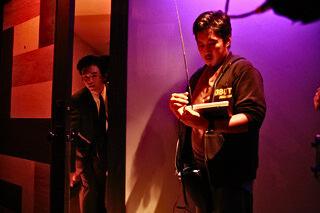
Once more, I want to reiterate a tremendous thank you to everyone who is a part of this process. The journey has not been easy but that’s what makes it rewarding and special. We are committed to making a magazine that shines a light on filmmakers of all backgrounds. We allude to our own stories.
EDITOR IN CHIEF + FOUNDER
MILLA NGUYEN
GRAPHIC DESIGN BY:
MILLA NGUYEN
FACULTY ADVISOR
WEIKO LIN
DIRECTOR OF VISUAL MEDIA
EVAN ODINSOFF
DIRECTOR OF CONTENT
KURTIS WILLIAMS
DIRECTOR OF EVENTS
ANNA LEI
BUSINESS & DATA CONSULTANT
ANUSHA NATARAJAN
BETH SERLIN
SHANE ACKER
GLENN GEBHARD
RODGER PARDEE
MIRANDA BANKS
WEIKO LIN
MICHAEL DALEY
ROCHELLE WEBB
MICHAEL KANG
MARIA MURPHY
DAVIS GRANT
KAHLIL MASKATI
ASMAR ISAYEVA
JACOB CHANDLER
PHOTOGRAPHY UNIT + CREDITS
JULIAN VALGORA
EVAN ODINSOFF
ORLANDO PELAGIO
ANDREW CASTRO
HOLLY FISCHER
CHRIS KAMMERUD
VIDEOGRAPHY UNIT
EVAN ODINSOFF ANDY CORNIELLE
TO:
LOYOLA MARYMOUNT UNIVERSITY
LMU SCHOOL OF FILM AND TELEVISON
LMU ITS STUDIO
MICHAEL SITNIKOV
OUR READERS
TONY BUI
KESHIA HANNAM
KAREN JOSEPH ADCOCK
SHRUTI PAREKH
GABRIELA DEMATTEIS
VAHAN BEDELIAN
MEHRIN SALEEM
MAKAYLA RABAGO
LIBBY MOREHOUSE
FOLLOW US TO STAY UPDATED: WEBSITE: WWW.ALLUSIONMAGAZINE.COM INSTAGRAM / FACEBOOK: @ALLUSIONMAGAZINE TIKTOK: @ALLUSIONMAG
LINKEDIN: ALLUSION MAGAZINE
